







Martin Frobisher
Planning for an environmentally sustainable railway
Rob Cairns

Charlotte Woodhall-Jones
EXCLUSIVELY FOR RAIL INDUSTRY LEADERS
The journey to innovation billionaires


Relishing the challenge

Creating an innovative culture RIA’s 14th Innovation Conference


























April 2024 SUSTAINABILITY ANDTHE ENVIRONMENT
ANGELA CRUICKSHANKS Blowing the environmental sustainability trumpet!

Get on track with Elite interlocking blocks and barriers




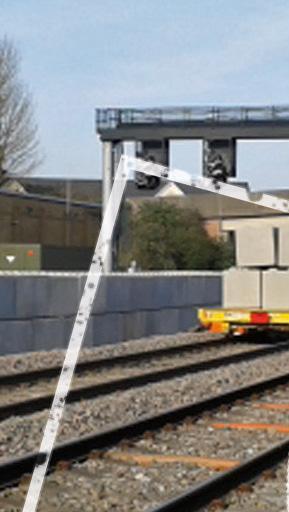

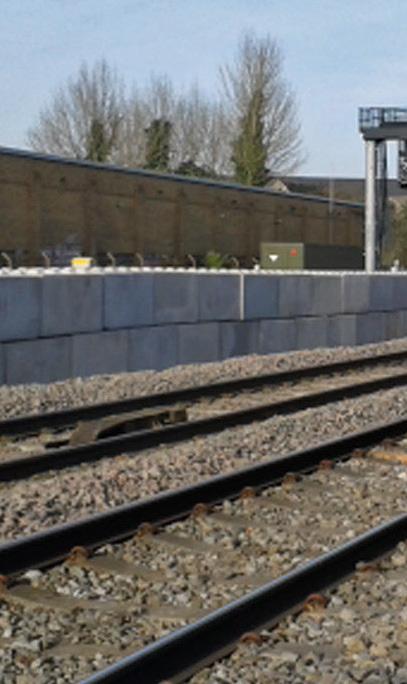















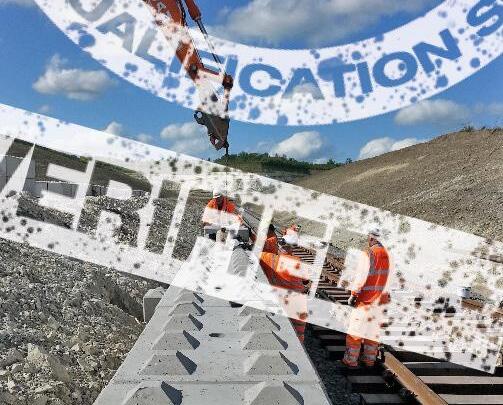

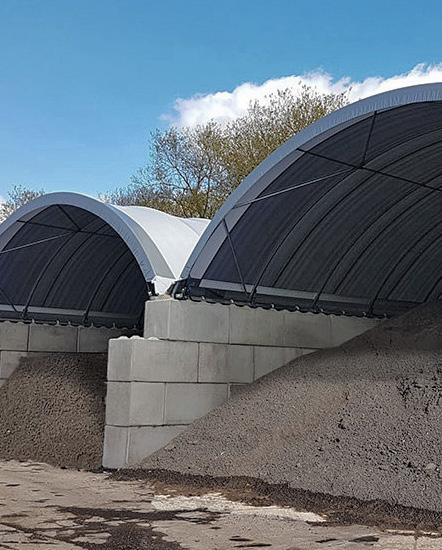




















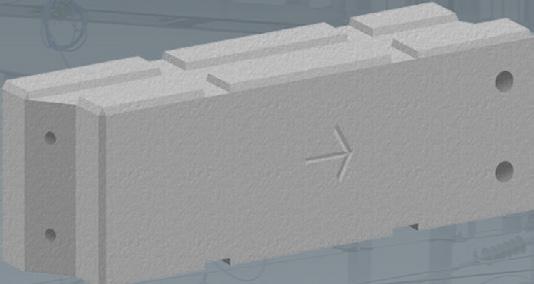
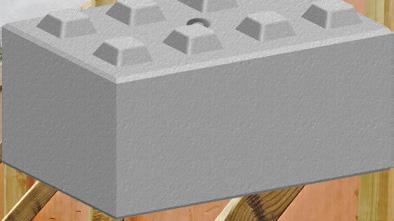








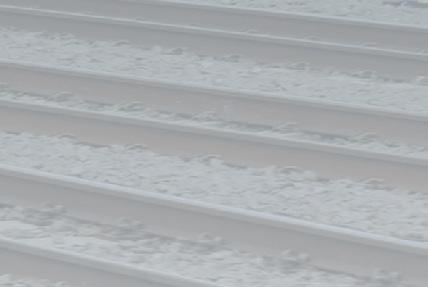









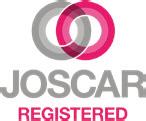






For more information
Everywhere on rail networks Elite products are seen in use British made Suppliers to 2012 London Olympics, 2014 Glasgow Commonwealth Games and approved suppliers to Tideway, Crossrail and HS2 (fully compliant transport)
KM 642263
phone 01952 588 885 or browse www.eliteprecast.co.uk or email sales@eliteprecast.co.uk
Workforce protection barriers avoiding all line closures with adjacent line open
Rockfall prevention with our multi-purpose Jersey barriers
Hoarding stabilisation utilising Elite Duo interlocking blocks
Large ballast bays with walls constructed from our Legato interlocking blocks
Large scale embankment retention using the versatile Legato blocks
Workforce safety refuges built from Elite Duo blocks
“Rally
Wfor the benefit of all rail users”
elcome to the latest edition of Rail Director and the first as we enter Control Period 7 (CP7). In announcing the start of the £45.4 billion rail improvement plan Network Rail’s Chief Executive Andrew Haines has spoken of the need for the whole industry “to rally for the benefit of all rail users” in tackling climate change, safely improving train performance, and adapting and responding to changing commuter habits while managing an ageing infrastructure. It is a challenge I am confident the industry is ready and raring to take on.
It certainly won’t be easy, but what can’t be lost is the overall role of the railways to connect people and goods with where they need to be. Sustainability and the environment will be at the heart of everything we do as an industry over the next five years, particularly when we look at climate change and the impact it can and does have with increasing regularity on the rail network.
With that being the case, it seems very relevant that the theme of this edition is sustainability and that environmental sustainability professional Angela Cruickshanks is this month’s cover feature. Angela has spoken about how there is much more to the topic of sustainability and the environment than just traction power. Up until the end of last year, Angela was Sustainable Rail Solutions Lead at the Rail Safety and Standards Board and is now Environmental and Sustainability Manager at AtkinsRéalis. Read more about the good work being done in her field on page 6.
On the topic of CP7 and sustainability I’m delighted that Nigel Wordsworth has spoken with Network Rail’s Group Engineering Director Martin Frobisher about the plans to combat climate change and reduce the environmental impact of the UK’s railway. There is some fascinating work going on, so it is very interesting to read the feature on page 10 about some of the initiatives.
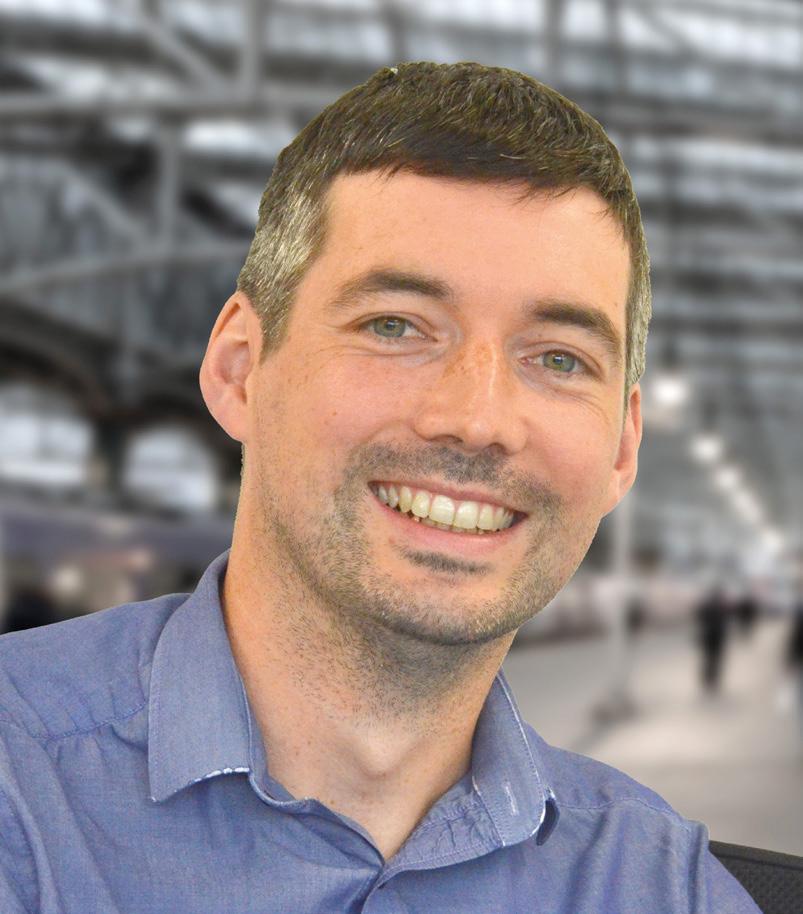
This month we’ve also spoken with HS2’s Innovation Manager Rob Cairns, who highlighted the monetary and carbon savings made through innovation. He explains on page 32 how the aspiration is for the project to become an innovations billionaire, saving a billion pounds of efficiencies from the innovation programme. That would be an impressive achievement and it is one Rob is confident of achieving.
Sticking on the theme of innovation, which is central to the delivery of a sustainable railway, it was a real delight to be in Wales for the Railway Industry Association’s Innovation Conference. It was really heartening to hear the speakers talk about collaboration and even more exciting was the appearance of robot dogs, being showcased by several of the universities attending the event. You can read our review of the event from page 45.
As always, I’d like to thank everyone who has been involved in this month’s magazine along with you the readers. Work is well underway on the next edition which will be centred around train operators, with some highprofile interviews lined up. Those wishing to feature their products and services in May’s edition should contact the sales team before all the space is taken.
All the best,





 Longhorn Editor
Longhorn Editor
Sustainability and the environment will be at the heart of everything we do as an industry over the next fi ve years



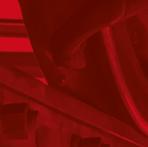




























Rail Director magazine and Railbusinessdaily.com are assets owned by the Railway Industry Association. Railbusinessdaily.com delivers more than 70 stories a week to +73,000 rail industry professionals in our daily 7am newsletter. If you have not already subscribed, it’s free and it’s easy to do so at www.railbusinessdaily.com, please also encourage your colleagues to do the same. This is the very best way to keep abreast of what is happening on the UK’s railways. There is a digital copy of Rail Director on our website.
RELIABLE SYNCHRONISED MOBILE LIFTING JACKS SERVICING TRAINING LIFTING Lifting and inspection equipment you can rely on for all maintenance of rail vehicles. With over 40 years’ experience of high quality, heavy duty vehicle lifting, Totalkare combines world class products with industry leading support to facilitate effective maintenance and repair. LIFTING JACKS & BOGIE LIFTS BOGIE LIFTS COMPLIANT WITH DIFFERENT RAIL GAUGE SYSTEMS 6,000 - 14,000KG HYDRAULIC LIFT PLATFORM HEAVY DUTY
Danny
INTRODUCTION 3 April 2024




April 2024 6 Blowing the environmental sustainability trumpet! Environmental sustainability professional Angela Cruickshanks believes that good work is being done in her field, it just isn’t being talked about 10 Planning for an environmentally sustainable railway Martin Frobisher, Network Rail’s Group Engineering Director, outlines his plans to combat climate change and reduce the environmental impact of the UK’s railway 14 The backbone of a more integrated transport system Rufus Boyd writes about the short-term challenges and long-term opportunities of integrating rail with other modes 22 Assuring the future of rail Serco Rail Technical Services has developed a specialist unattended Remote Condition Monitoring System for inspecting OLE 24 Using algae to capture carbon A trial taking place at Berwick-upon-Tweed station is testing the feasibility of using microalgae bioreactors to capture carbon around stations 26 Setting the platform to connect places The inaugural Connected Places Summit has been held in London. Rail Director reports from the two-day event 32 The journey to innovation billionaires HS2’s Innovation Manager Rob Cairns explains more about the innovation that isn’t just transforming this project, but the rail industry and beyond 36 Relishing the challenge SYSTRA’s Charlotte Woodhall-Jones has been
Women in Ground
wants to use
a role model for her discipline and to all women in engineering 40 Driving higher standards and lower carbon for leather for passenger transport Muirhead has unveiled a £14 million ‘Super Tannery’. Mike Thompson and Kate Gallacher explain more. 10 14 36 CONTENTS 4
named one of the Top 20
Engineering. She
this recognition to be
44 Creating an innovative culture
RIA has held its 14th Innovation Conference, this year taking place at the ICC in Wales and featuring high-profile speakers
50 “Shining the light on the youth in our industry”
The contributions and achievements of the young professionals who are driving the industry forward have been celebrated at this year’s Young Rail Professionals’ Annual Awards
54 Rail industry raises over £130,000 sleeping out
The money raised from the Railway Children’s Sleepout fundraiser will be used to help thousands of vulnerable children
58 Striking a chord with the railways
When Robb Weir isn’t working as a Customer Experience Leader for LNER, he’s lead guitarist and songwriter for British Heavy Metal rock band The Tygers of Pan Tang. He shares his story
64 Invention, international collaboration, and diligence
East West Rail’s Innovation Manager Daisy Chapman-Chamberlain has been exploring all things fire on a recent trip to Italy
72 Networking – your marketplace to shine
As we enter the era of CP7 funding this month, RBD Community asks: is 2024 the ultimate year for networking?
78 Start of five-year, £45.4 billion rail improvement plan
As Network Rail outlines its plans for CP7, Chief Executive Andrew Haines has said that delivering a better railway for passengers and freight users is at the heart of the new five-year investment plan
86 Movers and shakers
Richard Salkeld has been appointed Head of Communications and Partnerships at Lumo and Hull Trains. He answers questions about the role
90 Celebrating community-led projects
An inspiring range of initiatives, delivered by community groups, partnerships, and volunteers across Britain, have been celebrated at the 2024 Community Rail Awards


April 2024
Tel: 01132 082620 Sales: 020 7062 6599 Editor Danny Longhorn danny@railbusinessdaily.com Designer and Production Manager Debbie Nolan Writers Rosie Crampton Fiona Broomfield Nigel Wordsworth Advertising Team Christian Wiles chrisw@railbusinessdaily.com Amy Hudson amy@railbusinessdaily.com Published by RBDMedia (an asset of the Railway Industry Association) trading address 15 Mariner Court, Calder Park, Wakefield WF4 3FL Printed by The Manson Group © 2024 All rights reserved. Reproduction of the contents of this magazine in any manner whatsoever is prohibited without prior consent from the publisher. For subscription enquiries and to make sure you get your copy of Rail Director please ring 01132 082620 or email info@railbusinessdaily.com. The views expressed in the articles reflect the author’s opinions and do not necessarily reflect the views of the publisher and editor. The published material, adverts, editorials and all other content is published in good faith. Image: AtkinsRéalis CONTENTS 5
Environment and sustainability professional Angela Cruickshanks believes that good work is being done in her fi eld, it just isn’t being talked about






Blowing the environmental sustainability trumpet!




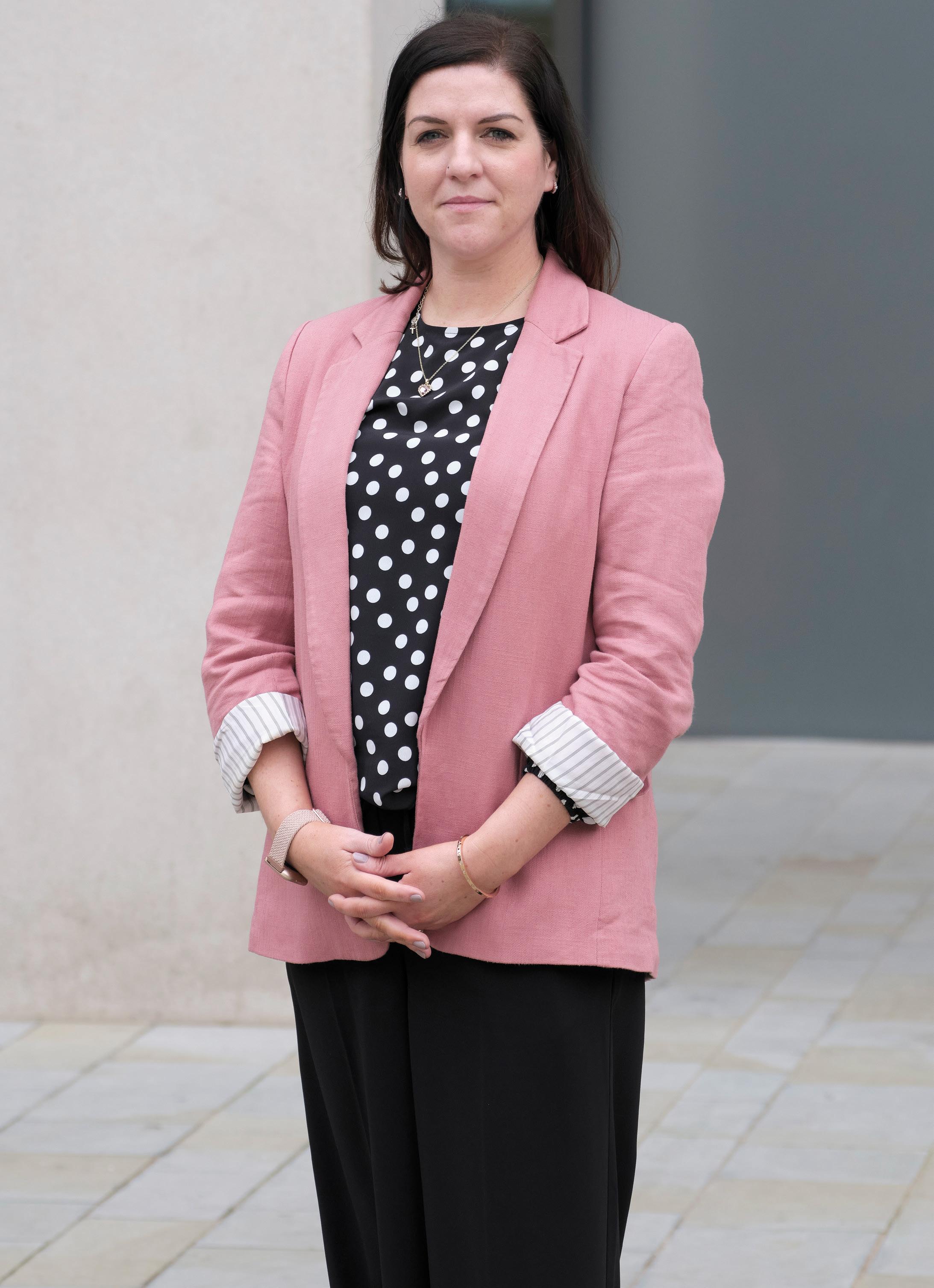
SUSTAINABILITY 6 April 2024
Currently, any discussion on sustainability and the environment in rail seems to revolve around the Government’s zero-carbon targets and how (or if) they will be achieved.
The current target is for diesel-only trains to be phased out by 2040 and for the railway to be a netzero emitter of carbon by 2050. Scotland has set its own targets, five years earlier than the National Government’s.
The obvious solution is to electrify the entire railway by 2050, with diesel-only trains decommissioned by 2040 and diesel-electric hybrids removed 10 years later. However, the cost of doing this, and the time that would be needed to carry out the work, makes this solution impractical and has led to proposals for trains powered by hydrogen, which is a clean fuel, and by batteries, which can be charged at intermediate stations and so do not need the whole line to be electrified.
However, there is a lot more to the topic of sustainability and the environment than just traction power. To learn more, Rail Director spoke with Angela Cruickshanks who, until the end of last year, was Sustainable Rail Solutions Lead at the Rail Safety and Standards Board (RSSB). She is now Environment and Sustainability Manager at international engineering consultancy AtkinsRéalis and has spent her entire career working in this field, first on the Olympic Park project in London and then as Environment Manager with Network Rail.

Bringing management on board
Sustainability and environment professionals tend to be grouped with specialists in other fields, such as health and safety. While this, on the face of it, might be thought to mask their environmental ‘voice’, Angela feels that the grouping has positive benefits.
“Good sustainability and environmental management has its reputational and financial benefits,” she explained. “Health, safety, and environmental incidents are both damaging

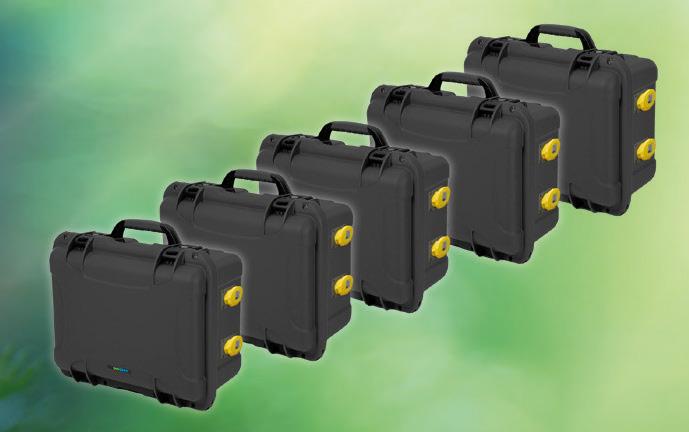


Nature-based solutions should certainly be considered at the design stage

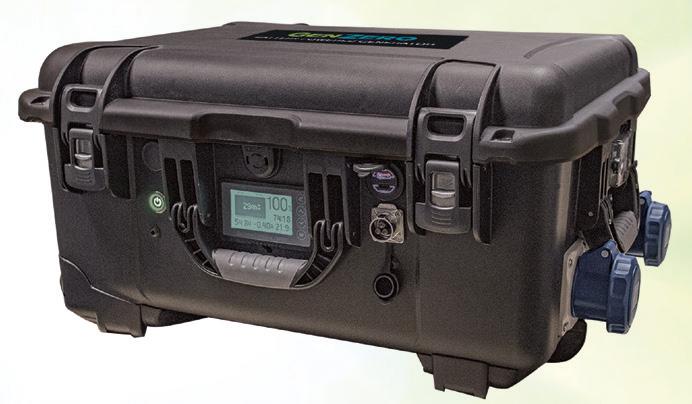











T: sales@nightsearcher.co.uk E: +44 (0)23 9238 9774 W: www.nightsearcher.co.uk BATTERY POWERED GENERATORS PROVIDING CLEAN AC POWER IDEAL FOR TUNNELS, REMOTE LOCATIONS OR WET OUTDOOR USE Free from Noise and Exhaust Fumes REPLACING OLD PETROL + DIESEL GENERATORS 3000+ CYCLES 600W 1500W 3000W MODELS: Optional Expandable Battery Packs • Ultra-Rugged Rugged IP67 Waterproof Case With Lifetime Warranty • Rechargeable LifePO4 Battery • Extendable Handle • RCBO Protection • Fast Charging Multiple Ports • LCD Display • Pure Sinewave BRITISH ENGINEERED DESIGN To find out more: CLEAN ENERGY - ZERO EMISSIONS 240V OR 110V MODELS AVAILABLE IP67 DESIGNED FOR INDUSTRIAL USE Add up to 8x more power 13860Wh Weight: 18kg Each | Size: 429 X 328 X 236mm Capacity (Wh) 1540 Each Increase Capacity 1989-2024
SUSTAINABILITY 7 April 2024
Images: AtkinsRéalis

We also need to be better at promoting sustainability benefits because there is a lot going on in the climate change adaptation space
to an organisation and the severity can be catastrophic, so the risks need to be managed well.
“Today, with the added scrutiny that environmental matters are receiving, a mishap or failing is equally newsworthy and equally damaging. This is giving impetus to companies striving to improve their approaches to sustainability and the environment.
“People tend to think that environmental initiatives such as renewable energies cost more but when you look at whole-life costs, the long-term return on investment is considerable and people are now starting to understand that.”
Public discussion on emissions and net-zero carbon helps to open the door to other sustainability themes, such as social sustainability, natural capital and biodiversity, air quality, and noise management, Angela added.
“So, it’s not just a case of saying, ‘we’re going to use low carbon materials and design it out of a project’it’s about understanding the integration across all of the sustainability issues identified on a project.”
Bringing benefits to projects
Angela points to a standard track maintenance job taking place overnight or at the weekend. Trackside neighbours may complain about the noise that disturbs their sleep. However, change the three noisy diesel generators for battery packs and not only do the emissions disappear, but the noise drops as well.
She says health and safety considerations can extend to wider environmental practices. “Everyone is responsible for the safety of their colleagues and the public – that could include the safety of the environment. Workers on the front line are more and more exposed to noise pollution, poor air quality and damage to the natural world, which means there is a vested safety interest too.”
In one case, a rail worksite generated 48 per cent of its power from renewable energy during winter.
“Over nine weeks, we diverted 10,000 litres of diesel away, reducing pollution and noise, and improving air quality,” she said.
Improving communications
In some ways, the environmental focus seems to have changed. Blackfriars station in London reopened in 2014 with 4,400 solar panels on its roof, making it the world’s largest solar-panelled bridge. A few months earlier, two wind turbines were installed at ScotRail’s Bathgate depot, saving almost eight tonnes of carbon dioxide a year. Today, however, when several new stations are being opened each year, there seems to be less of a focus on alternative energy.
“It’s probably more about communication than a change of focus,” Angela commented. “There is a lot of brilliant work going on, we just need to talk about it more. At AtkinsRéalis, I am inundated with requests for help with bids, to give examples of how we can meet the environment and sustainability criteria. We’re always working to improve how we share these examples and stories internally. At RSSB, we also developed some great tools and worked collaboratively with industry partners to develop and deliver them. With better communication, we can reach more stakeholders to embed such tools into the industry as a whole, recognising that the industry is vast and sometimes we only reach a small section of them as sustainability professionals.
“We also need to be better at promoting sustainability benefits because there is a lot going on in the climate change adaptation space. Even if it’s a localised case study, it would give a spur to other projects around the regions.
“There are always questions about feasibility, because to invest in sustainability you need to do so up front, so you need some clear data to inform your decision.”
Need for consistency
Looking to the future, Angela thinks we shall see more nature-based solutions to challenges such as erosion and flooding. “Replacing engineeringbased solutions with nature-based ones can improve biodiversity, reduce carbon, and improve air quality. Nature-based solutions are more environmentally friendly, and more aesthetically pleasing for people using the networks. Usually there is more than one benefit from good sustainability practices.
“Depending on what it is and what the challenges are, there are areas around the network, around substrata and flooding, which could actually be managed better through nature-based solutions than by re-engineering solutions. Nature-based solutions should certainly be considered at the design stage.”
Asked what she would like to change going forward, Angela replied: “I would like to let the rail community know what we are doing – and what can be done - to improve sustainability and protect the environment.
“We did it a few years ago on health and safety, and today everyone is more aware of risks and hazards and environmental health issues and mental health. Now we need to educate them all on the environment, sustainability, and natural solutions to engineering problems.
SUSTAINABILITY 8 April 2024

Shaping Future Infrastructure








A multi-disciplined design and build specialist main contractor for rail depots and bespoke projects
Providing complete in-house design and build capabilities and also offering a mechanical and electrical specialism, meaning Cairn Cross can deliver complete turnkey projects to suit your requirements
• AVIS Infrastructure Facilities
• Bogie Drop Installation
• Carriage Wash
• CET
• Civils Infrastructure
• Depot Cranes
• Depot Modifications
• Depot Protection
• Fuelling & AdBlue
• Fume Extraction
• Gantries
• Heating & Ventilation
• Maintenance Pits
• Mechanical & Electrical
• Modular Buildings
• OLE
Plus much, much more







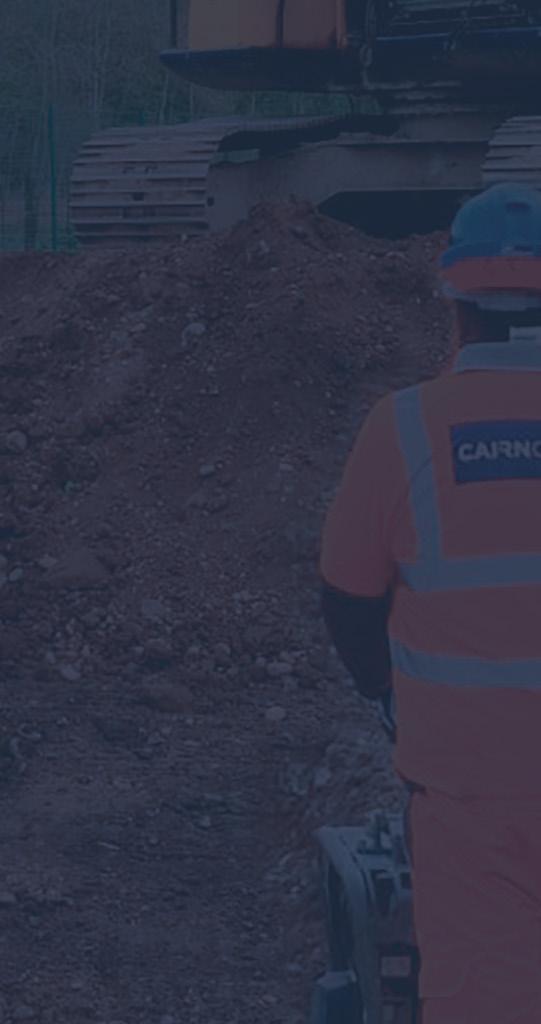
Speak to our rail experts and discover how Cairn Cross can enhance your rail infrastructure Capabilities & Experience
Email: info@cairncross.uk.com or Call: 0113 284 2415
www.cairncross.uk.com
• P-way
• Steel Portal Frames
• Synchronised Jacks
• Track Crossings
• TrackPan
• Underfloor Wheel Lathes
Utilities & Services
• Walkways & Lighting
Martin Frobisher, Network Rail’s Group Engineering Director, outlines his plans to combat climate change and reduce the environmental impact of the UK’s railway
Planning for an environmentally sustainable railway

Network Rail, which owns and maintains the bulk of the UK’s rail network, has just released its plans for the next five years.
Sustainable growth forms a major part of those plans. “Climate change is having an undeniable impact on our infrastructure,” said the delivery plan for CP7 (Control Period 7 – 1 April 20-24 – 31 March 2029). “Our plans tackle this challenge to make our assets more resilient. Delivery of our environment and sustainability commitments will also enable us to support the Department for Transport (DfT) with the delivery of its targets within the UK Government’s Environmental Improvement Plan, and in Scotland our plans support delivery of the Scottish Government’s strategic objective to achieve net zero, adapt to climate change and provide greater network resilience.”
The company’s key sustainable growth objectives and targets are listed as:
Reduce carbon emissions.
Prepare the railway infrastructure to minimise the impacts of climate change.
Deliver a net gain in biodiversity.
Improve air quality.
Minimise waste and use of materials.
On the day that the latest delivery plan was launched, Group Engineering Director Martin Frobisher, whose brief includes sustainability and the environment, sat down with Rail Director’s Nigel Wordsworth to discuss those objectives in more detail.
Biodiversity
Network Rail is the sixth-largest landowner in the UK, though much of that is a narrow strip that runs alongside 10,000 miles of railway. “That makes it quite an unusual land estate,” Martin commented, “but managing all the biodiversity and the flora and fauna that are on our lands is really important. There are some sites of special scientific interest, there are all
NETWORK RAIL 10 April 2024
Image: RSSB
sorts of precious creatures that live all the way around our infrastructure, and we have to manage that biodiversity responsibly.
“There are some larger areas too. Folkestone Warren on the Kent coast has a huge acreage of special scientific interest sites. We’ve got former freight sidings and all sorts of lands in different places, but managing biodiversity across such a wide expanse of land has proved really difficult for us.
“Recently, we’ve come across a very clever technology that’s helping us use the satellite imagery we get of our lands. We break it down into a 10 metre by 10 metre grid, and artificial intelligence processes the images and figures out the habitat on each particular 10 metre by 10 metre grid. Then we’re able to classify the habitat by how much biodiversity it can sustain.
“If it’s ballast and concrete, the answer is not very much, but if it’s grasslands that’s really attractive to beetles and insects and all sorts of things then it’s much higher in biodiversity. We categorise what the land is, we calculate the biodiversity that the habitat can sustain, and then we are able to produce action plans that deliver better biodiversity, and also help us run the railway efficiently.”
There is another use for aerial imagery too. A couple of years ago, it allowed Network Rail to catalogue all of the trees on its property and assess their species. More recently, the technology has developed so it can now look at the crown of each tree and assess how healthy it is. This is helping the company to combat ash dieback and other diseases.
“When you look at the wider picture, you can get a solution that’s good for the operation of the railway, that’s good for nature and good for our neighbours,” said Martin. “The ideal has grass planted quite close to the railway. Beyond that, pollarded hedges, which have super biodiversity and trees beyond that. If you get it right, you can get really good biodiversity from pollinating insects that are so important in the grass, birds nesting in the hedges and trees beyond, screening the railway from neighbours.
“So, rather than just letting trees grow right to the edge of the railway, the combination of grassland hedging and trees, done in the right way, is good for nature, good for the railway and good for neighbours.”
Drainage
Martin is in no doubt that the UK’s weather is getting fiercer. “Climate is changing fast,” he said. “Anyone who talks about climate change, suggesting it’s an issue for the future, has missed the point – it is happening now. Winters are wetter, summers are hotter. Storms are windy and wetter. It’s really affecting us right now.
“This plan, that we’ve launched today, includes provision for spending far more money on drainage and earthworks than we’ve ever done previously. We will be recruiting hundreds more people to maintain and upgrade our drainage and we’re prioritising work according to risk. The Railway Safety and Standards Board (RSSB) produce a really excellent model, the precursor indicator model, that shows us where the risk lies, and we’re prioritising the money available

and the resource available to make sure that we tackle the priority areas.”
Coastal erosion
Along the coast, the problems will be even more severe. Dawlish and the South Devon coast have had a lot of money spent on a complete new sea wall and other measures, and work is continually being undertaken on the Cambrian and Cumbrian Coast railways and in the South East.
“Sea levels are getting higher,” Martin added. “That’s an effect that was predicted to start in earnest around 15 years from now, but we expect that, by the end of this century, sea levels could be a metre higher along some parts of the coast.
“To prepare for this, we are already getting renewals money to strengthen the assets that we need to strengthen. In places like Dawlish, we’ve done some really good work already – the sea wall defences at Dawlish are just in a different scale to what we had previously. In places like the Cumbrian coast, there’s been lots of schemes to put lots of rock armour onto the shoreline in order to protect the railway from winter storms, but I’m not suggesting for a moment that we’ve completely cracked this, it is something that we need to continue to make the case for in future years.”
Network Rail has a devolved structure, with five regions and local teams looking after their own railways. “I think local ownership by the people delivering the work really matters. We’re putting local people who understand local assets in charge of setting the work bank. They have lots of national
When you look at the wider picture, you can get a solution that’s good for the operation of the railway, that’s good for nature and good for our neighbours
Above: Martin is responsible for safety as well as environmental sustainability.
NETWORK RAIL 11 April 2024
Image: Network Rail
Anyone who talks about climate change, suggesting it’s an issue for the future, has missed the point – it is happening now!

support from the national engineering team – my team in the technical authority sets the overall engineering standards, which deliver consistency, but I think the combination of local ownership, good theoretical models that help us plan for the future and consistent standards is the right model.”
Energy
The railway uses a lot of energy. Not just for traction power, the demand for which will increase as more of the railway is electrified, but also to power signalling systems, stations, and a host of other facilities. That power is also going green.
“One of the things we have been doing recently is making commercial deals with suppliers who will be able to supply us with green energy,” Martin explained. “We’ve recently signed some contracts for large solar farms near to the railway that will do this. Our commercial model is that we sign a contract, agreeing to buy a certain quantity of electricity for a period of time at an agreed price, and that then allows a supplier who’s an expert in that field to invest.
come up with a much more sophisticated design that puts the strength where it’s needed, spreads where it’s needed, and saves material where it’s not. So, we’ve completely redesigned the railway sleeper bottom up. We’ve got a project called the ‘hedgehog’ – and it looks a little bit like a hedgehog if you squint your eyes and look at the design. It spreads the load and supports the rail but uses less material to do it.”
Concrete sleepers are having a makeover too. Martin’s team is looking at the chemistry, moving away from pure concrete to substances that include more recycled ash, as well as shape and design.
Emissions
Martin Frobisher’s responsibilities as Group Engineering Director include the planting of trees! Image: Network Rail
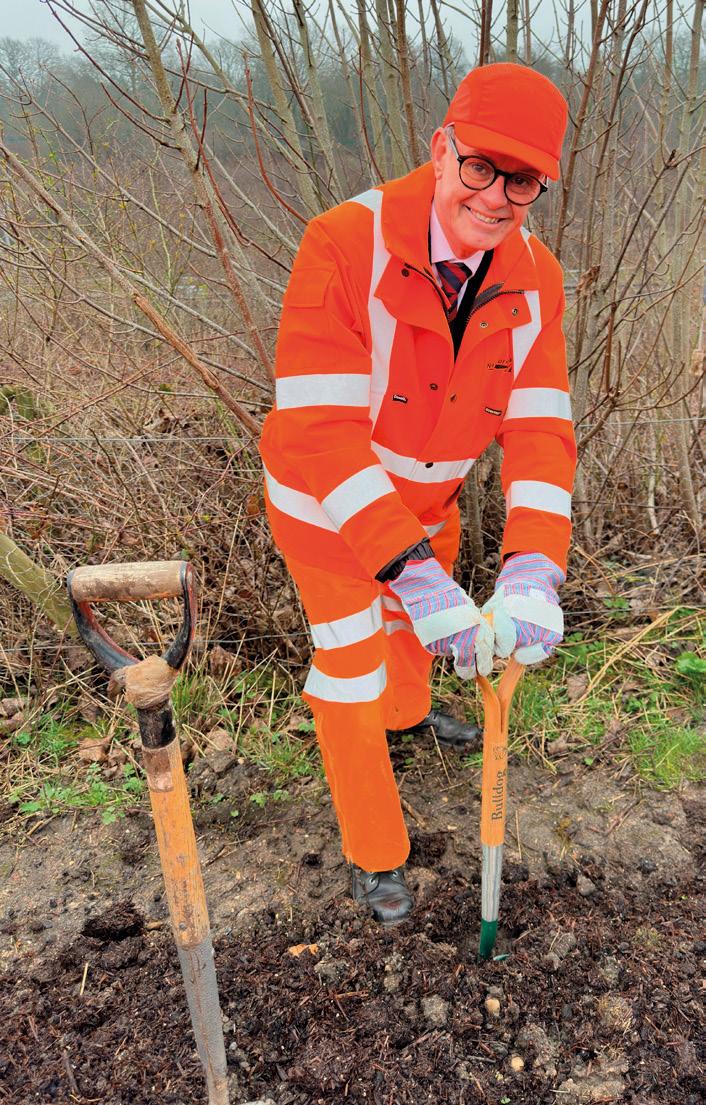
“Where we can, we’re trying to have direct wire connections, so the supply is hooked up directly to our power networks. In many instances, the layout and our power demand doesn’t quite align, in which case we will need to work through the grid, but we’re looking at each location on a site-by-site basis.”
Great British Railways is looking at a traction decarbonisation strategy. This is likely to involve the use of trains with hybrid power systems. Batteryelectric hybrids for passenger trains, electric/battery/ diesel hybrids for freight. “I think we might move to a world where we have to use hybrid rolling stock in combination to get the best use of electrification where it’s economic to electrify and to have other modes of power in the places where it’s not,” he said.
Recycling
“Network Rail makes sure that less than one per cent of its waste goes to landfill. The big issues are rail, ballast, sleepers and concrete,” Martin stated. “There have been schemes to recycle coffee cups in stations, and those sorts of things are great to raise public awareness. But if we really want to move the dial on recycling and embedded carbon, then its rail, ballast, sleepers and concrete.”
For 200 years, sleepers have “looked like something that came out of a Victorian sawmill,” Martin exclaimed. “You put a tree through a sawmill, it comes down to a rectangular lump of wood and that’s how that looks. The designs for concrete sleepers don’t look very different.
“But with recycled plastic and a mould, you can
To cut down on diesel emissions from construction plant, Network Rail is looking at using alternative fuels, including hydrogen.
“We’re seeing the introduction of synthetic diesel fuels, green, environmentally friendly diesel fuels, that are being used in plant,” Martin explained. “And we’re also experimenting with hydrogen for some of our plant. We’re coming to the view that the hydrogen fuel cells may not be the way to go. They’re very delicate and fussy about the quality of the hydrogen they get. But JCB has designed an internal-combustion engine starting from first principles and designed for use with hydrogen, and I think they’ve produced a very rugged and reliable hydrogen product. And we’ve got one site now that we’ve converted to operate using JCB’s hydrogen technology and we’re quite excited about that.”
Moving to other fuels will help Network Rail reduce its overall emissions. “Across the piece, one of the key commitments for this five-year cycle is a 25 per cent reduction in our Scope 1 and 2 carbon,” Martin stated. Scope 1 is carbon that goes up the chimney or out of the exhaust pipe as a direct result of fuel being burnt on site. Scope 2 is carbon generated elsewhere, for example due to the company buying power from a company that burns carbon to produce it – secondhand emissions.
By the end of the five-year period, Network Rail plans to be producing 20.5 per cent less Scope 1 and 2 carbon than it is currently. And that will be good for the environment, the climate, and all of us.
Design of the new ‘hedgehog’ sleeper.
Image: Network Rail
NETWORK RAIL 12 April 2024

Advice from Keven Parker, Head of Rail at Jobson James Rail
The importance of getting the basics of health and safety right
In our work as a specialist railway insurance broker, we routinely manage injury claims that arise from railway contract sites. Where there is a genuine injury, the rail operative will claim for compensation for their suffering, expenses incurred, legal costs and lost wages.
The court that receives the claim will investigate all aspects of the accident. This will include how it happened and likely causation. They will look into who wrote the WPP/SSOW, who provided supervision, direction and control and who wrote the risk assessment and method statement for the task.
Where the accident was due to a negligent error of the claimant or a colleague, the causation can often be put down to a failure of supervision, training, or competence.
Then the focus turns to whether
the operative was fully trained in that task and the safe use of those tools, instructed in how the go about the work, instructed to work in accordance with the safe system of work for that task and properly assessed for competence. It becomes very important for the employer of the individual to be able to show the operatives signatures on the competence and training records, to prove that they were able to carry out the work safely.
The legal advisors to the operative, if faced with evidence that their client was competent and suitably trained, can switch focus to the provision of PPE. They might formulate their action around whether the RAMS defined what PPE was required, if the correct PPE was provided, whether it was defective and how PPE contributed towards the accident.
The employer must be able to show


that the RAMS did define the correct PPE, that the operatives had signed the RAMS as confirmation that they would adhere to it, that the correct PPE was provided and perhaps that the operative failed to wear it.
The basic requirements of a competent health and safety
management system are to define roles and responsibilities clearly, train the workforce, assess them carefully, record their competence, devise safe ways of working, communicate them effectively to the workforce, ensure compliance to the safe systems, supervise the work and ensure that quality is maintained.
When accidents happen the health and safety system is interrogated. Jobson James Rail is there to support our client throughout the process of the court and the claim. If you require rail specific health and safety advice and want to work with an insurance broker that understands the contractual liabilities between the parties when it comes to dealing with railway infrastructure injury claims, please do give us a call.
For more details, call Keven on 07816 283949.

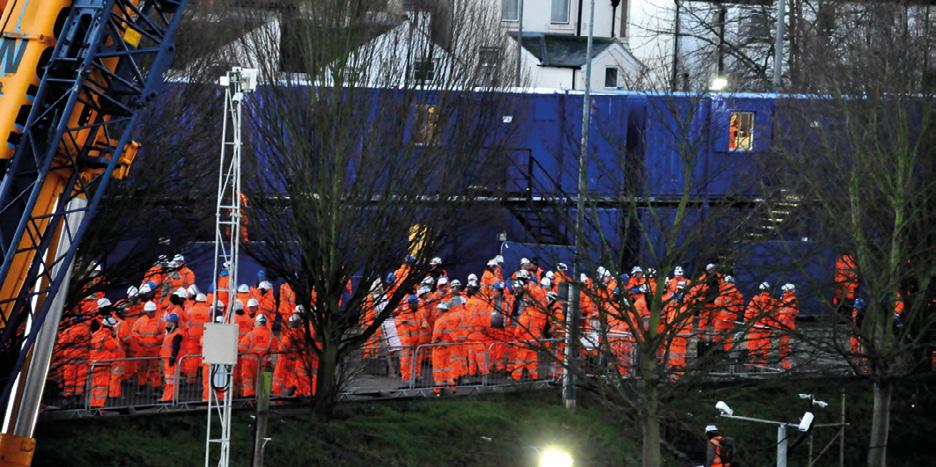

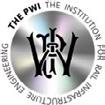



Contact Keven Parker on 07816 283949 | 0121 4528717 keven.parker@jjrail.co.uk WE ARE A RAIL SPECIALIST INSURANCE BROKER (RISQS LINK UP APPROVED) We insure • RRV and Plant Companies P-Way/S&C, S&T, OLE/Third Rail and Civils contractors • Rolling Stock Turnkey Modifications companies • Manufacturers, Wholesalers and Installers of rail products • ROSCOs and TOCs supply chain • Rail Consultants, Surveyors and Design Companies Why us? Specialist rail knowledge • NEBOSH/Safety approach producing lower premiums • Contractual liability checking • Better technical advice Specialist rail safety consultancy site audits funded by insurers info@jjrail.co.uk www.jjrail.co.uk • Existing Liability and Works Insurances did not match the contractor business activities and the company was exposed for key areas of activity. • Analysis of the cover was conducted, management interviews carried out, and recommendations were made for alterations. Rise analysis report was compiled and quotations were secured from specialist rail insurers. • The result, a significant premium reduction across all of the business insurances. Jobson James Rail is a trading name of Howden UK Brokers Limited, which is authorised and regulated by the Financial Conduct Authority No. 307663. Registered in England and Wales under company registration number 02831010. Registered Office: One Creechurch Place, London, EC3A 5AF. Calls may be monitored and recorded for quality assurance purposes. HUBL-CC-CS-JJR-002-0124 37% SAVING £40,000 SAVING ON INSURANCE PREMIUM LABOUR SUPPLY & PACKAGES CONTRACTOR - £11M TURNOVER £11M TURNOVER RISK REPORT TO INSURERS 20-PAGE TERMS & CONDITIONS ANALYSED EMPLOYERS LIABILITY PUBLIC LIABILITY WORKS AND PLANT DIRECTOR’S LIABILITY MOTOR FLEET ADVERTORIAL 13 April 2024
Rufus Boyd, who leads the Great British Railways Transition Team (GBRTT), writes about the short-term challenges and long-term opportunities of integrating rail with other modes

AThe backbone of a more integrated transport system

n integrated transport system is the right aspiration. For local communities, for the prosperity of towns and cities up and down the country, as well as for our planet. It aligns with the strategic objectives that the Government has given rail.
Rail has often been described as the ‘backbone’ of that transport system. Fixed infrastructure with fixed timetables that do the heavy lifting, and with which more flexible modes can ‘dock in’. In a geographical sense, other modes must come to rail.




This reality can easily breed complacency, which is why all of us who work in rail must actively work towards making rail more accessible and easy to do business with.
Short-term challenges
Colleagues at GBRTT have spent the past two years working to bring together a single, detailed view of industry finances – with profit and loss across track and train from the highest to the most granular levels – for the first time in a generation. The fact we’ve not had this simple business tool as an industry speaks to how much work there is to do.



Rail’s operating subsidy last year was £4.4 billion materially larger than pre-COVID. This is the Department for Transport (DfT) procured train operating companies and Network Rail –enhancements.



Our financial position today as an industry is not sustainable and it is my belief that this is true of any government of any colour – given other public priorities. We need to get more people taking the train, more often, and we need to do that at an efficient cost.
















Rail’s revenue was decimated when the country paused to stop the spread of COVID-19, and when you adjust for inflation and the opening of the Elizabeth line we’re only at 74 per cent of prepandemic passenger revenue.




Now, habits have changed with people travelling, relatively, far more for leisure than they were prepandemic, and with changed working arrangements they’re travelling far less for business. Rail needs to adapt and across the sector, we’re trying to do just that.














Businesses have two options – drive costs down, or you work to increase revenue. Our evidence base, which we have bolstered substantially over the past two years, suggests that there are millions of journeys to go at, through mode shift. We just need to chase the right horses.













Rail’s mode share today is low. The rail industry can only go so far towards addressing some of these barriers respondents cited in isolation, such as simplifying the complex mass of rail fares, for example.



Rail is a fragmented industry, and the large




GREAT BRITISH RAILWAYS TRANSITION TEAM 14 April 2024



TBF - Here to help and support YOU during times of need

















£1.25 a week covers you, your live-in partner and dependent children.




















TBF offers financial and medical benefits, a wide range of complementary and alternative therapies, bereavement grants and welfare advice. Supporting those in the public transport industry during times of need, hardship and distress for less than 20p per day .





















































Transport Benevolent Fund CIO, known as TBF, is a registered charity in England and Wales, 1160901, and Scotland, SC047016.
JOIN ONLINE TODAY www.tbf.org.uk 1923 TO 2023: MORE THAN ONE HUNDRED YEARS OF SUPPORT FOR PUBLIC TRANSPORT WORKERS DURING TIMES OF NEED.
Britain’s rail passenger market today


and obvious consequences of that fragmentation are precisely why the Government set out to reform it. But we don’t yet have Great British Railways, and so coalescing the views of rail leaders – who are incentivised very differently in today’s structure – around a shared approach is painstaking but incredibly important work.
In the short term, there are five priority areas that everyone can broadly agree should be the focus of existing investment to get the best net benefit across rail’s balance sheet:
1. Improving performance.
2. Making ticketing simpler and better value for money.
3. Optimising capacity and increasing occupancy.
4. Bringing a consistently great customer proposition.
5. Improving communications and quality of information.
We need to get the railway industry actively thinking about journeys from door to door, rather than from station to station
These are national priority areas, and some of the key activities that sit under each of these will be done at a national level. But crucially, local leaders are developing local responses. The framework GBRTT has developed is about bringing different organisations together to use our collective clout to go for growth.
Take pricing. For the second Great British Rail Sale, launched this January, GBRTT developed the business case, and worked with the Rail Delivery Group and operators to deliver a proposition that worked across their different commercial models.
It’s great news for customers, who can take advantage of the discount fares, and it’s great news for the industry which sees short and long term increases in demand. Against a difficult backdrop, it’s a shining example of rail pulling together to do the right thing – encouraging more people across the country to choose to travel by train, more often.
Pay-As-You-Go pilots in 90 stations across Greater Manchester and the West Midlands, announced earlier this year, and unlocked through partnership working, will mean a simpler experience for customers who can tap in and out. In the West Midlands, customers will be able to travel seamlessly on local bus, tram, and train services, because the pilot will integrate rail with the existing ‘Swift’ smartcard. A similar ambition exists in Manchester, to integrate rail into the Bee Network.
Long-term opportunities
To turn to the long-term picture, our research into mode shift also found that – where rail was an option – getting to-and-from a railway station was the largest barrier and led to the individual ultimately choosing another mode.
The Government’s strategic objective for rail, on meeting customer needs, includes the ambition to meet multi-modal expectations and reduce end to end journey time.
Now, clearly rail is not always the answer to a specific origin and destination pair. There are things we do well, and there are things that other modes do far better and that includes the car.
But we do know that rail is the only enabler to a broad-based solution: an unlocker of local and national growth and prosperity. We know that it has a part to play in the decarbonisation of the wider
transport network and a material role to play in helping to tackle road congestion.
The answer lies in the detail of our rail reform agenda and in the work happening as we speak to improve rail’s strategic planning and partnership working with city regions, and to bring greater alignment across track and train.
Taking the first of these areas, I’ve often described strategy as the common currency between institutions. It’s how we integrate rail’s expertise with the ambitions of mayors, local authorities, third party and private sector providers.
GBRTT is developing a long-term strategic approach for the rail industry, which will help achieve national objectives, such as economic growth and net zero. Its supporting framework, underpinned by analysis, will foster joined-up decision-making across track and train, while the strategy will provide a clear future direction to industry and wider stakeholders.
Secondly, we need to align incentives to make sure that both parts of the railway enterprise – track and train – are working together to deliver for customers. That same alignment will also make rail a better industry to do business with. This isn’t impossible in the here and now, it’s just more difficult. Yet we’re making progress.
Government has published the draft Rail Reform Bill for pre-legislative scrutiny, and although we are unlikely to get the legislation needed to create Great British Railways in this Parliamentary session, there’s plenty we can get on with.
To take just one example, the Secretary of State for Transport recently wrote to GBRTT to ask us to progress recommendations we made for simplifying rail industry processes. This includes consent processes for improving facilities at stations and depots.
Today they are unnecessarily complicated, expensive, and lengthy. It shouldn’t take months to get approval for something as simple as a new EV charging point or cycle parking facility for passengers – but often, it does.
We’re now getting on with integrating and modernising three overlapping processes that exist today – Station Proposals for Change, Landlord’s Consent, and Minor Modification – into a single, simplified industry approach. A quicker, less expensive process has real potential to encourage investment in stations and unlock commercial opportunities.
Finally, we believe that rail must push decisionmaking down to the most local level. We need to get the railway industry actively thinking about journeys from door to door, rather than from station to station and there’s a hunger in city regions to make that integration happen.
We’re seizing that opportunity today with regional partnerships to give local leaders greater influence over the railway, including in Greater Manchester.
Once created, Great British Railways will take up that mantle and build on the foundations we’ve laid, with a de-centralised approach to decision-making. There are few easy answers, but transport integration is an exciting space, ripe with opportunities to make a positive difference. We are determined to seize the opportunity and look forward to working in partnership with those across the rail industry and beyond to do so.
GREAT BRITISH RAILWAYS TRANSITION TEAM 1
2022-23 2019-20 £8.3 billion Revenue1 Journeys1 £10.3 billion 1.4 billion 1.7 billion Government operating subsidy2 £4.4 billion 1 Data extracted from LENNON, an industry system owned by RDG. 2 Estimates based on 14 DfT-managed Train Operator plus Network Rail operating costs, excluding renewals and enhancements. The official ORR update for 2022/23 is not yet available. £0.7 billion GREAT BRITISH RAILWAYS TRANSITION TEAM 16 April 2024


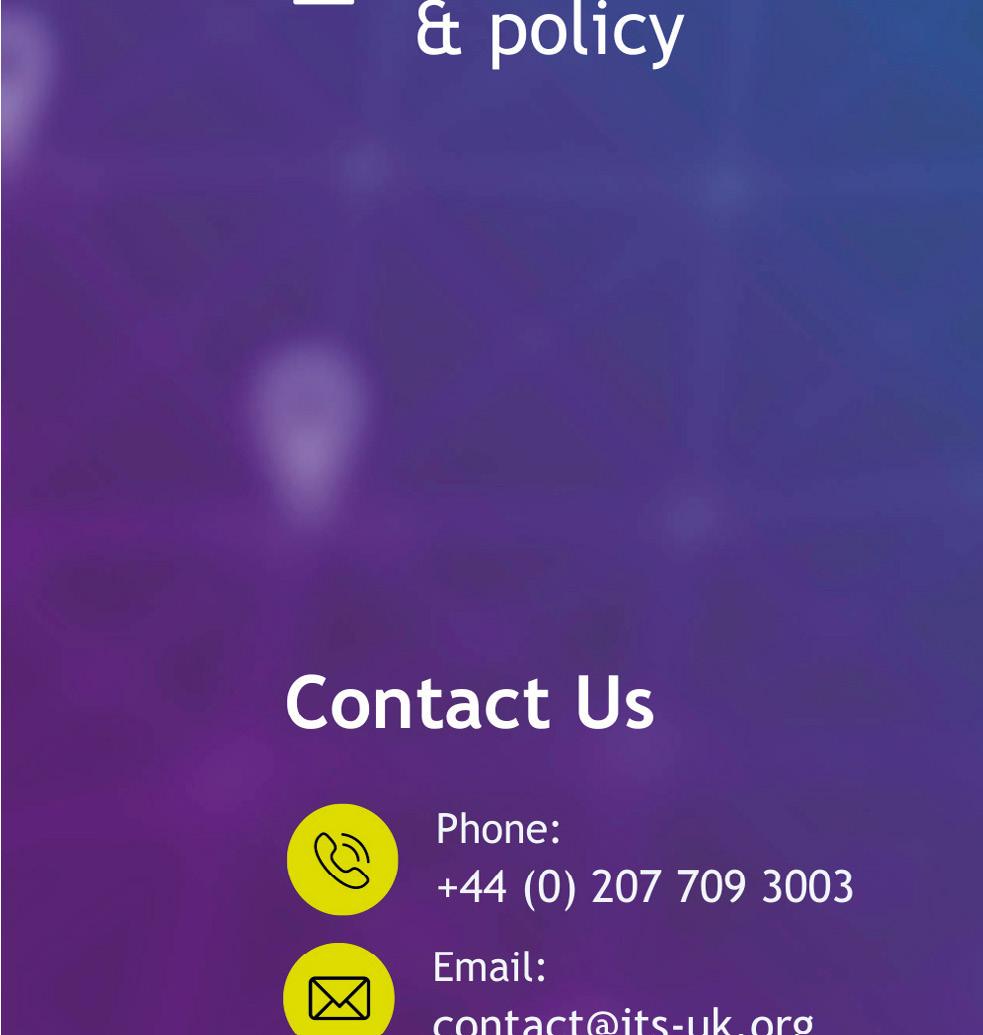
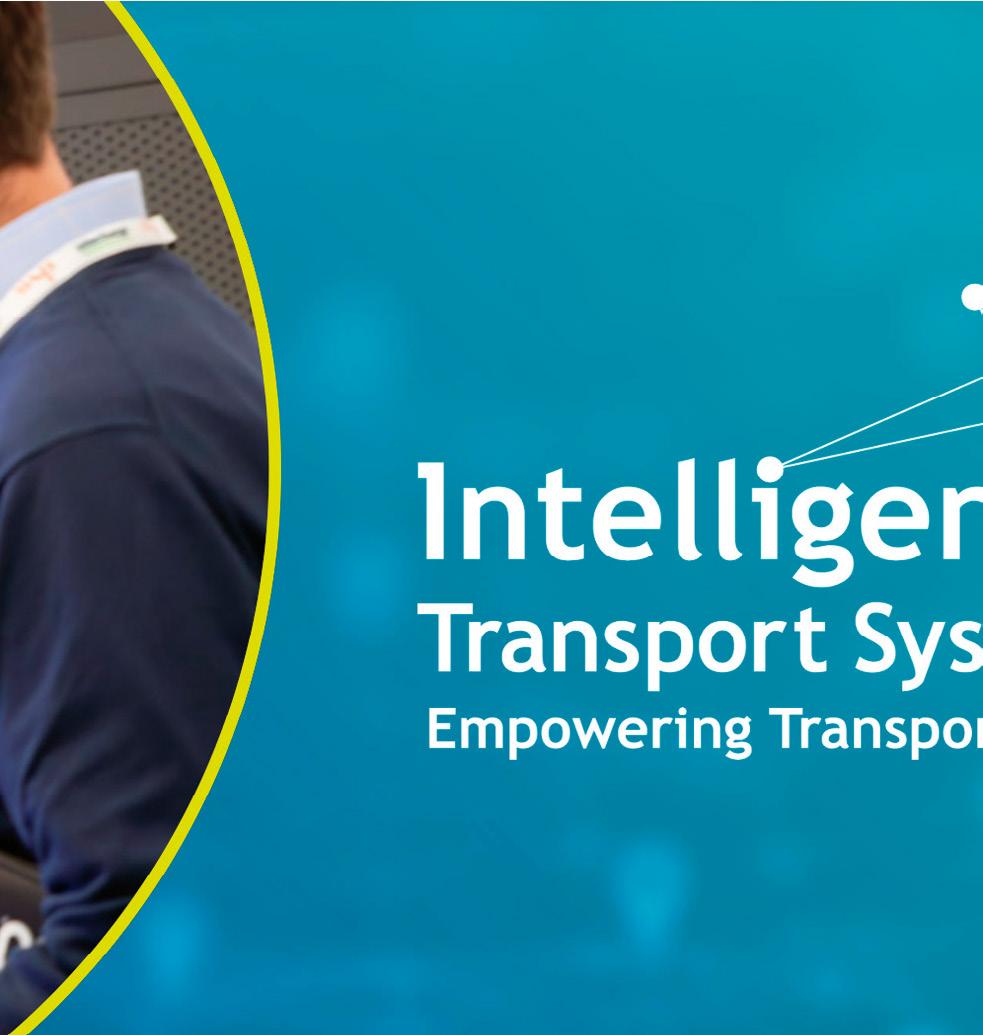
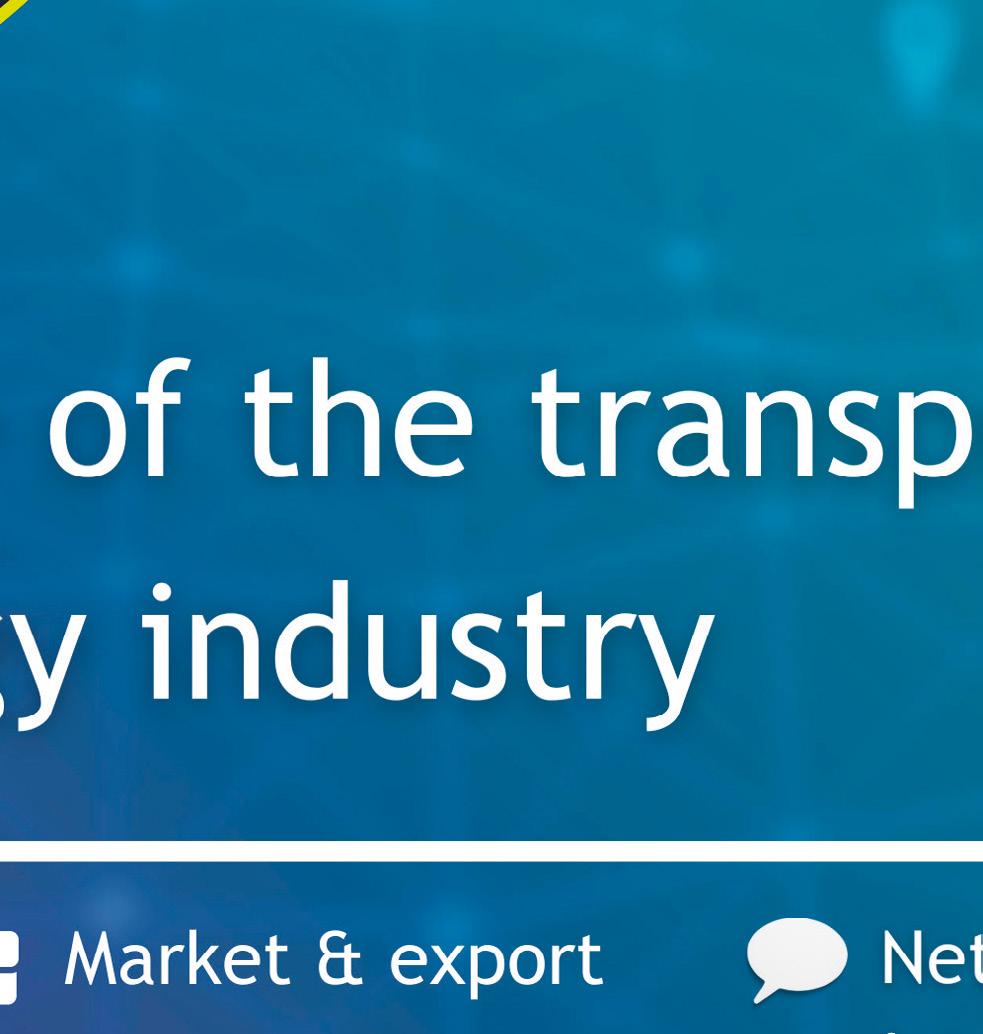




TSEP Rail Services marks a significant milestone as the first independent UK surveying company to acquire the Network Rail approved, Trimble Dual Headed GEDO GX50, a state-of-the-art laser scanning system, purchased from KOREC Group
Rail independent UK surveying company to acquire the Network Rail laser scanning system, purchased from KOREC Group
SEP Rail Services leads
SEP Rail Services leads the way with pioneering investment

he
is with GEDO measurement systems.
Its innovative dual-headed configuration significantly enhances data collection capabilities by boosting point density, accelerating measurement speeds and minimising shadowing effects within the scanned data.
boosting accelerating
Such enhancements are pivotal for achieving detail perpendicular of
Such enhancements are pivotal for achieving unparalleled detail and clarity in objects perpendicular to the track, a critical aspect of thorough railway surveying.
The strategic decision by SEP Rail Services to transition to the Dual Headed Trimble GEDO GX50 from their prior system underscores their commitment to integrating the latest technology for superior service delivery. This investment streamlines their workflow by achieving in one
The strategic decision SEP Rail to GEDO their technology superior This investment by one
session what previously required multiple visits, and significantly improves the quality of data collected for clearance verification, as-built data compilation, and Building Information Modelling (BIM)-compliant projects.
session previously multiple and significantly the collected for verification, data compilation, and Building Information (BIM)-compliant projects.
Immediate benefits for clients
Immediate benefits
Chris Lyon, Head of Delivery at SEP Rail Services, commented on the new acquisition’s impact on operations and client service.
Chris Lyon, of Delivery SEP Rail Services, commented new acquisition’s operations client service.
he Trimble GEDO GX50 is at the cutting edge of laser scanning technology, designed to seamlessly integrate with Trimble GEDO track measurement systems.
ADVERTORIAL 18 April 2024
Trimble GEDO GX50
ADVERTORIAL

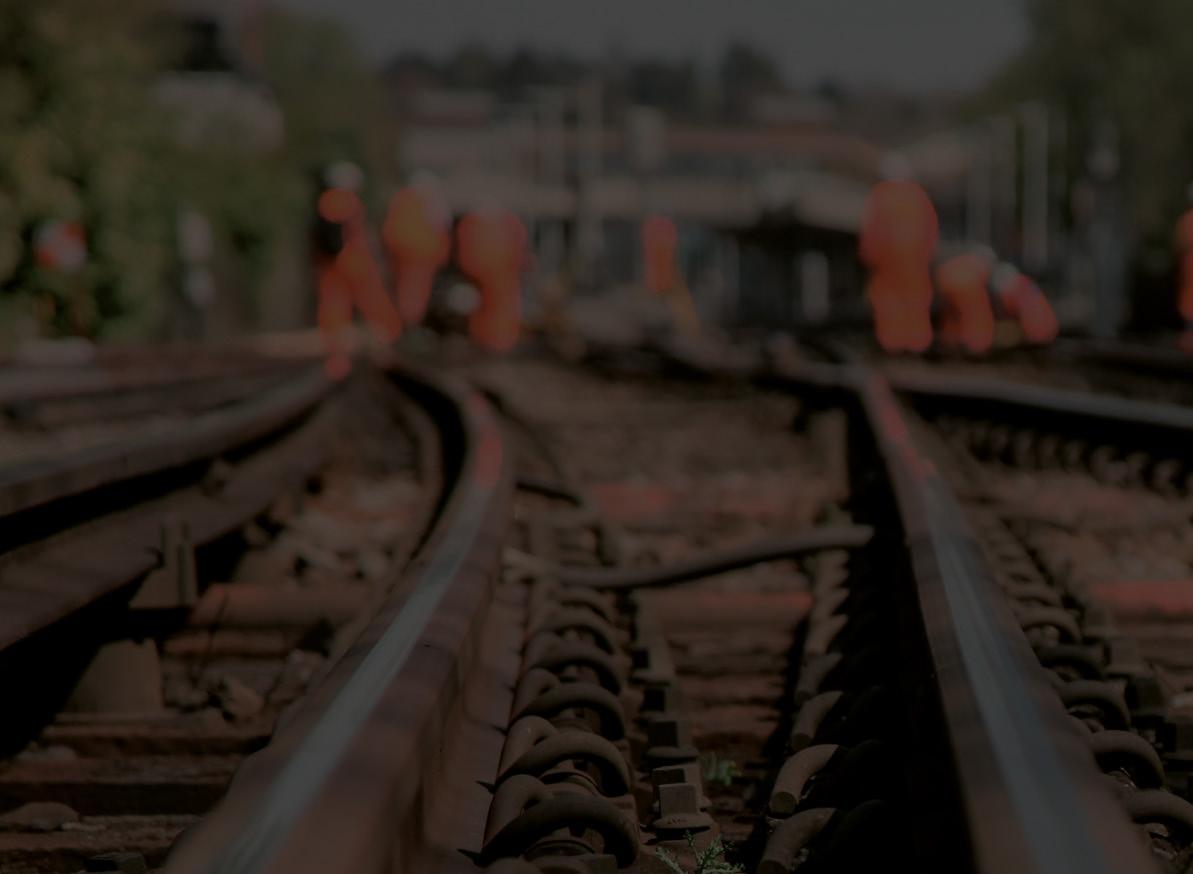
We support contractors, consultants and more, fielding a welldeserved reputation for the quality, reliability and flexibilit
With over 80% of our work coming from repeat business, we
support consultants and fielding a wellreputation for the reliability and flexibility of our service. With over 80% our work coming from repeat business, we must be doing something right...



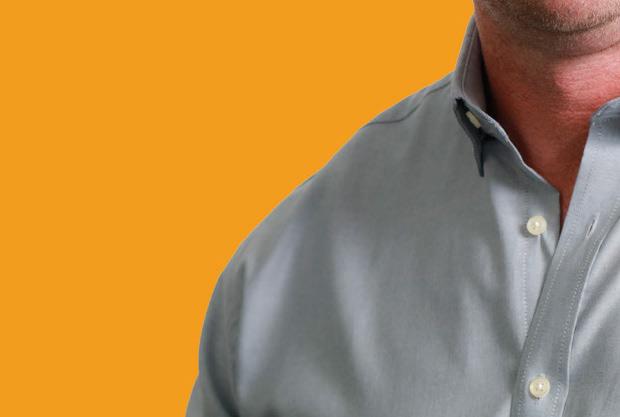

ADVERTORIAL April 2024
ADVERTORIAL April 2024
“The introduction of the Trimble Dual Headed GEDO GX50 marks a significant step forward in our operational capabilities. Compared to our previous system, it’s faster on-site and far more robust under various weather conditions. The dual head system allows for measurements at multiple heights and angles with less shadowing, ensuring more features are accurately captured.
“This translates into significant benefits for our clients, as we can conduct surveys more quickly and reliably, speeding up the survey process, and reducing the amount of time needed on site.”
Significant acknowledgment
Rikki Morrow, Managing Director at SEP Rail Services, further expressed gratitude towards the KOREC Group, acknowledging their significant support throughout the procurement process, especially for the comprehensive demonstration provided earlier in the year.
“KOREC Group’s expertise on the demonstration day enabled our team to hit the ground running, significantly reducing the time from purchase to real-world application. The collaborative approach throughout this acquisition has instilled a level of confidence within our team that is sure to resonate with our clients.”
KOREC Group, recognised as a leading distributor of surveying and mapping equipment, collaborates closely with top technology
manufacturers to introduce innovative solutions to the market.
Commenting on the acquisition, Ric Kirman, Rail Business Area Manager, KOREC said:
“We are delighted to have worked in collaboration with Rikki Morrow and SEP Rail on their acquisition of the Network Rail Approved Trimble GEDO GX50 system. We think scanning represents the future of rail surveying, enabling increased productivity, efficiency, and safety despite ever reducing track access time.
“SEP Rail, through their existing Trimble GEDO 3D scanning experience, understand this can be achieved through the increased use of scanning technology and digital twin creation so it comes as no surprise that they are the first independent survey company in the UK to lead the way with this innovative technology. SEP Rail have an ethos of ‘do it once, do it right’ and the GEDO GX50 will enable them to consistently achieve that aim.”
This pioneering move by SEP Rail Services not only underscores their dedication to leveraging cutting-edge technology but also sets a new benchmark in the UK rail surveying industry, promising enhanced efficiency and precision in their future projects.
To learn how this new investment could benefit your future projects, please contact SEP Rail Services, Head of Delivery, Chris Lyon on info@seprail.co.uk.
Compared to our previous system, it’s faster on-site and far more robust under various weather conditions

ADVERTORIAL 20 April 2024























Site Surveys and Investigations Feasibility and Option Reports Outline and Detailed Design Rail Infrastructure Design Services Got a project in mind? Get in touch 01270 255 731 Temporary Works Drainage Lineside civils Footbridges Depots Station Platforms and Buildings Signalling and Overhead Line Structures General Civil and Structural Projects Support for Asset Protection schemes 01270 255 731 enquiries@engauged.co.uk www.engauged.co.uk We provide a wide range of rail infrastructure design services across the UK to include the following... DESIGN WITH BUILD IN MIND

Serco Rail Technical Services has developed a specialist unattended Remote Condition Monitoring System (RCM) for inspecting overhead line equipment (OLE). The organisation explains more
Assuring the future of rail
The dominance of traditional fossil fuel sources within the rail industry is declining. Today, we’re witnessing an increasing shift towards cleaner, more sustainable alternatives. By embracing renewable energy solutions such as solar, wind, and hydroelectric power, we have the opportunity to revolutionise the way we power our trains.
One strategy that’s driving progress and change is the spread of electrification across the UK rail network. Here, electricity is delivered directly to trains via OLE, paving the way forward to smarter, greener, more efficient, and resilient rail transport.
What is OLE technology?
OLE consists of copper wires suspended above the track from overhead catenary structures which carry current at 25,000 volts. This current is collected by trains via a pantograph, which is mounted on the roof of the train.
With Network Rail mandated to achieve net zero in the UK by 2050, the installation of new OLE has a vital role in decarbonising the railway. With significant investment in further electrification planned, more of the UK rail network is set to be placed ‘under the wires’.
Currently 38 per cent of the UK rail network is electrified; of this, two-thirds are equipped with high voltage OLE, the remainder using a lower voltage electrified third rail system. Increasing the OLE network works towards eliminating the need for onboard diesel engines, significantly reducing emissions.
Certification and inspection requirements
Prior to newly installed OLE being brought into service, a series of rigorous proving and certification tests must be undertaken to confirm compliance with the relevant UK standards. These tests are conducted to confirm that the equipment has been installed correctly in accordance with the system design, ensuring the safety of trains running up to their maximum speed. Only after these tests have been successfully completed can final certification for electric train operation be granted.
Once the OLE is operational it is necessary to carry out regular testing to ensure that the equipment is in good order and to detect any emerging faults that may affect the safety or reliability of trains. This allows any problems to be rectified before they can cause damage to equipment and disruption to services.
At Serco Rail Technical Services (SRTS) we have developed a specialist unattended RCM for inspecting OLE. This can collect data of the standard necessary

for certification purposes and also for operational OLE condition and fault monitoring. We have developed techniques that allow us to fit our test equipment as a stand-alone installation on the pantograph of any electric train. This enables our customers to monitor the interaction of the pantograph and associated OLE infrastructure whilst the vehicle is operating in service, without the need for any customer on-site or on-vehicle technical support. The system ensures that data is gathered under realworld operating and weather conditions, over significant rail mileage. The equipment can be remotely activated, ensuring that data is only gathered when the train is operating, maximising system efficiency.
Our measurement systems, both attended and unattended, have been developed and refined over many years in the field. They enable us to reliably monitor and record pantograph head contact forces and accelerations and wire height and stagger on multiple pantographs simultaneously over the full range of vehicle operating speeds.
Data is recorded alongside vehicle speed and GPS location. This allows the recorded data to be speedbanded for certification purposes. For day-
to-day operations, it allows the anomalies or defects to be detected and their location accurately reported to Network Rail, greatly reducing the need for maintenance staff to carry out on-track inspections. This both reduces the risks to staff associated with lineside inspections and, by guiding them accurately to defect locations, helps to reduce the time taken to undertake any necessary repairs.
By embracing electrification, rail operators can enhance operational efficiency, reduce environmental impact, and contribute to a more sustainable future for transportation. As the world continues to prioritise sustainability and energy efficiency, railway electrification stands to play a pivotal role in shaping the future of sustainable transport. SRTS is seeking to play its part in this by helping in the certification of new electrification infrastructure and improving its maintenance and reliability once it is in service.
For further information on our Remote Condition Monitoring System, get in touch to see how we can help support you.
0330 109 8852
enquiries.srts@serco.com
www.serco.com/srts
ADVERTORIAL 22 April 2024

When Stuart Browning joined award-winning rail operator c2c last year, its work around safety, sustainability, and compliance was already on track. Now, it’s gaining real momentum
Driving safety, sustainability, and compliance at c2c
Stuart Browning “jumped” to join c2c. Starting out as Head of Safety and Environment, he stepped into the newly created role of Safety, Sustainability, and Compliance Director last October.
The move represented an unmissable opportunity – both to “lead safety within a top business”, and to tap into the knowledge, innovation, and experience at c2c’s international owning group, Trenitalia.
“Sitting around a table with some of the industry’s finest leaders was an opportunity not to be missed,” he recalled.
And, while Stuart admitted that he initially found the transition from ‘Head of’ to Director challenging, he is no newcomer to rail. Over the course of a 22-year career, he has worked for Network Rail and a range of train operating companies, moving from performance-focused roles to safety after a near-miss incident on the Wessex route.
“I realised I could apply some of the skills I had around improving performance to improving safety,” he said. “For me, it’s always been a case of ‘if we get safety wrong, the rest of the business doesn’t work’. Safety is a great vehicle for driving change in the industry, because everyone can buy into it.”
A fresh pair of eyes
And, just over 12 months since Stuart (who is also Deputy Chair of the RSSB People on Trains and in Stations Risk Group) joined c2c, its team is buying into his vision of a safer, more sustainable, and more collaborative rail industry.
Reflecting on his first year in the role, he said: “When I joined, we were in the middle of introducing our new Class 720 trains. I was tasked with safety validating that process, which was quite overwhelming.
“But with colleagues in our Operations & Engineering teams, our ROSCO Porterbrook, and manufacturer Alstom, we did a lot of great work. It was rewarding, and those trains are now in operation, benefiting our customers and colleagues.”
Stuart has also been pleasantly surprised by the “positive response” to his work.
He added: “I was able to come in with a fresh pair of eyes, dig deeper into our processes, and identify where the weaknesses are. My expectation was that when some bloke came in and said, ‘Here’s where we could improve’, people might push back.
“Actually, the business has put its arms around the

Safety is a great vehicle for driving change in the industry, because everyone can buy into it
opportunity to improve and not been protective of its existing culture.”
Stuart attributes his success to the relationships he has built with c2c’s team – adding that, in a smaller organisation, it is easier to “get to know people on a much deeper level.”
He said: “My first boss taught me that with every pair of hands comes a free brain. All too often, we waste that knowledge, experience, and creative energy. If you tap into it, those individuals
will tell you what the issues are.”
And a programme of engagement tools is enabling Stuart and his team to do just that. He added: “c2c’s senior leaders visit every station and depot and talk about their challenges. The information is collected centrally, and helps to inform our safety plans and risk assessments.”
The team has also created an accelerated safety improvement programme, which will enable it to ensure that c2c’s processes and procedures reflect industry good-practice. New quarterly leadership conferences are helping it to engage with the wider workforce, updating attendees on issues like fire safety. At the latest event, staff also had the chance to discuss safety concerns with confidential service CIRAS.
A broader approach
Stuart’s work has enabled c2c to move away from its traditional safety structure, adopting a more contemporary model that encompasses sustainability and compliance.
This involves ensuring that staff are properly trained, that the right governance is in place, and that the business is financially compliant. And, while Stuart is proud of c2c’s environmental credentials (the operator runs a fully electric railway), he’s also keen to shine a light on its work around community engagement.
The company is striving to add value to the diverse communities it serves. In 2024 alone, it has partnered with not-for-profit organisation Primary Engineer, and employed seven young people via The Prince’s Trust programme – and is planning to use the RSSB’s ‘Social Value Toolkit’ to measure the impact of this work.
Giving back to the industry
Indeed, for Stuart, the priority is giving back – both to communities, and the wider rail industry.
As well as sharing good practice with owning group Trenitalia, Stuart is currently helping to refresh the industry’s Platform Train Interface (PTI) strategy, and discussing e-bike safety on trains.
“It’s about getting things right for c2c and giving back to the industry as well – sharing the talent we have” he concluded. “There’s no reason we can’t behave as one, and getting more involved with each other can only lead to good things.”
https://www.c2c-online.co.uk/
ADVERTORIAL 23 April 2024
Image: c2c
A trial taking place at Berwick-upon-Tweed station is testing the feasibility of using microalgae bioreactors to capture carbon around stations
Using algae to capture carbon
Algae is the group name for a diverse group of aquatic organisms, some of which have the ability to photosynthesise – to turn sunlight, carbon dioxide and water into sugar and oxygen. Seaweeds, such as kelp, are known as macroalgae.
Microalgae are much smaller, usually just one single cell, or a small number of cells put together in a very simple structure. They can quickly grow and multiply into a large biomass rich in nutrients as seen in an algal bloom that sometimes discolours rivers and lakes. They are very adaptable and can be cultivated in many different environments. While some species can grow in Iceland, others thrive in a desert climate. In fact, microalgae provide 75 per cent of the world’s oxygen.
Of interest to the scientists from Algacraft, the company working with LNER on the Berwick-uponTweed trial, is that microalgae can be up to 400 times more efficient at capturing carbon dioxide than trees – by area and density.
Algacraft, a science and technology start-up with links to Edinburgh University, used the pilot to prove that microalgae can be successfully grown outdoors in the UK climate without the need for temperature control and that the system was able to capture carbon on a small scale. Both objectives were clearly demonstrated over the course of the five-month trial period last summer.
Second phase
The team is now preparing for phase two of the trial. This will test whether the bioreactors developed during the pilot can be scaled up to capture carbon more efficiently. Each bioreactor will occupy approximately 0.25 square metres, and the disused land adjacent to the railway is an ideal location.
The Algacraft pilot was selected as part of LNER’s flagship accelerator programme, FutureLabs. The programme is designed to bring new innovative concepts to the rail industry to address key challenges – one of which is centred around building a more sustainable railway.
Danny Gonzalez, Chief Digital and Innovation Officer at LNER, said: “The LNER FutureLabs programme has brought forward brilliant innovations and this project with Algacraft is no exception. We strongly believe that technology holds the key to discovering novel ways to reduce our impact on the planet, and the early success of this first trial


phase shows real promise.”
Algacraft co-founder Mat Vidmar is looking forward to the second phase of the trial. “We depend on the warm growing season for that,” he said. “We are doing a technology upgrade at the moment, then the next trial will take place this summer, to be completed in the autumn.”
LNER and Algacraft hope that the 2024 trial will demonstrate that on-site microalgae production can capture more carbon dioxide over a given area than any other plant-based solution currently on the market.
Technology holds the key to discovering novel ways to reduce our impact on the planet
Algacraft’s Mate Ravasz working on site at Berwick-upon-Tweed. Image: LNER
ENVIRONMENT 24 April 2024
The Algacraft team developed their technique in the laboratory. Image: Algacraft


power up your journey

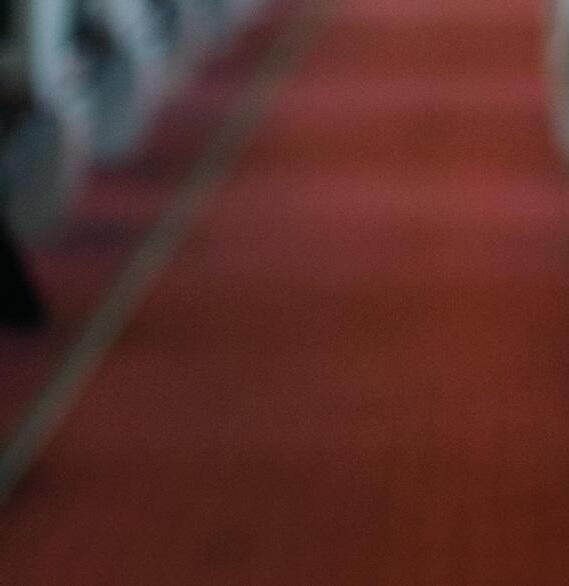





REPLACE USB MODULES ON-SITE, IN MINUTES //
OE’s patented, replaceable TUF-R USB modules are designed to be easily repaired when they incur damage or swiftly upgraded as technology advances.
With our proprietary TUF removal tool and exchangeable modules, you can replace TUF-R USBs on-site without need for an electrician or turning the power o . FIND

















OUT
Railway Approvals company a DB
MORE: transport.oeelectrics.co.uk



The inaugural Connected Places Summit has been held in London with more than 220 speakers and hundreds more delegates. Rail Director reports from the two-day event






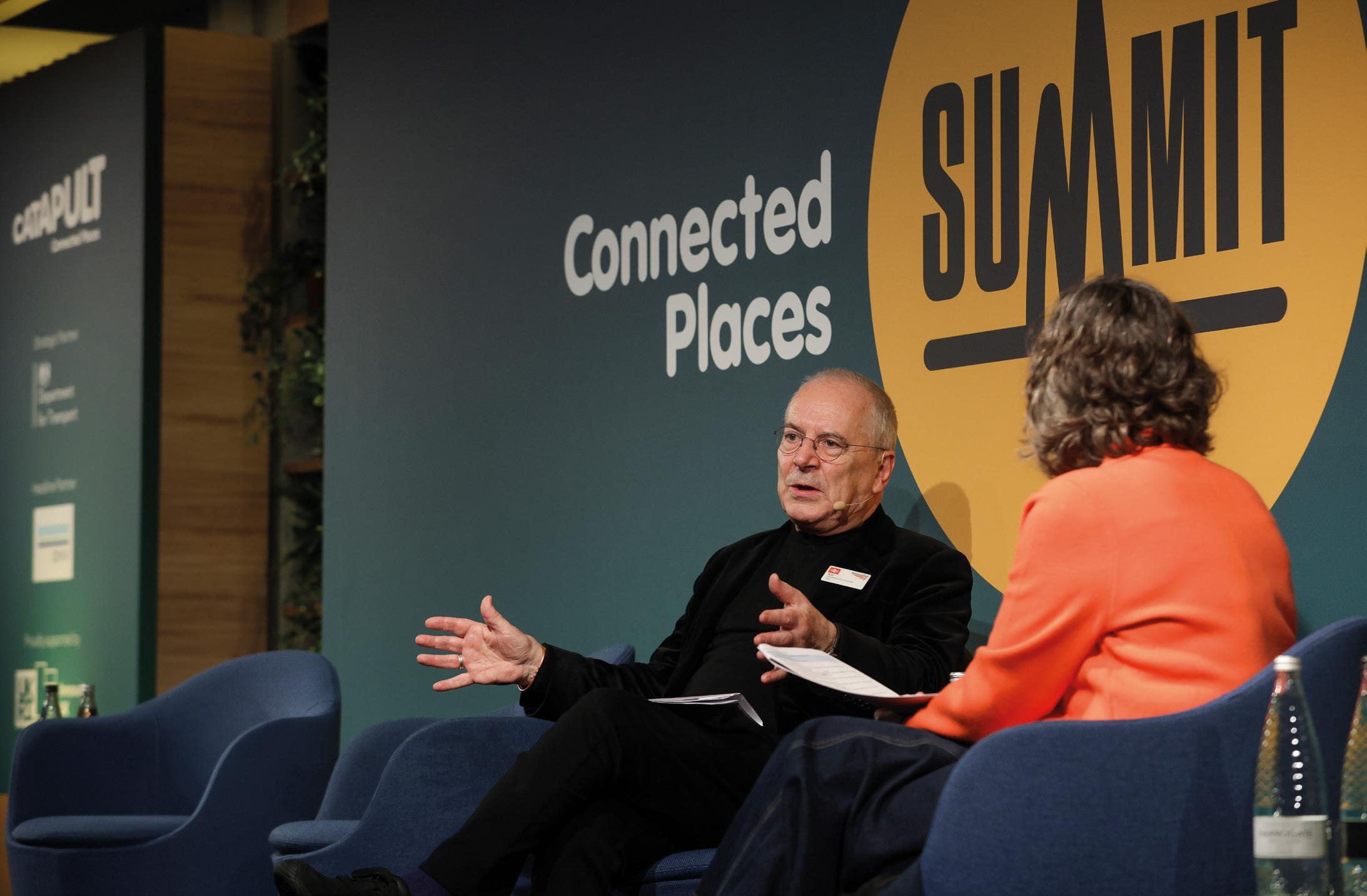



Setting the platform to connect places
“T
his is the end of the day, but the beginning of the next chapter.”
That was the message from Erika Lewis, Chief Executive Officer of Connected Places Catapult, concluding the Connected Places Summit which was hosted by the organisation.
“It has been an amazing couple of days. Now is the time to think about what we do next,” she added.
Connected Places Catapult, the UK’s innovation accelerator for transport, cities and place leadership, brings together the disciplines of roads, rail, aviation and ports alongside housing and the art of place leadership.
Across the two days of its inaugural summit, there were 220 speakers in London watched by more than 850 delegates in person, with over 1,000 more watching online. They heard talks on cross-cutting themes which included climate resilience and making sure infrastructure fully addresses the needs of all people.
“These are the challenges that we must address through leadership that is harnessing the power of new thinking, growing business and new technology,”
said Erika, speaking on the opening day of the event.
“The truth is we can’t just have one answer. We need to harness the many approaches that can only come from seeding and supporting new ideas and working together with you, we will be a force for positive change in the world.
“As the UK’s innovation accelerator for cities, transport and place leadership, our mission is clear. We connect people, places, and businesses for a future of sustainable growth and prosperity. Working with you, we are a creative hub of collaboration and innovation and together we can be a driving force behind the transformation of our cities, transport systems and our communities.”
Speaking on the opening day, keynote speaker Peter, Lord Hendy of Richmond Hill, said: “What connectivity drives is economic growth, jobs, housing, social cohesion, and sustainability. Places that aren’t connected don’t get housing, don’t get jobs, and don’t contribute to our economy in the 21st century.”
Speaking about the future of the railways, the Chair of Network Rail added: “The railway has been extraordinarily adaptable ever since it was invented. It
survived two world wars, survived the growth of mass car ownership, it survived all sorts of translations of shifting populations around the country.
“So I’ve got no fear that the railway will not continue to be useful in the next three or four decades of the 21st century. And indeed, that’s evidenced from the fact that the politicians are vying with each other to promise unbelievable amounts of money to invest in the railway to get better connectivity.
“What we do need to do is to fix how it works. How it’s organised needs to be fixed and it needs to be fixed rapidly and we are very committed to doing that because in the end you want somebody who takes account of the contribution that the railway should make to the British economy and society and is responsible for the performance of it on a day-to-day basis.”
Also on day one were keynote addresses from Cabinet Office Minister, Baroness Neville-Rolfe DBE CMG, Glasgow City Council Leader Councillor Susan Aitken, Andrew Haldane, Chief Executive of the Royal Society of Arts, and Mission Zero Report Chair and former MP Chris Skidmore.
Lord Hendy, Chair of Network Rail, pictured speaking on the opening day of the Connected Places Summit. Images: Connected Places Catapult
CONNECTED PLACES SUMMIT 26 April 2024
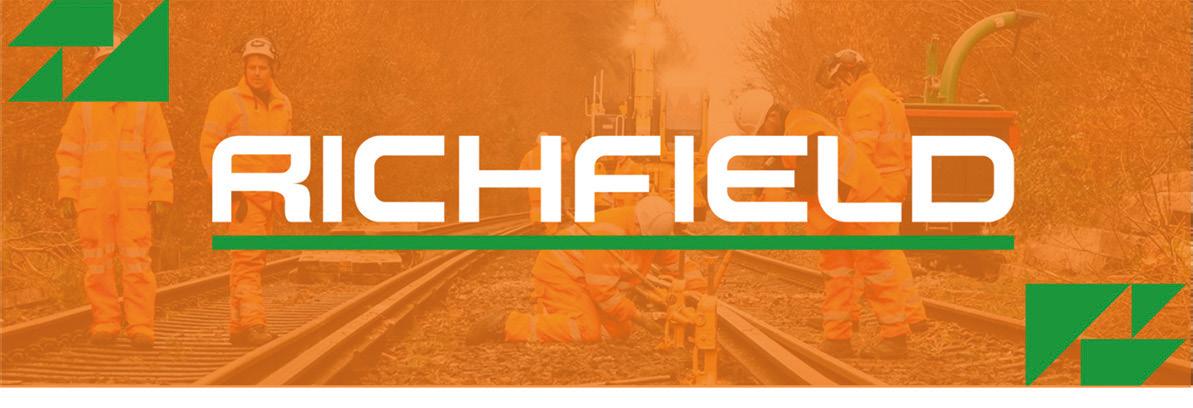











In one of several panel discussions, Professor Gopal Ramchurn, Professor of Artificial Intelligence at the University of Southampton, speaking as part of the topic of ‘Leveraging AI to Improve Transport for All’, said: “I see huge opportunities about making transport safer, making transport more accessible, more available to everyone, and making transport greener.”
The Connected Places Summit was supported by Innovate UK with the Department for Transport as strategic partner and DNV as the headline partner.
During the two days delegates watched keynote speakers and listened and asked questions to panels discussing how to spread prosperity fairly across cities and regions, how to accelerate innovation between sectors, and opportunities for improving our built environment.
Sir John Armitt, Chair of the National Infrastructure Commission, was the opening keynote speaker on day two of the event, when he spoke of the need for “an urgent and comprehensive review of projects in the North and the Midlands”.
Commenting on the impact of an election and what a potential change of Government could have on infrastructure projects, he said: “I’m not sure that the next Government of whatever colour will have any choice but to pull all the levers at their disposal to unlock investment and infrastructure if they want to increase the UK’s productivity.
“That is of course as much about encouraging private investment as it is about opening public spending tax. We believe the public investment levels are going to have to go up to £40 billion a year, at least over the next 20 years.
“So despite the fiscal context, I think there is reason to be hopeful that any new Government will want to strain every sinew to make the UK a more attractive place to invest.”
for is that we start to think about accessibility and inclusion in the broadest possible framework; a framework that says people who have accessibility and inclusion needs are employed, they don’t all use wheelchairs, therefore it is not all about the built environment, and if we can do that and think across a longer time frame than an annual cycle, develop a national strategy, then I think we will really be harnessing what the railway can do.”
The Connected Places Summit came at an exciting time for Connected Places Catapult. The same week as the event, the Department for Transport announced it was maintaining a partnership that sees the Catapult regularly support the department by leading programmes designed to address key Government priorities.
Connected Places Catapult also announced the names of three companies chosen by the Catapult, Network Rail and Great Western Railway to trial new technology as part of the Station Innovation Zone at Bristol Temple Meads. The three firms – Chrome Angel Solutions, Co-You, and CrossTech – were selected from a longlist of eight companies announced in January, which were keen to demonstrate new ideas to help improve various aspects of the passenger experience at the station.
Each of the three shortlisted companies will receive funding of up to £75,000 to take their proposals forward for trial, testing and evaluation, after initially being awarded £2,000 to develop a trial plan and receiving business support and pitch coaching.
I’m not sure that the next Government of whatever colour will have any choice but to pull all the levers at their disposal to unlock investment and infrastructure if they want to increase the UK’s productivity
Speaking about investment, in a separate talk, Alan Peters, Connected Places Catapult’s Ecosystem Director for Rail and Stations, said: “We need to be ambitious and have clear views on what we focus on next. I would say it is time to invest in the digital and data infrastructure that allows rail to be at the core of an efficient, sustainable public transport network.
“It sounds expensive, it sounds complicated, but actually we’ve seen significant transport change like this multiple times over the last 250 years, why would we stop now and not really build any new infrastructure?”
Accessibility was a particularly prevalent topic on day two of the event. During a panel Anna Landre, Board Member at the National Centre for Accessible Transport, said: “We need investment in expertise and trust. We have a moral responsibility to design for the broadest swathe of human diversity as we can. A lot of the time, people mean well but don’t do it correctly.”
In the same discussion Selina Mason, Director of Masterplanning at Lendlease, added: “If you design in a more equitable approach from day one, the return on investment will probably be improved… creating a more open, accessible and equitable environment and more resilience for the future.”
In another panel, Alicia Andrews, Commercial Director at Southeastern, said: “What I really hope
Speaking at the summit about the Station Innovation Zone, alongside representatives from the three organisations, Steve Close, Social Research Lead at the Catapult and Technical Lead for the Station Innovation Zone, said: “We need to accelerate the uptake in innovation in the rail industry by breaking down those barriers, and trying to bring the supply chain and people with solutions to problems, together with the people who own the problems.”
What was particularly pleasing to see was that the conversations went beyond the speeches, with different sectors networking and discussing ideas on how they can work together during breaks in the talks.
Kristoff Van Leeuwen, Head of Rail Business Development at Connected Places Catapult, said: “Often in our own worlds of work you are focused on one vertical, be it rail, stations, highways or ports; but actually coming here and watching it all knit together is brilliant and for me personally it is not so much the verticals, it is the themes that cut across all of them that is really fascinating.
“I’m the first to admit that in certain sectors it is very siloed and that is generally due to the deep technical nature of the sectors. The real value of coming here is seeing so many exhibitors and sharing panels with people from rail, road, marine, aviation and the built environment. All sitting down and discussing is going to push us along as industries. The challenges we have in rail aren’t unique to rail. We are seeing less money for rail so we have to work together to get more out of that money and so it is important and makes so much sense to put our pounds together with other industries to make it go a lot further and share ideas.”
CONNECTED PLACES SUMMIT 28 April 2024
Anna Landre, Board Member at the National Centre for Accessible Transport, pictured speaking during day two of the Connected Places Summit
Trac Cable Transporter
Transforming the way in which you transport and dispense cable across track from any point of the rail line.

Features and Benefits
• Extremely agile and manoeuvrable around most track furniture.
• Certified for use under live OLE (Overhead Line Equipment).
• Can work with a variety of types and sizes of cable drums.
• Compact size enables rapid deployment and demobilization.
• Creates both time and cost efficiencies and deploys quicker than alternatives.
• Remote controlled creating safety exclusions zones for track teams.
• Transports and lays out all geotextiles for formation works.


Find out more at mccullochgroup.com M u l t i -purpose rubber tracked machine Lifts, transports, and dispenses cable Extremely agile and manoeuvrable




Danny Aisthorpe, Head of Engineering at Siemens Mobility UK Rail Electrifi cation, explains more about the REAL Alliance and asks whether static frequency converters make UK rail electrifi cation more affordable

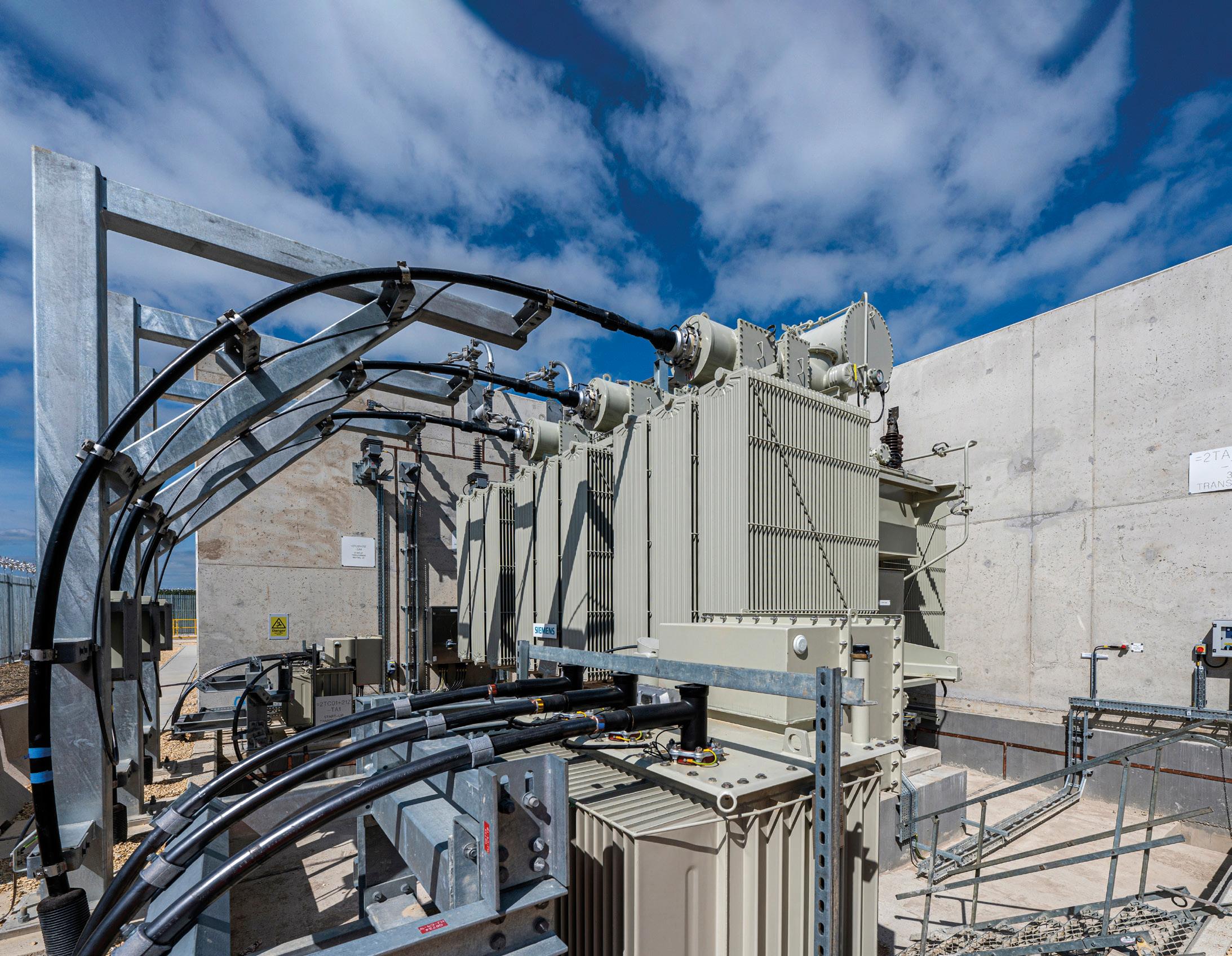
Latest technology reduces cost of electrification
In a groundbreaking moment for rail electrification and sustainable transport, the REAL Alliance, which includes Siemens Mobility, commissioned the world’s largest Static Frequency Converter (SFC) feeding railway overhead line equipment (OLE), near the village of Hambleton, in January this year.
The SFC is a cutting-edge solution that feeds 27.5kV to power both the East Coast Main Line (ECML) and Transpennine routes. This would previously only have been possible with increased line-side infrastructure, costing far more than the solution which has been delivered in Yorkshire.
But what’s different about this SFC technology and why does it herald a new era of efficient, resilient, and affordable rail for Great Britain?
A revolution in traction power supply
Electrification is clearly a powerful weapon in the
railway decarbonisation armoury, enabling lighter trains to operate more efficiently and effectively than ever before. But delivering and conditioning traction power has always been a costly process until now.
The UK electricity network operates on a ‘threephase’ balanced system of power distribution. Historically, our railway power supplies are connected directly using only two of these phases of the electricity network. Together with train harmonics, this phase imbalance restricts the amount of power that can be obtained from local supplies.
Recent and future changes in the supply network mean that loads increasingly need to be balanced, reducing the power available from these types of railway supplies.
Unlike legacy railway supplies, the SFC in Yorkshire takes a balanced load from all three phases, eliminating the restrictions of unbalanced connections. This brings the opportunity for more
power to be taken from the electrical network wherever it is needed.
On recent electrification schemes, power has been drawn only from a limited number of expensive National Grid supergrid supply locations, requiring the power to then be fed long distances along the railway. This requires more complex overhead line and more, bigger lineside substations to boost the voltage over long distances. As a result, the cost, disruption, visual intrusion, and ongoing maintenance of recent electrification schemes have been greater than in countries where SFCs are used.
Computer-controlled power electronics in the SFC create a ‘digital derived output’ which is precisely controlled to maintain good voltages for trains. Being a modern, ‘smart grid’ compatible electronic load, it can be connected where the railway needs it: in this case, right at the junction of the East Coast and Transpennine railways, enabling flexibility for
ADVERTORIAL 30 April 2024

maintenance and keeping trains moving even when one route is disrupted.
This means that more power is available to the trains, and less energy is wasted in getting it to them. The ‘classic’ feeding means that fewer, simpler substations and no additional OLE conductors or larger masts are required, drastically reducing infrastructure costs and passenger disruption during installation. For example, between Doncaster and Edinburgh, the SFC has saved over £500 million in infrastructure costs, due to the ability to harness power for the railway exactly where it’s needed.
A transformational impact on journeys
Siemens Mobility’s SFC technology digitally controls the voltage for trains, enabling them to accelerate faster, which helps to cut journey times, while also maximising energy recovery during braking. 30km away in York, Hambleton SFC’s feeding area ends, and York FS feeding area begins. Even at York, voltage for trains is higher and more stable on the side being fed from Hambleton than the side fed from traditional supply at York itself. This remarkable adaptability enables more electric services to run on the railway, more efficiently, and faster.
Simpler overhead lines and fewer, simpler substations also means that less can go wrong on the railway, which means fewer disruptions to services, as well as lower maintenance costs. This helps build resilience into the railway and means passengers can rely on a more punctual service.
Safer operation
The SFC in Yorkshire has been designed as part of a complete railway electrification design with safety at its core. The complete railway electrification is designed as a system from the distribution topology, through switchgear and protection, to the SFC supplies to form an integrated digital power supply.
Once commissioned this enables more sensitive detection of short circuits, followed by effective fault clearance in as little as nine milliseconds, meaning a more reliable and safer railway, with fewer dewirements. By comparison with the same event in the same place on a ‘conventional’ electrified railway, fault energy is reduced >99 per cent. This means fewer disruptions for passengers and safer operations for those working on our railways.
A glimpse into a more efficient future
During the testing of the SFC in August 2023, a pivotal moment took place. As part of reliability testing, temporary software enabled the parallel

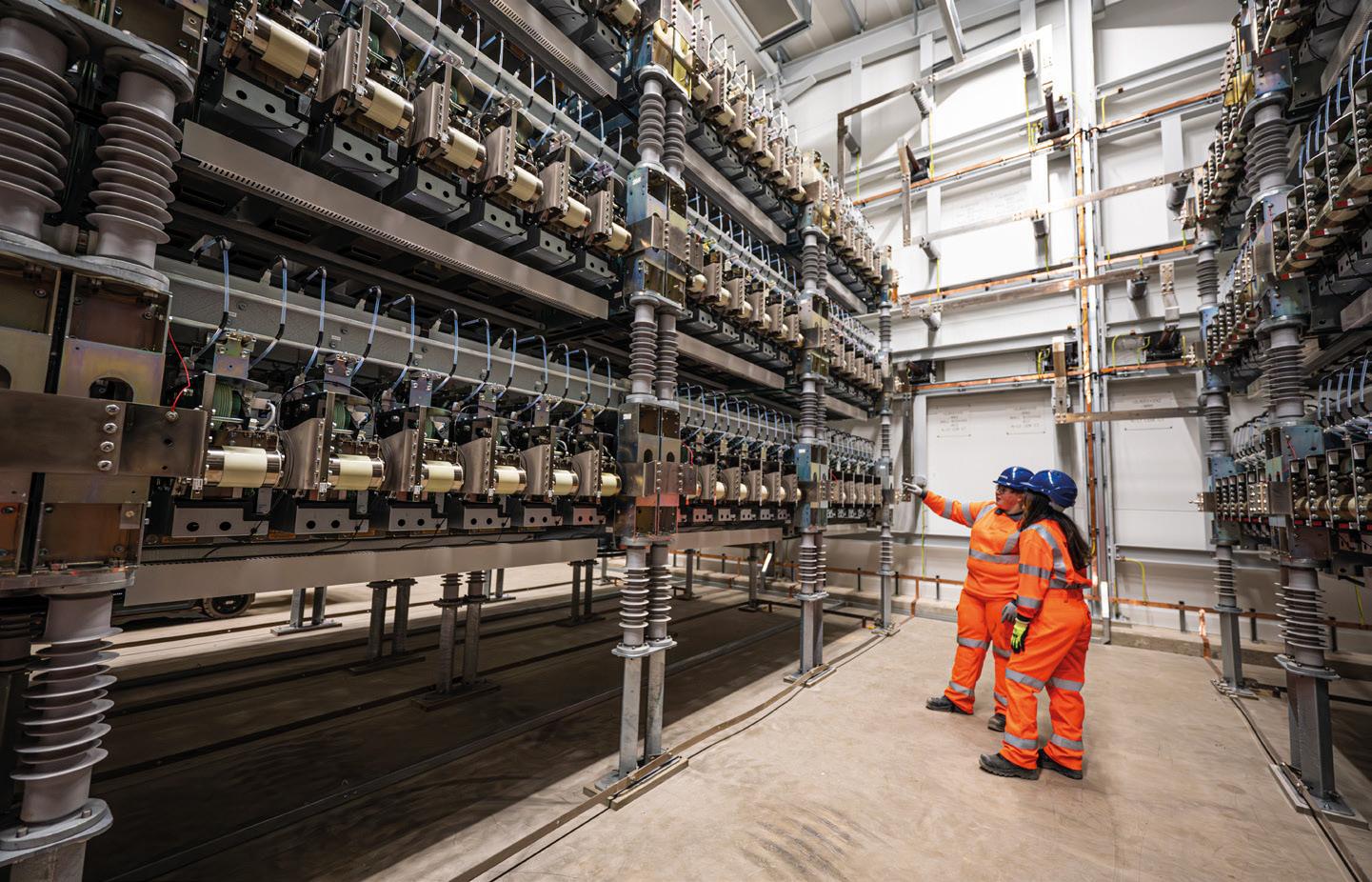
operation of two SFCs for the first time in the UK.
This development combines the supply from multiple grid infeeds, slashing energy losses further, increasing capacity on simple, affordable overhead line, and eliminating the need for neutral sections. This shows the huge potential this novel technology has in store for the future.
The result of true collaboration
Siemens Mobility’s SFC has now been fully commissioned and has been in operational service on the ECML since 14 January. The REAL alliance, in collaboration with Siemens Mobility’s UK Electrification Team, has delivered an astonishing leap forward for UK railways.
Now that this technology is in operation, the next generation of electrification projects would benefit from SFC technology to enable affordable electrification.
Ultimately, the ripple effects are substantial — more power, efficient journeys, and increased capacity — all coming together to support the UK’s shift toward low-carbon, affordable transport.
Visit https://www.mobility.siemens.com/uk/en/
The SFC, a piece of cuttingedge technology, feeds 27.5kV to power both the East Coast Main Line (ECML) and Transpennine routes
ADVERTORIAL 31 April 2024
HS2’s Innovation Manager Rob Cairns explains more about the innovation that isn’t just transforming this project, but the rail industry and beyond
The journey to innovation billionaires

nnovating to do more with less and create fewer emissions and noise, building the legacy of knowledge, expertise and new commercial opportunities.”
That is the mission statement from HS2 as it looks to be a world-class 21st century railway service that embraces new technologies.
As Rob Cairns, HS2’s Innovation Manager, points out, the project is already well on with that journey and is reaping the benefits. So far, just over £500 million of savings have been made from innovation from the programme as well as 500,000 carbon tonnes of savings, with a further 150,000 tonnes identified from innovation opportunities.
He said: “Innovation in the construction sector has historically been quite slow and hasn’t really realised its true value. Crossrail, the next major programme prior to HS2, was really the introduction of a formalised innovation programme to support the delivery of major infrastructure.
“If you look at the outputs of that, they delivered about £3 million worth of baseline savings for the programme. The HS2 innovation programme has been built on the foundations of what Crossrail delivered and that has allowed us to implement a strategy really early, engage with our supply chain really early and incentivise them to innovate.

“That has been the key thing, innovation is in the supply chain’s contracts; we want them and expect them to innovate, and we are working with them to enable it. There is still a huge amount of opportunity to go after savings both cost and carbon, but also protecting the workforce as we move over from a really complex main works civils programme, to a rail systems programme and then hand it back to the client for an operational railway.
“Technology and innovation can make things less complex and what we’ve done is really highlight, with facts and figures, what the output is and how you commercialise the value of innovation, but also to focus on sustainability because if you focus on sustainability you are typically doing less, and you are using less, and that means you get cost savings associated to it as well.”
The aspiration is for the project to become an innovation billionaire, saving a billion pounds of efficiencies from the innovation programme.
“This isn’t just a finger in the air activity, you need to demonstrate the technical buy ability of a solution and we ask our technical team to assure it works, but then you also have to sit down with a commercial director who validates where the saving opportunity comes from,” he said. “That is where negotiation comes into it, as opposed to a traditional innovation manager role where you are creating and developing ideas, you are sitting down and negotiating with commercial managers to secure savings.
“We think we’ve identified enough opportunities in phase one across all of the major contracts for HS2 to become innovation billionaires. We have developed a pipeline of opportunities, including those we’ve already proven on a main work civils contract that can be applied and add immediate value to a station
“I
HS2 32 April 2024
Images: HS2 Ltd
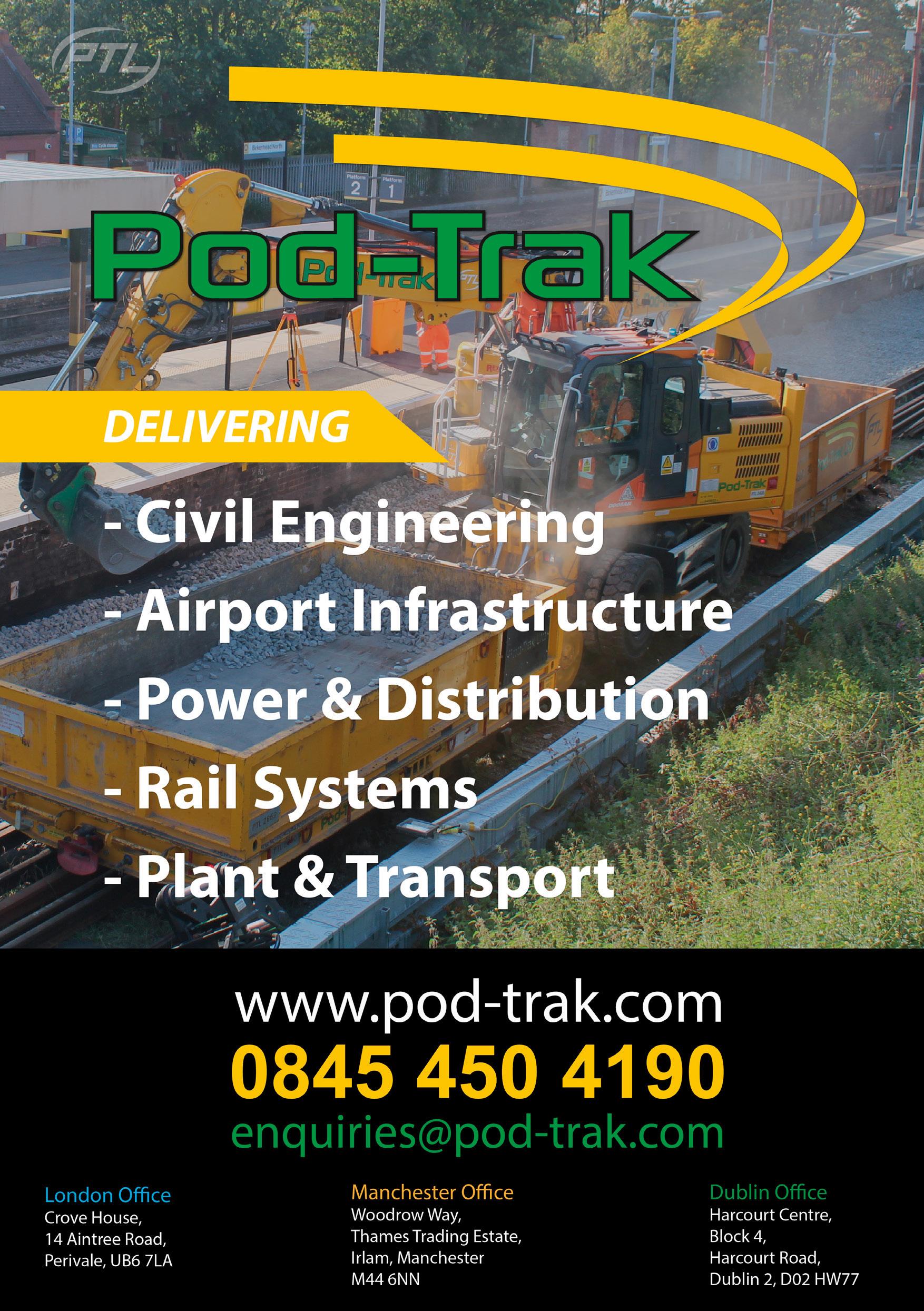


We are quite a small innovation team, but we’ve built a big network across all the contracts working on the programme, so we’ve built a bit of a community with people engaging
contract that isn’t yet mobilised, or to a railway systems contract.
“We’re not duplicating effort, we’re really trying to scale and adopt a proven innovation across future contracts.”
In Rob’s nearly eight years as Innovation Manager he’s seen positive behavioural changes when it comes to innovation, and has seen a growth in entrepreneurs taking ideas and starting ventures, describing it as a mini-boom in companies taking their creativity to the next level.
“From an HS2 perspective the first two years of innovation were around developing a strategy, building a culture and really working with the private sector to educate them on what was expected as a client, and what the Department for Transport expects us to deliver as the end state railway,” he said. “With the relationship built with the supply chain, we have then been able to build that pipeline. The quality has not been a concern, it’s been a high rate of ideas, high-quality ideas demonstrating regular returns.
“Behaviours wise, demonstrating the savings and efficiencies associated to innovating and focusing on how you can save, and the commercial value associated to innovation, is helping the private sector organisations recognise that this is worth their time.

“Private companies have recognised that with the scale of the HS2 programme there is a once in a lifetime opportunity to really grasp innovation and deliver it and that could be working with really innovative small medium enterprises, or it could be creating some really innovative thinking around design and engineering capability. To achieve that we have strived to create a culture and environment where people feel comfortable that they have an opportunity to do something differently or innovatively but also ensure that the mechanisms are in place to make sure that when times get tough you can still drive the outcomes that are needed and wanted.”
A success story has been the Innovation Accelerator programme, a partnership with the Connected Places Catapult. The sixth programme
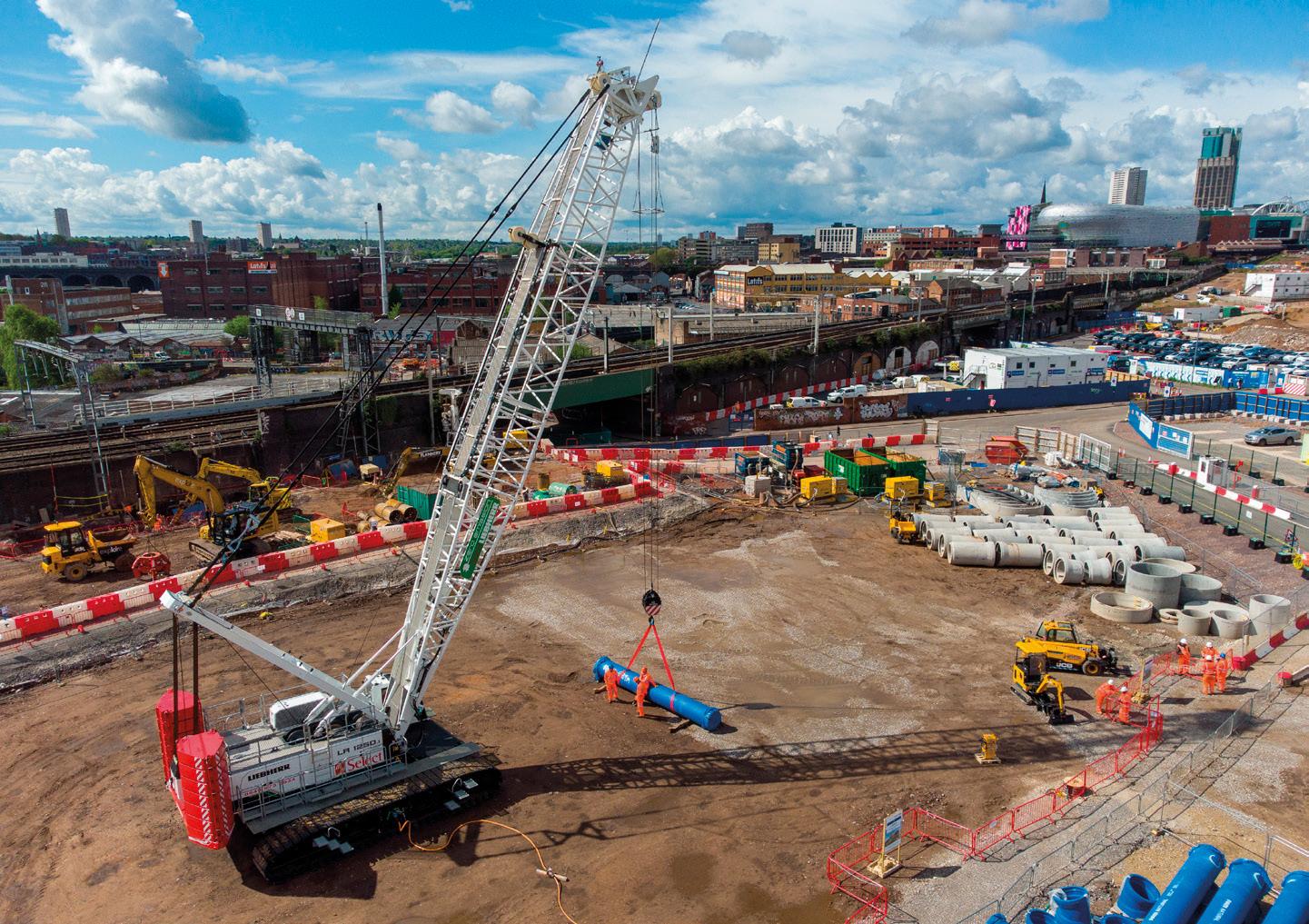
was launched in March, looking to new and existing tech firms to suggest innovative technologies to speed up design, automate construction handover and strengthen the role of the circular economy during site decommissioning at a project’s end; the latter has a target of avoiding 95 per cent to waste through circular solutions, repurposing or supporting local communities with assets and materials.
Up to six enterprises will join the Accelerator programme in June 2024 and after five months of development inside the Accelerator, the firms’ solutions will be showcased and pitched to industry investors and HS2’s supply chain, consisting of thousands of companies ranging from the largest international engineers to specialist suppliers to the project.
“We created the Innovation Accelerator programme in 2019, and so far, there have been five cohorts, 25 businesses, and we’ve seen more than 440 jobs created and more than £200 million in private venture capital funding,” said Rob. “It is that access to startups that has been really powerful, close working relationships, supporting them to grow their businesses but adding value to the programme at the same time.
“Cohort six has been launched and we’ve future cohorts planned to support the railway as it gets developed, moving from main work civils, to railway systems, to handover and operation. The focus of the Accelerator programme will shift to each of those themes and it will work with us to support SMEs in each of these areas.
“The Accelerator programme has been a great example of how we are creating a platform and running a due diligence exercise to validate these startups and supporting them to grow, but then they need to go and talk to another industry to secure that investment to grow and scale their business. That is where investment models are really interesting around how they can continue to support SMEs and that is where we are working really closely with the Department for Transport to try and implement new investment models that can help drive that investment approach to working with SMEs.”
It is something that Rob is particularly proud of, especially seeing organisations grow and play such a vital role in the HS2 project.
“We are quite a small innovation team, but we’ve built a big network across all the contracts working on the programme, so we’ve built a bit of a community with people engaging,” he said.
“Things that don’t go well are probably the really important things in the innovation space, so you don’t duplicate effort but importantly we share with Network Rail and National Highways. Collectively, whether that is HS2 Ltd, HS2 in our supply chain or HS2 as industry, everybody is pulling together to deliver innovation and that is something to be really proud of.
“What we are doing is beneficial for everybody. That is the legacy we want to see from HS2. It is about how we ensure that we are really capitalising on the big steps that we are taking in innovation, and how we learn the lessons and embed them as ‘business as usual’ so it’s not considered innovation on the next major programme.”
HS2 34 April 2024
For more information on the HS2 accelerator scan this QR code

AC MOTOR SERVICES
■ Standard Overhaul /Maintenance
■ Full Stator Rewind
■ New Rotor Manufacture
■ New Shaft Manufacture


For more information or to arrange a visit, call us on +353 1 4520033
Associated Rewinds are the leading European company for the Maintenance, Repair and Rewinding of AC & DC Traction Motors for all types of Trains, Trams, and Metro systems.

SYSTRA’s Charlotte Woodhall-Jones has been named one of the Top 20 Women in Ground Engineering. She wants to use this recognition to be a role model for her discipline and to all women in engineering
Relishing the challenge
“W
e are in a period of transformational change and although we are still in the minority, our voices are being heard and we are an integral part of this change.” That was the message from Charlotte WoodhallJones, who has been named one of the Top 20 Women in Ground Engineering.
She joined SYSTRA in December 2022 as the new Discipline Lead for Ground Engineering, and leads a team of more than 40 geotechnical engineers and engineering geologists that delivers major transport projects in the UK and overseas.
“I relish the challenge of leading a large team,” she said. “I love getting to know people, as everyone is unique and has different motivations. I enjoy the positive feeling when I can help deconstruct why an individual has a particular challenge. Being able to coach them through self-reflection towards a way forward gives me a great buzz. It’s my ambition to support every one of my team on their journey towards being the very best version of themself.
“Every project has its challenges, therefore leading a team through the design and delivery process will inevitably mean encountering and finding solutions to many challenges. As a ground engineer much of our work is often hidden below ground, however working on major rail and road infrastructure projects can mean seeing your work.”
Within a year of joining SYSTRA, Charlotte has been praised for transforming her team into a connected, energised, and forward-looking unit. Among the success stories has included the introduction of progressive workshops for her team. These events are designed to understand and celebrate difference in social and learning styles and ensure that colleagues with neurodivergent traits do not feel marginalised.
“The past year has gone in a flash, and I can truthfully say that it has been career-changing,” she said. “By bringing my whole self to work from day one I feel like I am starting a new phase of my career by embracing leadership.
“I am super proud to say that I have transformed my team into a connected, energised, and forwardlooking unit. This process has been collaborative in every way. I spent much time getting to know my team on a 1-2-1 basis; I wanted to understand their motivations and individual skill set. This led to setting up several working group initiatives to upskill and
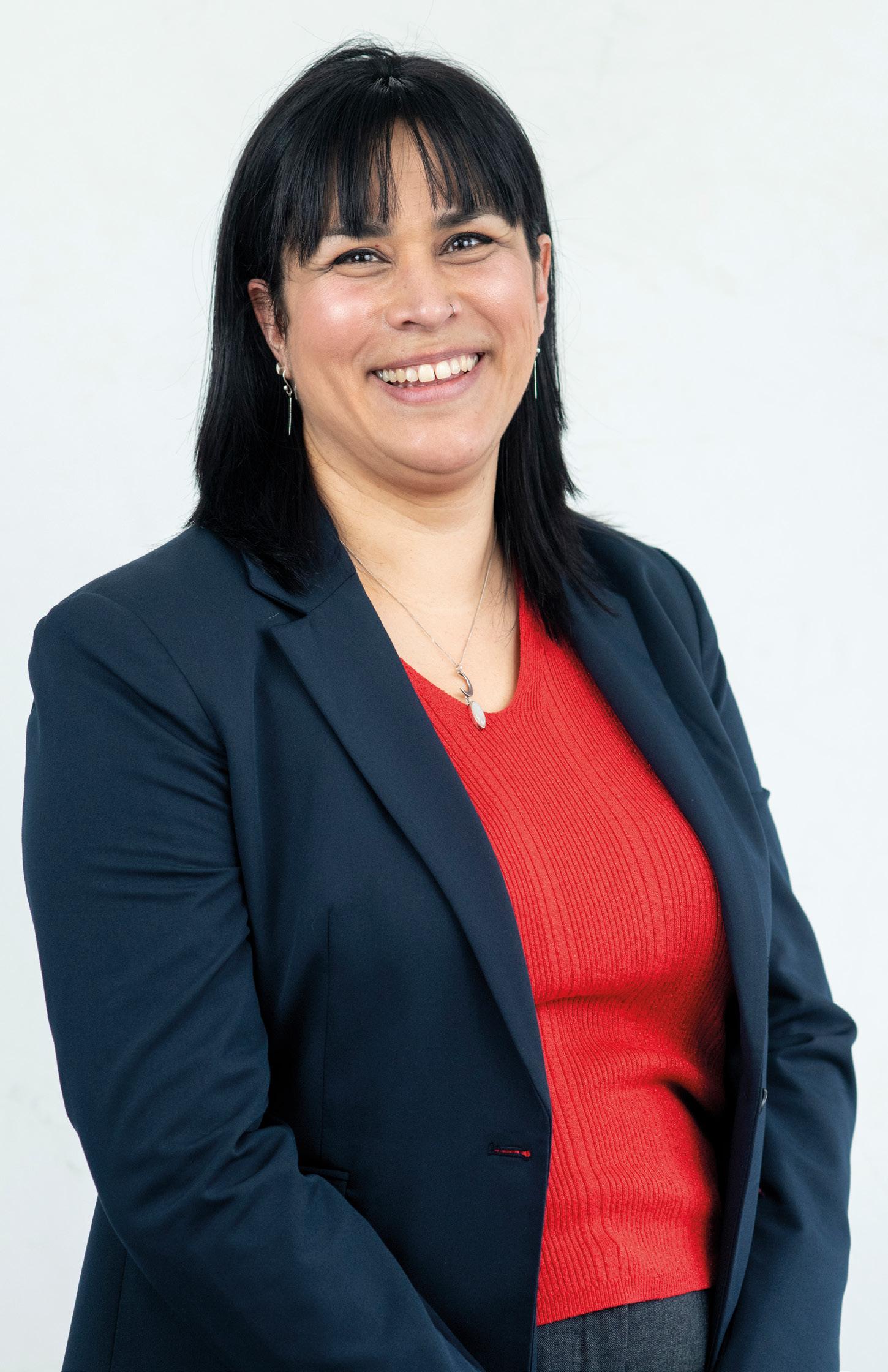
ENGINEERING 36 April 2024
Building strong foundations
While the demand is always there for new staff,
“This industry isn’t for the faint-hearted. Late nights, early mornings. Long periods of time away from your family. My office is my mobile phone and my van; we’re always on the road, on-site, and getting
“Our team shares a deep commitment to the enduring success of our business and is constantly seeking ways to enhance their skills and improve our
“We take pride in being one of the few geotechnical companies that offer specialised drilling NVQs to our team, ensuring that our workforce remains at the forefront of industry
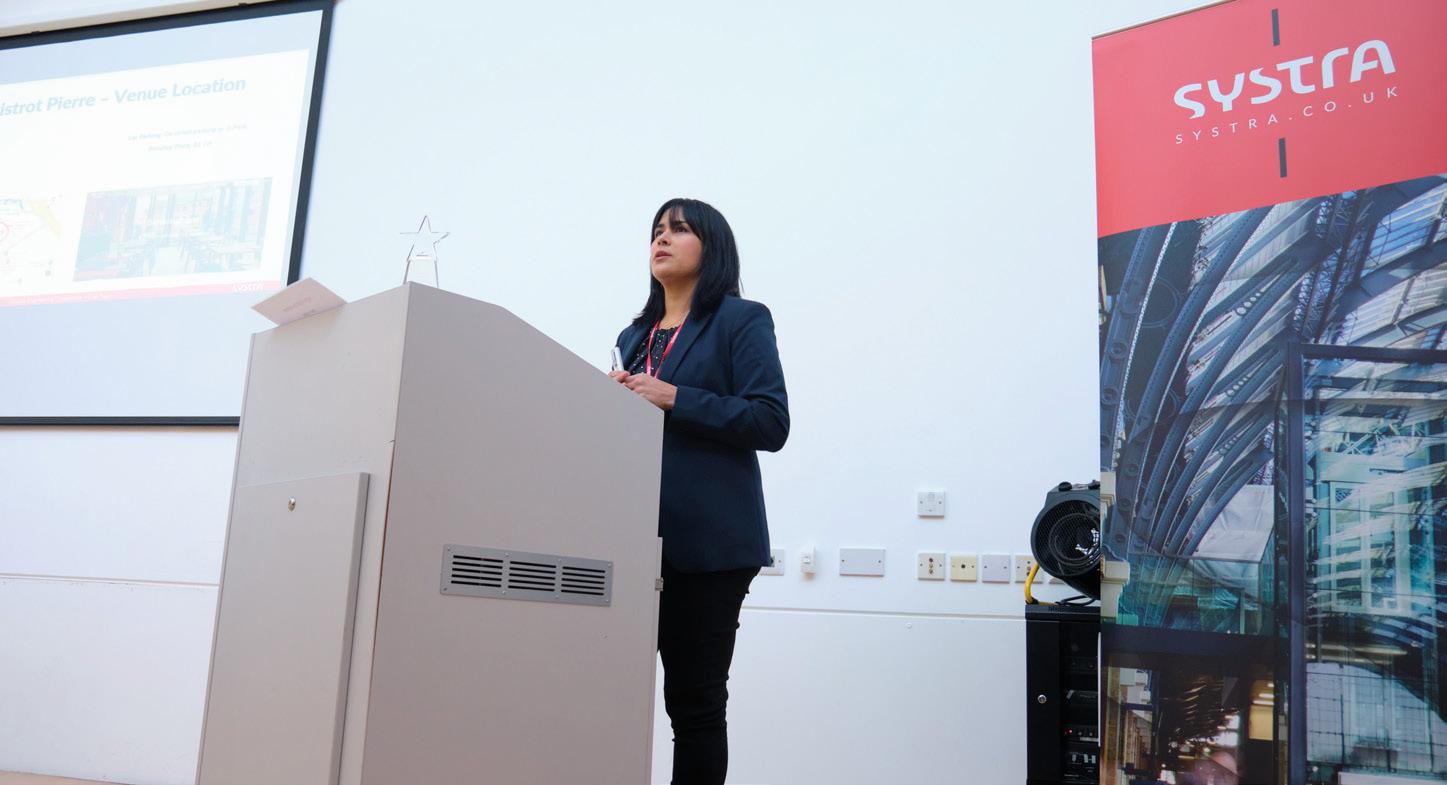
This is a critical moment for the piling and foundations industry
“This is a critical moment for the piling and foundations industry. Exciting innovations within pile design and installations are allowing for improved project turnaround times and more technically demanding programmes.
develop the team on three topics: sustainability, engineering geology and structural geotechnics, and digital innovation.
Investment in staff is one thing. But the evolving rail industry landscape also demands industryleading equipment. To address this, Kieran provides a candid glimpse into a forthcoming investment at SEP Geotech:
Prioritising growth and expertise
“I also established an end-of-year ‘Ground Engineering Discipline Team Conference’ to celebrate difference in all our learning styles and behaviours. I brought in external trainers and motivational speakers to run workshops on social communication styles to encourage understanding between colleagues and ensure that those with neurodivergent qualities would be celebrated instead of feeling marginalised.”
“By leveraging our team’s experience, alongside utilising the wider SEP Rail Group’s capabilities, SEP Geotech is in a perfect position to deliver projects from feasibility to design through to completion.”
Investing in the professional development of the current team is also not just a priority; it’s a key part of SEP Geotech’s vision for the future.
Charlotte is both a chartered geologist and a
chartered civil engineer, a rare combination. She has over 20 years’ industry experience in the public and private sectors, working on major road and rail projects such as the East Leeds Orbital Route and the recently opened Ebbw Vale Rail Enhancement project, South Wales. Charlotte’s team is currently delivering the Transpennine Route Upgrade (TRU East) between Leeds and York.
“We’re investing in a new, state-of-the-art solution designed for safe work on embankments, slopes, and even over water. This innovation eliminates the need for traditional rope access, streamlining our processes even further.”
Every project has its challenges, therefore leading a team through the design and delivery process will inevitably mean encountering and finding solutions to many challenges
With 40 years’ experience in heavy duty lifting solutions, Totalkare combines world class products with industry leading support to facilitate effective maintenance and repair, keeping you on track for success.


“As Discipline Lead at SYSTRA, I most of all enjoy being able to use my experience to coach, mentor and support early career professionals,” she said. “When I first started my career over 20 years ago this type of support was missing. I also love being
As SEP Geotech continues to evolve and expand its offerings, one thing is clear: Kieran Moran’s experience, dedication, and vision will remain at the forefront, driving the company to even greater heights in the geotechnical engineering industry.
RAILWAY LIFTING JACKS RAISING STANDARDS
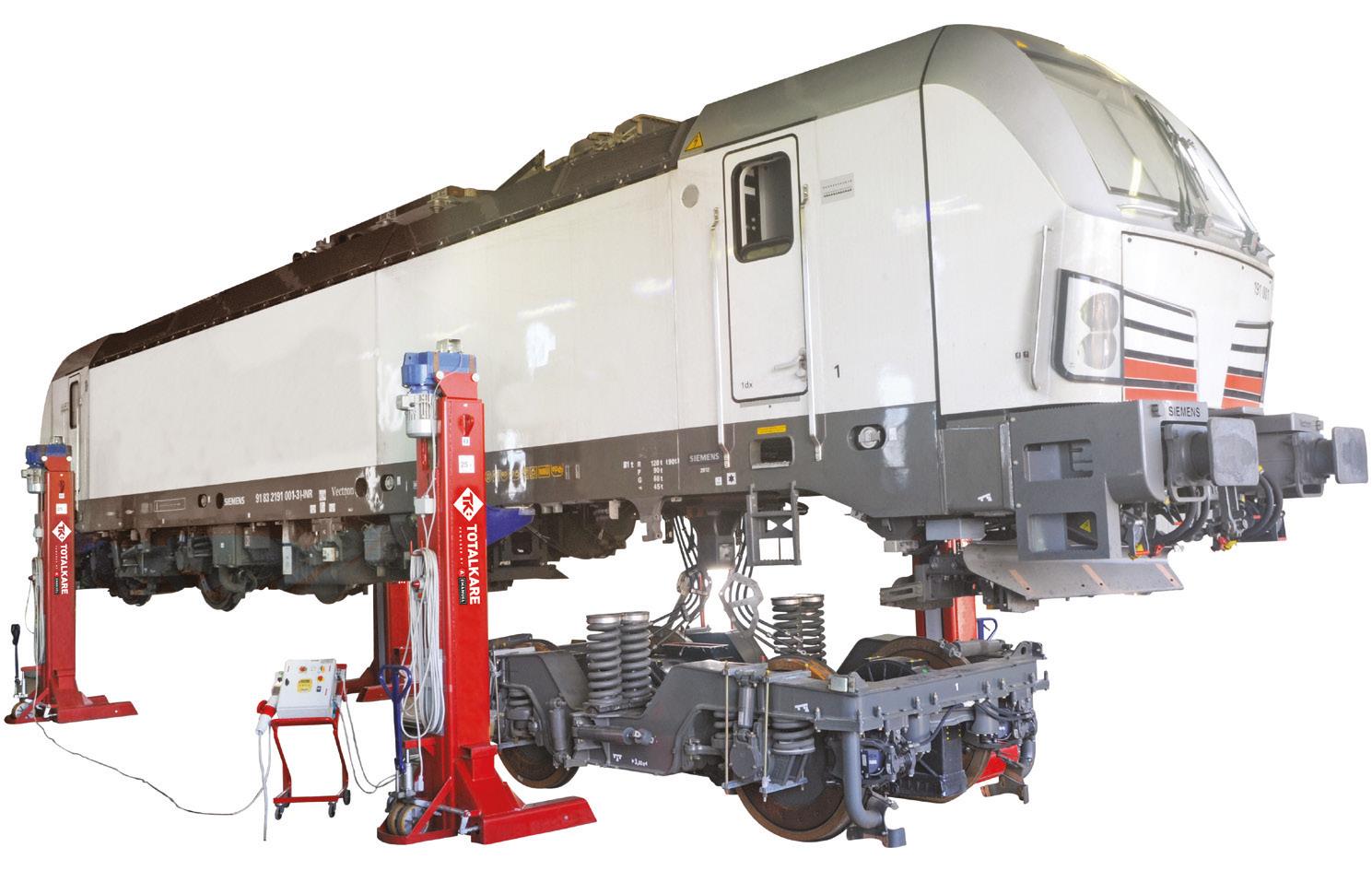


CALL 0121 585 2724 VISIT WWW.TOTALKARE.CO.UK
ADVERTORIAL 20 November 2023 Untitled-9 4 16/01/2024 11:56
ENGINEERING 37 April 2024
Today, it’s so encouraging to see so many transformational women across the industry
said. “Working on such an inspirational architectural project with a great team meant that I saw the project from concept through to the completion of its foundations. I learned a great deal from this experience including the professional ethic and approach to design that I still use when leading my team today.
“To form the borehole within the theatre’s main auditorium during the performance season, I had to earn the complete trust of the RSC client and my project colleagues which I feel was one of my biggest professional achievements to date.
“A memorable and unusual moment during the ground investigation phase on the RSC project was having lunch with actor Patrick Stewart when he was performing in Anthony and Cleopatra. This made the experience even more special, as I am an avid Star Trek: The Next Generation fan.
she said. “Like many women in engineering, I have experienced a plethora of negative prejudices in the workplace, and have often felt unable to challenge them, especially early in my career.
“Today, it’s so encouraging to see so many transformational women across the industry. We can see good examples of female-friendly workplaces and policies with better provision of sanitary waste facilities on construction sites, more female PPE choices, and better understanding amongst managers and leaders on issues surrounding previously taboo subjects in the workplace including menopause and menstruation.”
But what can be done to further drive change?
part of a progressive team of senior leaders who are building a strong business whilst simultaneously navigating the dynamic world of infrastructure engineering.
“I have always been curious about rocks and always wanted to work in a science-based subject. As an A-Level student I had no idea about studying engineering or geology. This lack of awareness is still there today, especially for girls taking up STEM subjects. That’s part of the reason why I am a STEM Ambassador and regularly work with primary school children at Key Stage 2, teaching them about ‘soils and rocks’.”
Charlotte’s work on the redevelopment of the historic Royal Shakespeare Theatre in Stratfordupon-Avon was pivotal at the beginning of her career and laid the foundations for her future career and fascination with ground engineering. It involved constructing a 20-metre borehole underneath the stage to investigate the ground conditions while the theatre continued to operate.
“It was an immense privilege and career forming to be part of the Royal Shakespeare Company (RSC) theatre redevelopment in Stratford-upon-Avon,” she
“Whilst at Leeds City Council (where she worked as a Principal Geotechnical Engineer prior to joining SYSTRA), I was part of the technical approval team for the East Leeds Orbital Route road project. When I drive on this section of the road, I have to admit that I regularly point out physical structures to my children in the hope of inspiring them to choose STEM subjects.
“Being able to see what you have designed with colleagues, friends and family helps to validate my role and involvement in improving the day-to-day lives of many people.”
Having started her career as a geology graduate inspired by Dr Brian Hawkins to pursue a career in Engineering Geology, Charlotte has progressed from a Geoenvironmental Consultant, via Geotechnical Design, to a UK Wide Senior Leadership position.
She describes her own journey through a maledominated arena as an inspiration to champion and seek out diversity, and to empower her team to understand their own barriers to progression, development, and delivery irrespective of grade and experience.
“My career has transitioned through a period that is embracing and embedding the principles of ‘equality, diversity, and inclusion’ in the workplace,”
“This is a big question,” she said. “I will focus specifically on an area I have recently spoken about in relation to my announcement as one of the Top 20 Women in Ground Engineering –‘imposter syndrome’. Whilst imposter syndrome is a gender-neutral experience, it can be more prevalent in women, linked to obstacles, biases, societal expectations, and discrimination when compared to men.
“Inequality and failure in the workplace can lead to feelings of self-doubt and inadequacy fuelling imposter syndrome. From personal experience, it takes cognitive awareness and control to manage, and often limits a perception of progression and achievement.
“I think we must acknowledge and address the challenges associated with imposter syndrome in the workplace. It is important to foster an environment where all professionals, regardless of gender, can contribute their best. It is up to everyone to challenge even casual instances of misogyny or gender-biased behaviour.
“I am fortunate that I work in an organisation where I have fantastic mentors to support me in my leadership journey, including my management of imposter syndrome. However, as an industry, we can address the obstacles, biases, expectations, and discrimination many women still face in the workplace. I want everyone to feel like they can bring their full and best selves to work judgement free. This way we can banish imposter syndrome together.”

ENGINEERING 38 April 2024
INNOVATIVE CONTAINERISED MODULAR SOLUTIONS FOR RAIL

APPLICATIONS INCLUDE: (NOT LIMITED TO)
4 Signal Equipment Rooms (SER)
4 Communications Equipment Rooms (CER)
4 Electrical Switch Rooms (ESR)
4 Train Movement Rooms (TMR)
4 Containerised Modular Data Centres (CMDC)
UK custom-designed and built, end-to-end solutions, suitable for rapid, efficient deployment, enabling harmonisation of wider critical infrastructure, significantly reducing time, cost, and carbon impact. T:

ADVANTAGES
4 Reduce Costs and On-site Disruption
4 Fast Scalable Deployment
4 Modular Harmonisation
4 Modern Methods of Construction (MMC)
4 Reduce Carbon Footprint
4 Built Off-site, Delivered to Site
Chosen as innovation partners by GCRE, and by TfL as part of the TIES collaboration
0845
. E: contact@mavin.global
612 1155
www.mavin.global
Rail leather manufacturer Muirhead has recently unveiled a £14 million ‘Super Tannery’. Mike Thompson and Kate Gallacher explain more about how it is helping to put the industry on track with its green credentials
Driving higher standards and lower carbon for leather for passenger transport


The leather of last century is not the leather of today, or of tomorrow. That is particularly the case at Muirhead, a company that supplies rail interiors, which prides itself on innovating in sustainability, leather performance, and cutting-edge creativity.
“We believe we have the most sustainable leather in the world thanks to the company investing a lot of money to improve the production and moving what is a traditional industry into a more modern industry,” said Mike Thompson, Product Development Manager.
It is a bold claim to make, but one backed up by the opening of its £14 million Super Tannery near Glasgow, a project which has taken seven years to deliver with the aim of building on Muirhead’s world-leading sustainability standards and further enhancing the production of the world’s lowestcarbon leather for aviation and passenger transport.
“We’ve reduced the amount of water we use by 40 per cent, reduced the amount of electricity we use by

more than 70 per cent and we’ve also reduced the amount of chemicals we use within these processes all driving towards sustainability,” said Mike, describing the impact of the new facility. “We are the best in class, we probably were already the best in class for the amount of resources we use within the tanning process, but this has further enhanced that.”
Tanning is a crucial part of the leather production process, whereby the raw hides are treated in drums filled with water and tanning agents to transform them into Muirhead’s leather material. The 14 new ‘super’ drums replace 30 conventional hide drums, enabling the company to process greater batches while unlocking significant improvements in environmental performance.
“Naturally we are starting from a good position as the hides we use are a by-product of the meat industry but the investment in the tannery is about making the product even more sustainable,” said Mike. “The investment was made because the original tannery was getting on to 30 years old, so a lot of the
equipment needed upgrading. Instead of doing like for like, it was decided to look at the operation and look at preforming and improving the way we work.”
This includes an investment to allow for the refrigeration of the raw hides, of which approximately 50 per cent come from Scotland, with the remainder from the rest of the UK.
“They come in fresh, so we have to conserve them which we do in our refrigerated container, chilling them down to four degrees, at which point they are preserved for up to two weeks,” said Mike. “It means we can buy locally sourced material and the advantage of that is that we don’t have to buy salted hides anymore and we can liaise directly with the hide supplier.
“Typically, 25 per cent of salt was used previously on the weight of the hide to conserve it. That has been eliminated with our refrigerated containers which take up to 4,200 hides. We also invested in our drums, moving to polypropylene homopolymer ones. These will take up to 21 tonnes of hides which equates
SUSTAINABILITY 40 April 2024














IMAGINE THE JOURNEY
IMAGINE THE JOURNEY



SIGNALLING CONTROL
SIGNALLING CONTROL








OPERATIONS MANAGEMENT



TRAFFIC MANAGEMENT
TRAFFIC MANAGEMENT






CUSTOMER XPERIENCE
CUSTOMER XPERIENCE OPERATIONS MANAGEMENT





Operations wide, results focused, digital management; improving performance and increasing capacity.
Operations wide, results focused, digital management; improving performance and increasing capacity.
Real time, disruption management. Plan optimum stock and crew utilisation; improving service resilience and customer satisfaction.
Real time, disruption management. Plan optimum stock and crew utilisation; improving service resilience and customer satisfaction.



Customer communication, data gathering and analytics; delivering personalised engagement and informed journeys.
Customer communication, data gathering and analytics; delivering personalised engagement and informed journeys.
Digital platform with automated movement authorities. Integrates with all interlockings and any TMS; reducing the cost of operations and infrastructure renewals.
Digital platform with automated movement authorities. Integrates with all interlockings and any TMS; reducing the cost of operations and infrastructure renewals.
www.resonate.tech
www.resonate.tech

We believe we have the most sustainable leather in the world


to anywhere between 450 and 600 hides in any one drum.”
Despite the dramatic increase in efficiency, Scottish Leather Group has retained the same number of technicians on site, saying that skilled workers remain crucial to ensuring the company’s sector-leading quality standards. In addition, and as part of the group’s commitment to complete circularity, the outgoing wooden drums from the tannery have also been stripped down and repurposed.
The new Super Tannery, which has been fully operational since last year, is already enhancing Muirhead’s sector-leading life cycle analysis, which provides operators with an independently verified, quantifiable assessment of the leather’s overall environmental impact. According to the ISOaccredited analysis, Muirhead’s 8kg CO2e/m2 LCA is currently the lowest in the world published for genuine leather.
Kate Gallacher, Sustainability Officer, said: “It is not just about ticking the boxes because a lot of our customers want to know the sustainability journey right down to drilling down to the data and that is at the heart of what I do. Looking at the data, measurable progress has been made in terms of our emissions since the opening of the new Super Tannery.
“It is looking upwards in the supply chain as well as looking downwards and cascading our targets. That has been an incredible improvement and with solar PV going forward (which it is predicted will serve 25 per cent of the baseload of electricity on site) it is only going to be improving our numbers, so it is an absolutely fantastic sustainability journey.”
Kate is a newer member of the Muirhead team having joined last February, but she has brought with her 20 years’ experience in waste/ resource management, public engagement, and environmental compliance in Canada and the UK.
“It has been fantastic at Muirhead and being part of the journey as the rail industry is moving forward,” she said. “Some fantastic work has been happening in recent years but as well as celebrating those achievements it is about what is next, talking about solar PV, talking about science based targets, and feeding the appetite there is for measurable improvement.”
Muirhead has been making leather for more than 180 years and remains a family business, now exporting to more than 60 countries worldwide. For the railways, Mike says the leather they provide delivers “outstanding durability and exceptional technical performance with flame-resistant, lightweight, easy cleaning and can even be given antimicrobial properties”.
It is an industry in which he sees potential for growth, backed by the company’s investment in flammability testing in-house which allows it to support rail seat manufacturers to certify a full seat with leather upholstery, whether it is for new build, refurbishment, or upgrades. The company has also launched rail seat coverings, something that has proven successful in other industries.
“I love my job and get to see a big transformation of the product, probably one of the biggest transformational manufacturing processes in the world, from raw hides to cut seat panels, but I’m also driven by the environmental credentials and meeting and exceeding tighter environmental standards,” he said.
“We supply several products to the rail industry and are continuing to develop a number of things. In rail, the weight of the material is important so we’re looking at light-weight leathers and we’re looking at different flame retardants that are more eco-friendly.
“One of our big drivers at the moment is on the actual tannage that we use. We’re looking at developing two different tannages that we believe are more environmentally friendly and sustainable which are free of heavy metals and use what can be classed as bio-based waste products, moving away from fossil fuel-based materials.
“With leather, we naturally have a product that is renewable in that it comes off the animal’s back, and then by using the processes that we look at we can start improving that and improving the amount of renewable carbon that is within the hide and leather itself.”
For Kate, there are two main challenges in the year ahead. The company has committed to net zero for its own operations (Scope 1 and 2) by 2025 – 20 years ahead of Scotland’s overarching net zero ambitions –and delivering zero waste to landfill by the same year.
“It is an education piece of getting everyone aware of the bigger picture of what we are doing in terms of circular modelling and looking at all the materials that are generated on site and the value that that has,” she said. “It is all looking really positive. We are going through the validation process for the science based targets initiative and are the first leather manufacturer to be going through it.
“Once we’ve achieved our science based targets, the follow-on work will be an incredible opportunity to work further with the supply chain as we will need to cascade our targets.”
SUSTAINABILITY 42 April 2024
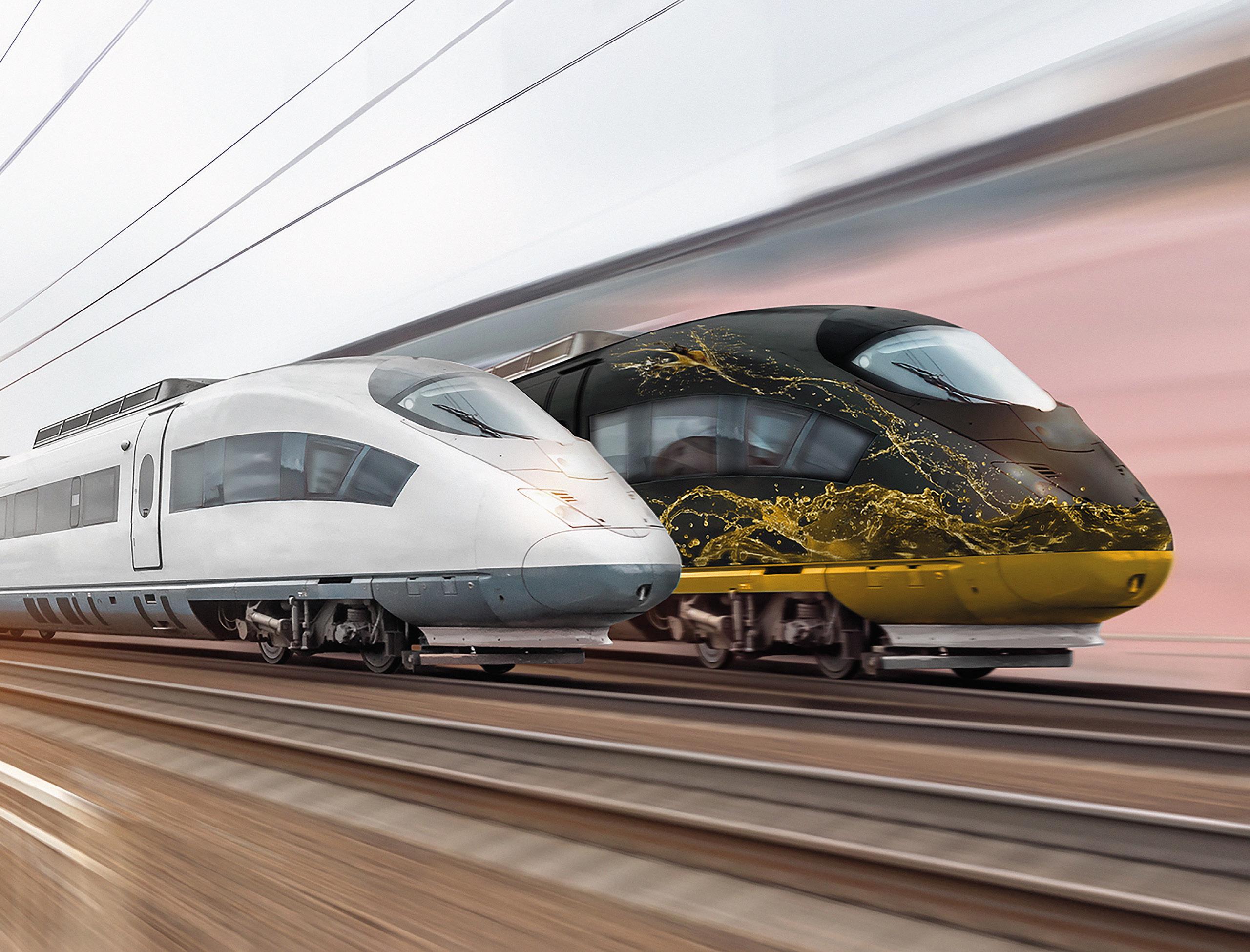
Together beyond lubrication

High-performance lubricants for the Rail Industry to ensure your trains run on time in all weather.
- Extended maintenance intervals and predictable downtimes
- Optimal lubrication schedules
- Increased energy efficiency
- Reduced CO2 emissions
- Less lubricant wastage
info@uk.klueber.com
www.klueber.com/uk/en
SCAN ME
The Railway Industry Association (RIA) has held its 14th Innovation Conference, this year taking place at the ICC in Wales and featuring high-profile speakers and a record number of exhibitors
Creating an innovative culture
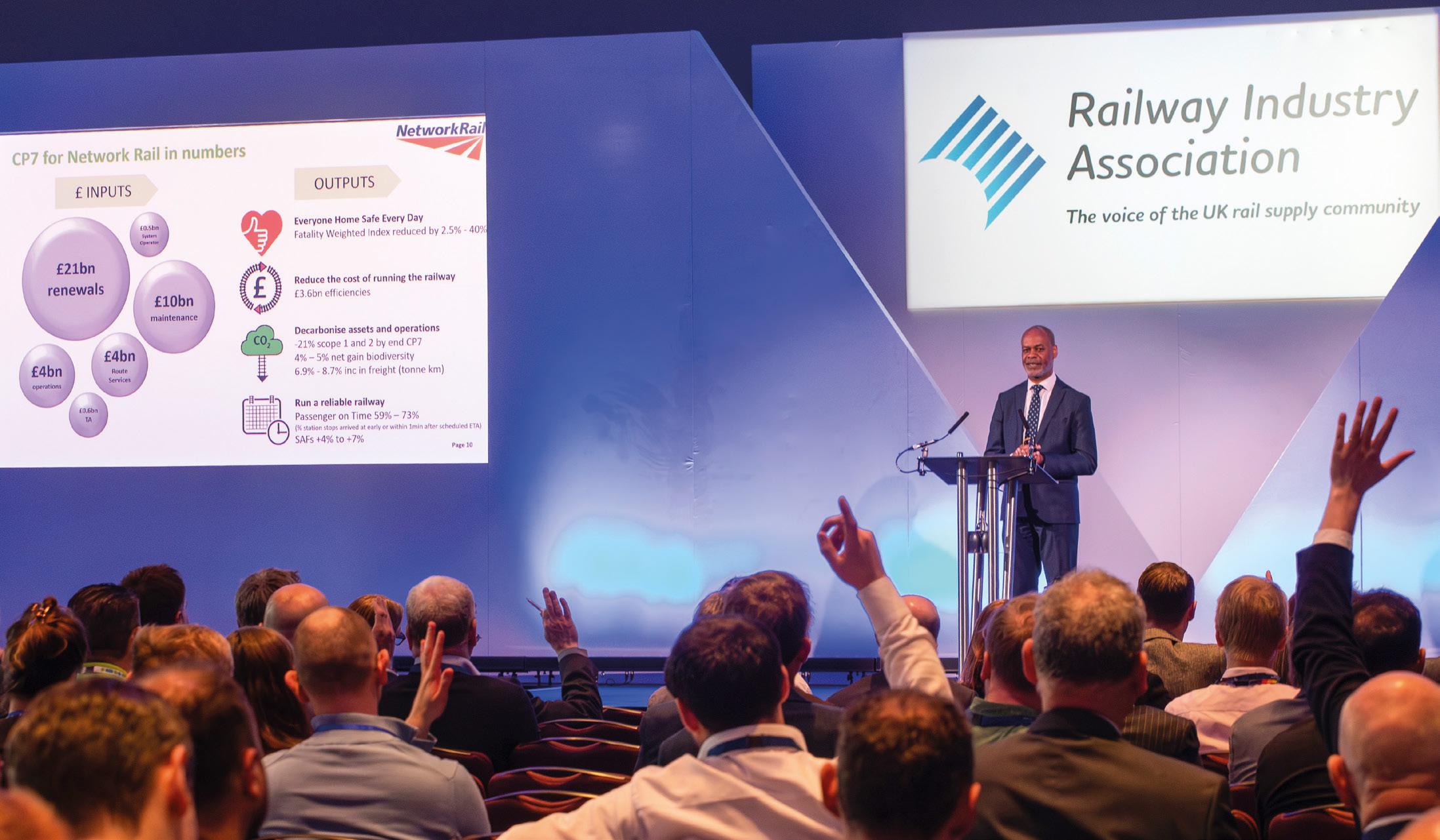
The rail industry’s supply chain has been urged to use its expertise and creativity to help drive the railway forward. Robert Ampomah, Chief Technology Officer at Network Rail, made the plea as he opened this year’s RIA Innovation Conference. “We rely on the supply chain and academia to help us strive forward and although we’ve got really tight budgets to work through, I know one way we can do that is by investing, and not just Network Rail industry partners, actually investing in rail,” he said.
“Whether we do that through match funding, there are ways in which we can get technologies into rail and then scale it up. I’d invite the industry to join that. We know we can all do this together and make a massive difference to where we are going.”
Robert addressed the audience at the ICC in Wales shortly before the start of Control Period 7 (CP7), which commenced earlier this month. He explained that in the latest five-year spending period, Network Rail will be investing more of its research and
development fund into innovation.
“We’ve still got quite a bit of investment in research but actually balanced now more with development and innovation,” he said. “This is very intentional because we want to make sure we are getting a return on that investment, so we are really driving that value out of the investment that we put on this control period.
“Some of the work we delivered in CP6 will transfer into CP7 in terms of outputs, which is really fundamental. Another reason for doing that and the reason that is deliberate is to create this environment and culture of innovation within the rail industry. The rail industry is quite diverse and it is creative, but we need to see that creativity actually deliver outputs for us. A lot of our effort will be on driving that through and rolling out and scaling up those investments.”
Robert’s speech laid the platform for the awardwinning flagship event in the Unlocking Innovation programme, bringing together inspirational leaders, pioneering engineers, ambitious entrepreneurs, and
passionate railway professionals, all joining forces around this year’s theme of ‘Inspired by Innovating’.
Scott Waddington, Chair of Transport for Wales (TfW), told delegates that innovation is really integral to everything they do at the operator. He added:
“Our vision at Transport for Wales is to create a highquality, safe, integrated, affordable, and accessible transport network that the people of Wales are proud of, and innovation is key to our success in that, and collaboration is absolutely essential in achieving that.
“We have a dedicated innovation team and budget available to support the business so that innovation can be trialled before it becomes business as usual, and we are really trying to create a culture of innovation within the business to benefit our customers and colleagues.”
Following an evening of networking and entertainment to conclude day one, attention on day two returned to innovation, including a look at what other industries are doing on the topic with a speech from Dr Joanna White, Research, Development and
RIA INNOVATION CONFERENCE 44 April 2024
Innovation Director at National Highways.
She explained how around £40 million was being invested across the two years for theoretical research and development and around £200 million in this road investment period (a five-year period ending next year) had been ringfenced for innovation. “Our strategy is based around four themes: improving safety, decarbonisation, better productivity on our schemes and also connectivity,” she said. “What I particularly like about our strategy at the moment is the principles around it, in particular the aspect of why we innovate, which is for outcomes and that is really important because it isn’t just about whizzy tech.
“The other core aspect of this is around the innovation culture that we have in the business. We want everybody to be able to set those problems and challenges and then we work with the business in order to find solutions to help solve those challenges that people are experiencing today and those that we set out in our future strategy.
“We must demonstrate value and impact from the research and innovation that we do and that comes from either working with organisations to develop new solutions and processes, through to things like this, where we have the opportunity to connect with a great innovation community.”
Dr White spoke of the use of robot dogs, climbing robots clearing graffiti, cosmic rays, connected automated plant, exploring how plastic can be reused in new materials, and also working with Network Rail, regularly meeting with Robert Ampomah about shared challenges and innovation and research, sharing and learning.
She said: “I think overall we need to work better. We have lots of opportunities and we need to be able to transfer our innovation so whether it is from space, maritime, aviation, rail, highways. I am quite happy to steal with pride, I don’t want to duplicate any efforts that have already been done and I do want to give credit where credit is due.
“I think we have lots of opportunity to improve our line of sharing across sectors. This conference in itself has been a great example of that with the diversity of speakers that we’ve had. I think we can collaborate so much better and share that information and knowledge.”
The importance of collaboration was prevalent throughout the two-day conference. Speaking on day two, Alexandra Luck, Head of Programme, National Digital Twin Programme, Department for Business and Trade, said this includes being far better at sharing information across organisational boundaries and sectorial boundaries.
She said: “We’re also going to have to get far better at how we engage with that information, how we visualise it, how we analyse it, and how we then use that to be able to start optimising decisions that we need to be able to make.
“What the National Digital Twins Programme is there to do is create all those underpinning rules that will enable us to start being able to do this. So the standards, guidelines, frameworks, processes and tools that will ultimately support the creation of not only individual digital twins, but connected digital twins, and to be able to do that in a way that

is appropriately safe, secure and trustworthy, and is also ethical, sustainable, adaptable and importantly interoperable.”
This year’s Innovation Conference featured the event’s largest exhibition hall ever with 74 companies exhibiting, as well as Network Rail and Transport for Wales Zones. There were also 23 exhibition spotlight pitches, the Future Focus zone full of new innovations and robots, pitch sessions and tech talks.
Darren Caplan, Chief Executive of RIA, said: “After a difficult few years with the COVID pandemic, and more latterly the recent cancellation of HS2 Phase 2, this year we have a big opportunity to reset rail.
“It is so important right now that we are open to innovation as this will deliver the efficiencies that industry needs and will address the challenges including weather resilience, decarbonisation, improved workforce safety, providing better services, attracting customers to use the railway, and providing value for national, regional and local Government funds.
“It is crucial that we have an innovation mindset both in terms of the innovation itself and the process of adopting innovation.”
We rely on the supply chain and academia to help us strive forward
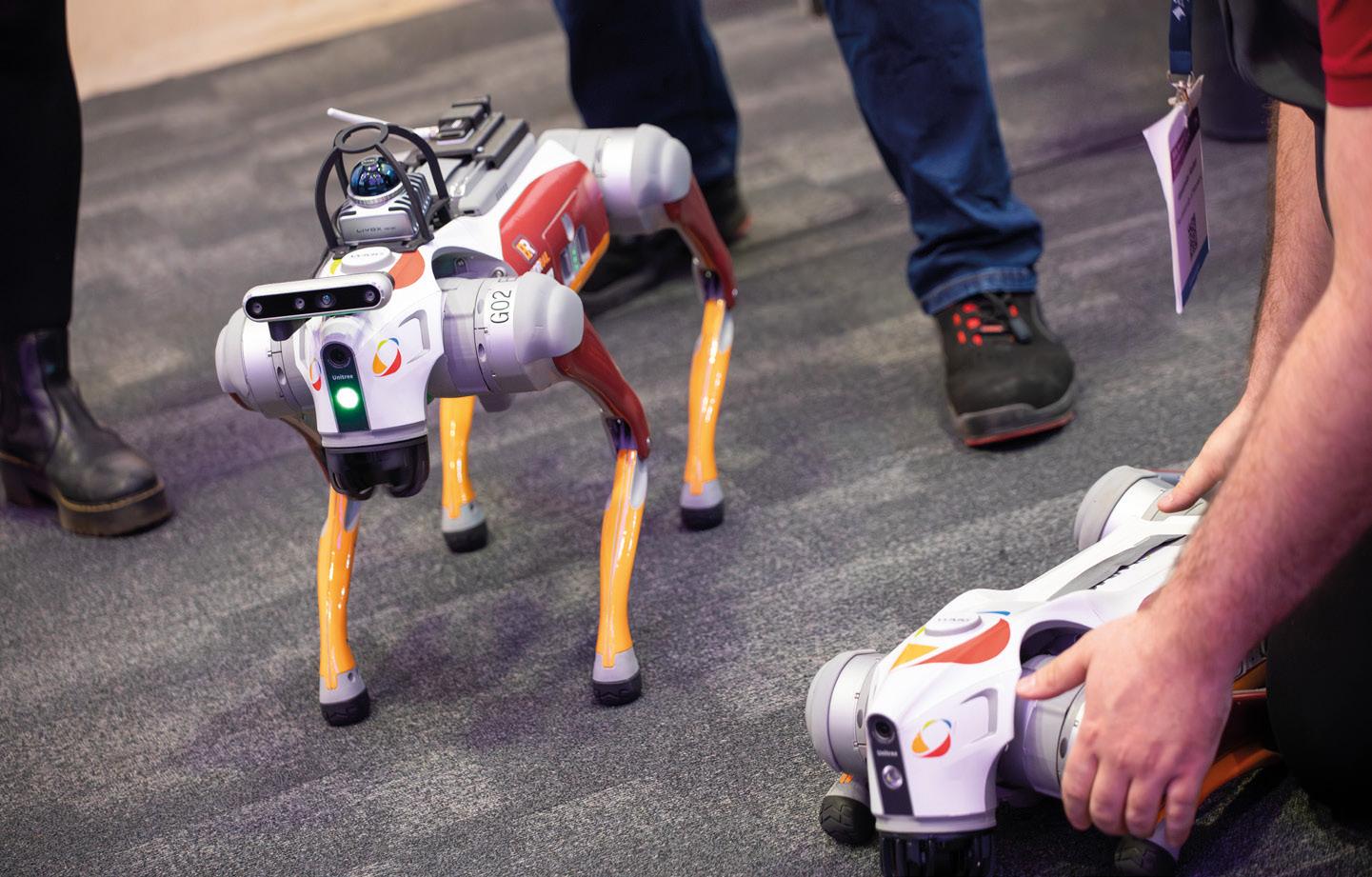
RIA INNOVATION CONFERENCE 45 April 2024
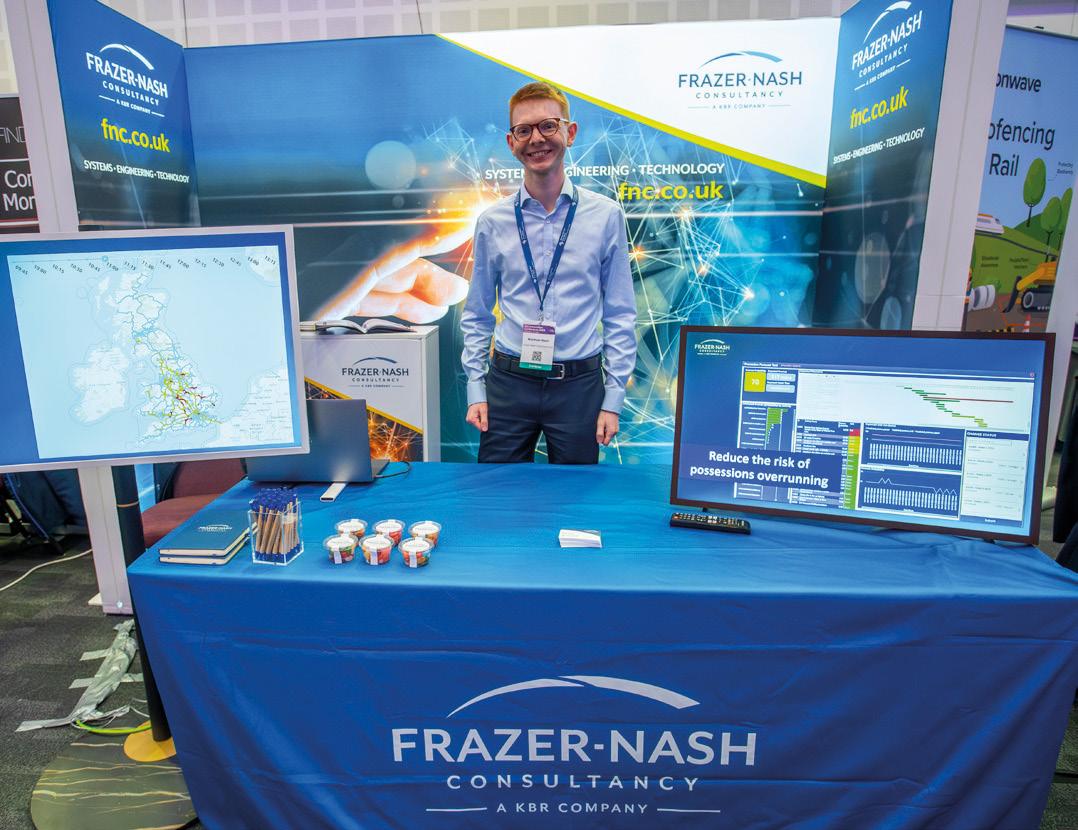

Running alongside the Railway Industry Association (RIA) Innovation Conference that was held in Newport on 26-27 March 2024 was a major exhibition of new and fascinating technologies
Innovation on show!
In total, 70 stands were set up in the main networking area at the show, where sponsors and RIA members could show off their latest ideas and innovations and discuss them with delegates who were taking a break from the main conference on the floor above.
RIA itself had a major stand, displaying the banners of all six Nations & Regions including the latest addition Northern Ireland, and a number of Business Engagement Managers were on hand to talk with interested delegates. Rail Business Daily and the RBD Community occupied the adjacent stand, attracting a steady stream of interested delegates.
Network Rail had a presence - Chief Technology Officer Robert Ampomah was one of the conference speakers – and UKRRIN (UK Rail Research and Innovation Network) had a large stand.
The four conference platinum sponsors were together in a block in the middle of the hall. Telent Technology Services demonstrated how the integration of its station management platform (MICA) with Purple Transform’s data analytics platform SiYtE, which uses cutting-edge analytics, machine learning and AI to provide real-time automated incident alerts, will improve passenger experience, safety, and performance for UK railways. Head of Product Strategy Dave Looney spoke at the conference, informing delegates about the importance of machine learning and AI (artificial intelligence) in protecting passengers, services & infrastructure.
The team from fellow sponsor PA Consulting demonstrated several ways in which they are ‘Bringing Ingenuity to Life’ and were pleased to have spent “two days being inspired by innovation in all its forms in our industry”.
Informed decisions
Frazer-Nash Consultancy had a busy stand that attracted a great deal of interest. Several experts were on hand, explaining how combining data and expert opinions into computer models and simulations using artificial intelligence and other techniques can help companies to make informed decisions.
Drawing on its experience in the defence, utilities and other sectors, Frazer-Nash has developed a number of models used by train operators and infrastructure planners, examples of which were on show at the RIA Innovation Conference.
PosiTrack is a railway possession management forecasting tool designed to help deliver railway construction projects more safely, quickly, and cost effectively through generating additional value out of possession data.
REPAIR (Rapid Evaluation and Planning Analysis
Infrastructure for Railways) is a set of predictive tools that revolutionises freight train planners’ and controllers’ understanding of the propagation of delays across the rail network, helping them mitigate the impact of current and future network delays on their services.
Rail Innovation Business Manager Richard Wheldon commented: “We had some good conversations at Newport – at least 40 people visited our stand who were genuinely interested in what we can offer and who have problems and challenges that can benefit from our input. We were also able to use the exhibition to see what other people are doing in the industry and explore whether future partnerships with them could be beneficial to both of us.”
Nearby, Unipart was at the exhibition in force. Its Unipart Rail stand was flanked by sister companies
from the Unipart Technologies Group – Instrumentel, Park Signalling and Comms Design.
Intelligent networks
BODE UK & Ireland Ltd, the new name for Schaltbau Transportation UK, was positioned directly opposite the main door. Clever use of a huge video screen, demonstrating interactive train doors opening and closing, made the stand particularly eye-catching and attracted many visitors as soon as they entered the exhibition.
UK Managing Director Nick Thomas and Systems Engineer Stefan Hellbach explained to delegates how the new Boarding Management Unit (BMU) provides assurance to passengers and operators with functions such as gap monitoring; primary and secondary closing edge monitoring; platform, step and obstacle detection (to avoid trap & drag incidents); and passenger, bicycle and wheelchair counting, all with a reduction in the number of electrical interfaces and utilising touch-free, hygienic entry.
Nick and Stefan explained to visitors how recent developments to the BODE intelligent networked systems increase safety and improve the customer experience with emphasis on sustainability and the environment.
With both an extensive install base and retrofit options for alternative door systems, BODE has the team to support customers and extend the life of existing train fleets. In addition, a strong aftersales offering includes technical field expertise & training, spare parts availability, repair, fabrication, maintenance, retrofits, and modernisation.
Elsewhere in the exhibition, Paul Eastwood and the team from SEMP introduced SEMPx, cloud-based collaboration software that has been developed
RIA INNOVATION CONFERENCE 46 April 2024

by systems engineers to manage the complexity of portfolios, programmes, and projects, resulting in ‘technology with a purpose’.
From hotspot reporting to satellite imagery
One Big Circle, based in Bristol and so only a short distance from the conference, albeit the other side of the Bristol Channel, showcased its award-winning AIVR technology, demonstrating new system features on the AIVR Product Suite such as hotspot reporting and other monitoring capabilities. The team also
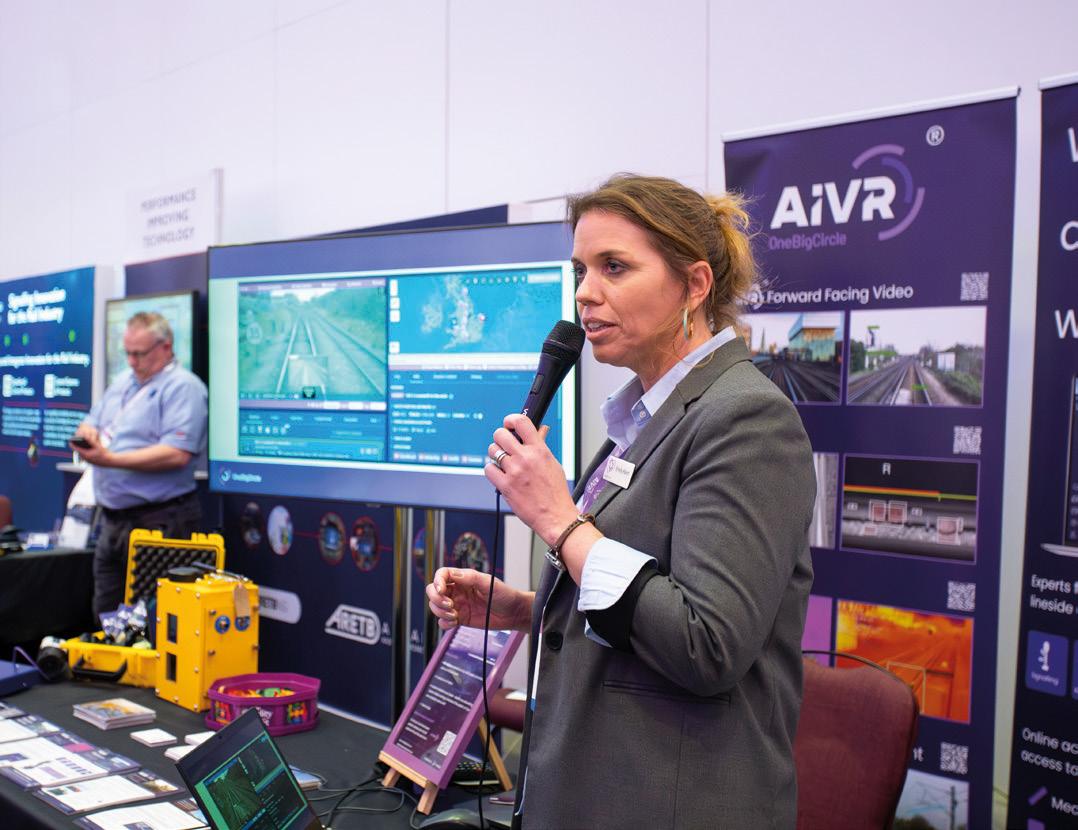
revealed some exciting innovation projects that are being developed with industry experts such as satellite imagery integration for increased climate resilience.
Co-Founder and Director Emily Kent was one of a number of exhibitors to deliver a spotlight pitch. As part of her presentation, delivered from her stand to a crowd of interested delegates, she included a ‘guess the station’ section from AIVR data, demonstrating the country-wide coverage of the data. The exhibition gave her an excellent opportunity to present AIVR’s key capabilities to a room full of industry experts,
and to explain and showcase what One Big Circle strives to achieve through the detection of faults and conditions which can then be reported, shared, and monitored across multiple assets to reduce boots on ballast.
“Over the past three years of exhibiting at the conference, it’s been fantastic to see the event grow and evolve, with an increasing focus on the need for a holistic approach to data, and how this can be achieved through industry-wide collaboration,” Emily commented. “Reflecting on the conference has also highlighted the extent of how much our AIVR










+44 1908 224140 sales @s -uk com Train Doors , Steps & Boardin Systems Maintenance , Retrofit , Modernisation , Repair Ori inal Spare Parts Availa ilit y Tec nical Trainin & Field Support Impro vin Efficienc y, Safety & Sustaina ilit y
Corenso Ho se 2 Patriot Drive Roo sle y Milton Keynes MK13 8P VISIT OUR WEBSITE! bode-global.com
Door and Boarding Systems for Trains
RIA INNOVATION CONFERENCE 47 April 2024
Emily Kent of One Big Circle giving a Spotlight Presentation. All images: Rob Finney/RIA
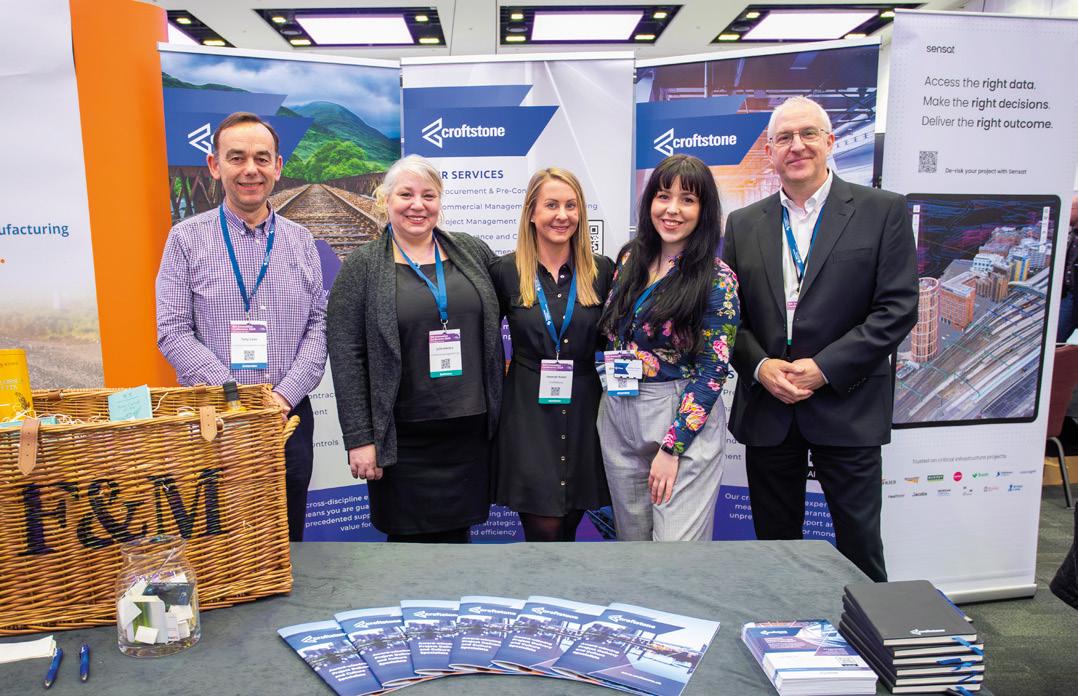
technology has grown over the years, and how it’s increasingly aligning with the industry requirement of working together collaboratively to create a safe working tool.”
As well as taking part in the exhibition, the Global Centre of Rail Excellence (GCRE) hosted visits to its site at Onllwyn, 50 miles to the west. “The Global Centre of Rail Excellence will be a site for world class rail research, testing and innovation and will be a fantastic platform from which new ideas and technologies can be developed,” said Chief Commercial Officer Kelly Warburton. “It’s fantastic to be a sponsor of this year’s event in Wales and to discuss with those attending partnerships at our facility.”
In-service inspection
Camlin Rail exhibited at the Innovation Conference to raise awareness of its in-service inspection system, TrainVue. Interest is rising across the rail industry for in-service inspection, especially in the field of overhead electrification where access for traditional inspection can be problematic. In particular, train operators want to predict and prevent pantographrelated incidents and improve fleet availability while meeting regulatory requirements for visual inspections.
In-service inspection reduces the need for trackside inspections and working at height to inspect the pantograph and roof integrity, which otherwise often has to be carried out at night. Automation of inspections also results in more consistency, frees up engineers and technicians to perform other tasks, and reduces congestion in depots, particularly when new fleets are being introduced.
TrainVue solves these problems by capturing highresolution images of the pantograph for automated inspection and determination of carbon wear. Fleet condition is maintained to a very high standard due to trains passing TrainVue multiple times per day during normal operational service, capturing high-resolution images of bogies, the roof and the sides of the train and reducing the need for physical inspections by up to 50 per cent.
Camlin Rail in-service inspection systems are already in service with Network Rail, NS, RFI, Amtrak, Infrabel, Talgo, SEPTA and Caltrain.
Dual expertise
Croftstone’s stand was staffed by members of its

award-winning team of advisors who support clients across two pivotal areas of excellence: projects delivery and people & culture.
Since 2018, Croftstone’s project delivery team has helped clients to navigate the complexities of today’s dynamic, large-scale programmes, tailoring solutions to get infrastructure projects initiated and delivered successfully. The people & culture team specialises in nurturing the sustainable growth and resilience of organisations and their people, helping them to embed new behaviours, foster vibrant, inclusive cultures and drive long-term success through collaboration.
Managing Director Tony Cave said: “In the everevolving landscape of our sector, we know that many organisations grapple with entrenched ways of working and limited collaboration, which hinders innovation and growth.
“However, in the face of complex regulation, the power of experience and the science of human behaviour can’t be underestimated. This is where Croftstone is a differentiator. Our infrastructure project delivery expertise is vast, covering multiple sectors and programmes, while our people & culture team are behaviour science specialists who can transform stagnant working practices while fostering an environment where collaboration thrives. This dual expertise allows us to integrate the art of project execution with the science of human behaviour, to ensure our clients achieve their goals.”
Upstairs from the main exhibition, on the same level as the main auditorium, 10 academic institutions were joined by the UK Atomic Energy Authority in a display of big ideas and radical thinking. Exhibits included robots, a virtual and augmented reality showcase and the latest in materials.
Prompt data turnaround
Cordel.ai, an established international provider of railway technologies, took part in the exhibition to gain more perspectives on UK infrastructure challenges and how it can best expand its deployments to address them, integrating with more third-party partners along the way.
Visitors were shown the eight different practical-use cases (from vegetation management to gauging) that have been proven in deploying Wave 32 technology on Network Rail infrastructure. Each Cordel Wave 32 (LiDAR, video and locate sensor
set) automatically captures and uploads to the cloud up to 110GB per day from trains running in routine passenger service – facilitating a prompt turnaround of data at scale to provide prompt and cost-effective insight.
Cordel is already delivering the Railway Gauging Data Solution (RGDS that replaced the NGD) for Network Rail on a 6.5-year contract, ingesting data from different third-party providers and applying robust governance processes to enable more efficient decision-making and demonstrate compliance.
Engineering Delivery Manager Russell Licence was pleased with the interest the stand attracted. “It was fantastic to be in the room with infrastructure engineering problem owners and potential new collaborators,” he said. “Key takeaways were the enthusiasm for our specific products (LiDAR, Video, Locate, Trackpod) and for our expertise in ingesting datastreams from other expert providers at scale and at pace. We are ready to develop the identified opportunities to collate, store and process datasets into assured outputs that engineers can rely on.”
Lab by Transport for Wales (TfW) is a 12-week accelerator programme that helps creative, ambitious start-ups pivot their existing solutions and ideas to improve customer experience and business efficiency. Barry Lloyd, TfW’s Head of Innovation and New Product Development, summed up the two days of the conference and exhibition. “The number of colleagues in the industry who stopped by for a chat about the programme was amazing and, whilst it’s not been easy, it’s been very rewarding.
“We are now starting to see the benefits of investing in innovation over the last five years. Things don’t happen overnight, it takes time to build something great, to create a pipeline of innovation for when the business is ready for it. My favourite comment supports that view: ‘You don’t just innovate for the sake of it and look for a problem, you understand the business and create solutions to take forward that the business needs.’ Now that’s how innovation should work.”
Sponsors
Platinum: Arcadis, PA Consulting, Telent, Transmission Dynamics.
Gold: GCRE.
Silver: ABB, COMET, Ricardo, SEMP.
Bronze: ABB, Capgemini, Complete Cyber, Helix.
RIA INNOVATION CONFERENCE 48 April 2024

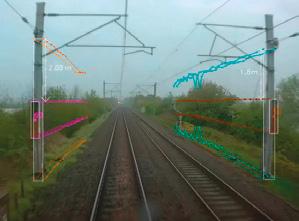
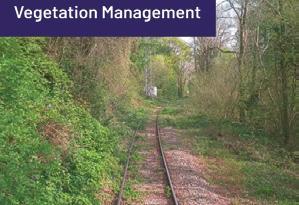




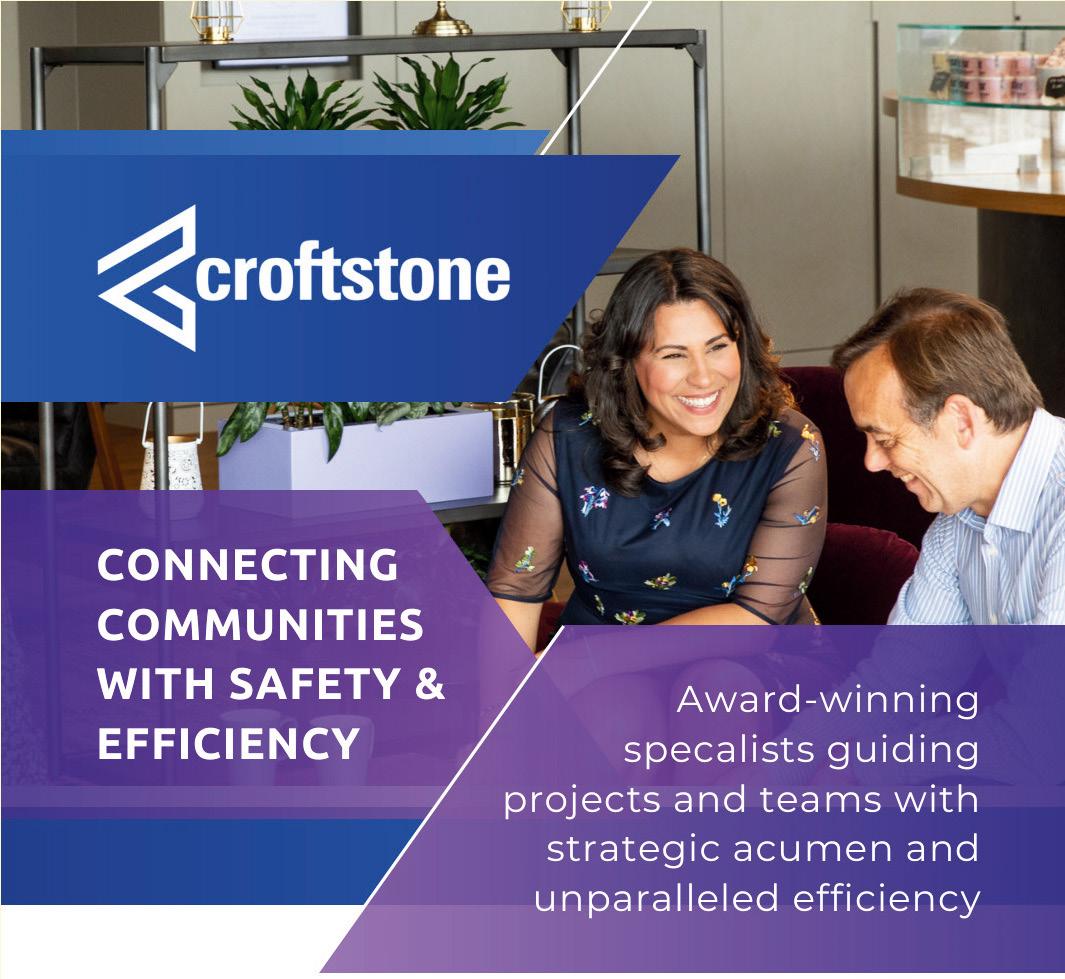




















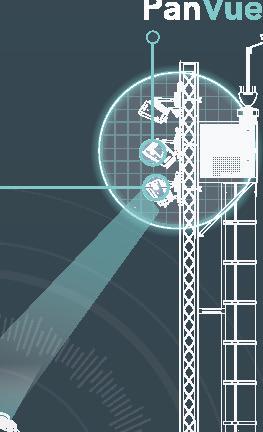
















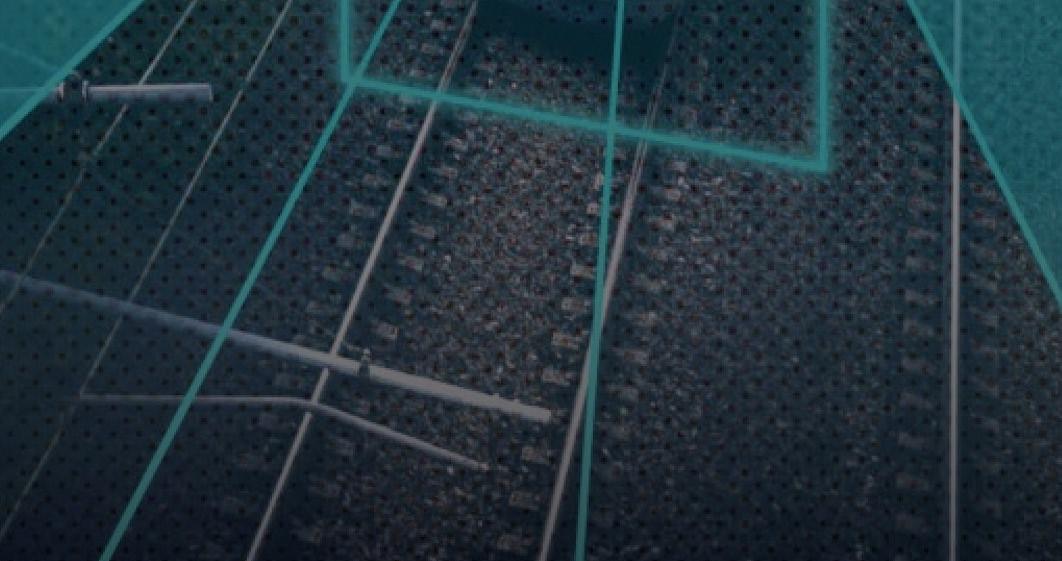
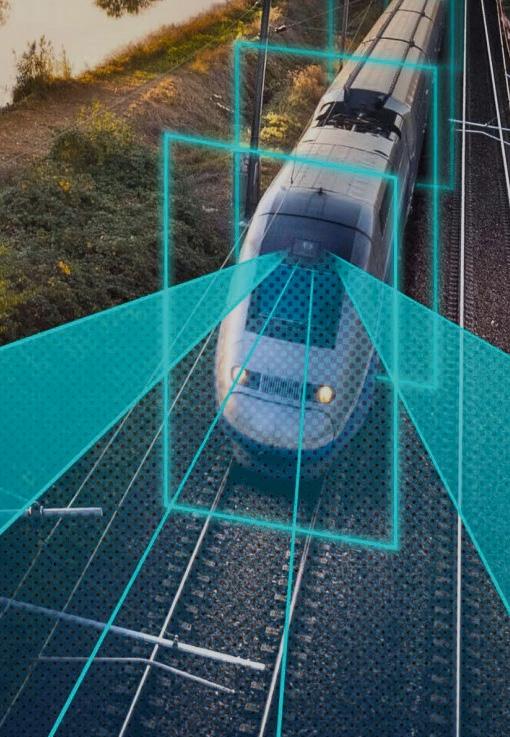

OLE Monitoring Seasonal Planning Hotspot Detection Supporting 0845 838 7178 camlinrail.com Lowering the relative cost of monitoring Allowing for increased frequency of recording Producing repeatable condition insights Better Informing optimised maintenance Turning every / many trains into measurement trains Breaking down silos with good governance and data accessibility Building a complete picture of the network with sensor data and AI www.cordel.ai Improving the economics of how railways inspect and maintain assets… Intelligent Infrastructure Monitoring for Resilient Railways April 2024
The contributions and achievements of the young professionals who are driving the industry forward have been celebrated at this year’s Young Rail Professionals Annual Awards
“Shining the light on the youth in our industry”

“J
udging was agonising.” That is how Bonnie Price, National Chair of Young Rail Professionals (YRP), described this year’s Annual Awards. There were more entries than ever before in the organisation’s 15-year history.
“There was a plethora of railway talent who were all very deserving of these awards and I was blown away by how many people we had nominated,” she said.
The awards ceremony in London was all about shining the light on the youth in the industry and all the hard work they do, the voice and potential they have, and the impact they will make on the industry.
Among the winners were Asher Thomas, who was named Young Rail Professional of the Year; Adam Sergent, the Volunteer of the Year; Mohammed Al-Sharif, Mentor of the Year; George Cullin-Moir, Apprentice of the Year; and Siemens, which was named Employer of the Year.
Bonnie, who will serve a second term as National Chair at YPR, said: “Awards for young professionals are so important and they recognise and motivate individuals for their achievements, and encourage a culture of innovation. It provides key validation, credibility, and opportunity for their careers to advance and helps to build confidence and inspire others to strive for success in their respective fields.”
The Annual Awards was also a chance to highlight the achievements of YRP over the last year. These included the relaunch of its North West branch, its

busiest Rail Week programme with 32 events across the UK, and its first Santa Express Train taking 180 children who were either living in residential care homes or living with life-limited disabilities.
Bonnie also highlighted that YRP’s Into Rail programme had enjoyed its busiest and most successful year yet with 10 schools and fair visits, and its heritage programme delivered more than 1,000 hours of volunteer time on the UK’s heritage railways. Overall YRP has held 105 events in the last year and membership has increased by 32.1 per cent.
“YRP’s success is all down to the volunteers that are in it,” she said. “If YRP’s growing success from a volunteer basis is anything to see what the future of rail is like, which I truly think it is, I think the railway is in really good hands.
“Looking to the future and we are setting up YRP Ireland and the aim will be to consolidate and continue our position in the industry doing what we do more consistently and more in step with the rest of the industry to work smarter and not harder.”
David Horne, Managing Director of train operator LNER, was a guest speaker at the awards. He said: “The work YRP does in terms of professional networking, development and providing a forum in which you can get people across every bit of the railway industry together to share knowledge is wonderful. Full credit to the team who put all this together on the back of their day jobs.”
Visit https://www.youngrailpro.com/

List of awards
Young Rail Professional of the Year
Asher Thomas, Network Rail
Volunteer of the Year
Adam Sergent, Network Rail
Mentor of the Year
Mohammed Al-Sharif, VolkerFitzpatrick
SME Employer of the Year
Tilt Consulting
Employer of the Year
Siemens
Apprentice of the Year
George Cullin-Moir, Network Rail
Distinguished Service
Gareth Dennis, Systra
Young Rail Personality of the Year
Tom Jerrard, BTTC
AWARDS 50 April 2024
Train operations
Freight safety
Public behaviour
Passenger operations
Health and wellbeing
Passenger and staff assaults
Occupational health and safety
Level crossings
Fatigue
Safety and health: Asset integrity
We’re with you every step of the way

Leading joined-up thinking to support safer, smarter rail
Britain’s rail network originates from an industry with a uniquely collaborative culture – and every inch is underpinned by dedication to safety and health. But the network’s complexity means we can only get the full benefits of everyone’s safety when we join up the different areas of collaboration, to see the whole system. This lets rail direct its resources to where they’ll do the most good.
T he new Rail Health and Safety Strategy will lead us in this direction. Drawn on detailed consultation across the industry, and led by industry risk groups, it has been designed by industry, for industry.
Discover RSSB’s role in unlocking whole-system solutions. Read the new Rail Health and Safety Strategy: www.rssb.co.uk/thestrategy


RSSB’s strategic plan for 2024-2029 is to continue to reinforce the key role it plays in helping the sector make collective decisions and embed change while exploring new areas of knowledge and capability
Combining continuity with change

The UK has operated railways for longer than any other country, with many lines serving generations of British passengers. For instance, train travellers stopping at Shildon (home of Locomotion, part of the National Railway Museum) follow the exact route of George Stephenson’s Stockton and Darlington Railway, which is no less than 199 years old.
Today, the Rail Safety and Standards Board (RSSB) helps keep Britain moving with safer, smarter rail. Its latest five-year strategic plan, for 2024-2029, sets out the ways it will work with the industry over this period and comes at a crucial time for GB rail.
Change is constant
Although many rail routes continue to cover familiar ground, over two centuries of rail operations have seen huge developments across the network.
For instance, the railways have changed hands several times - they started under private ownership, the Government took control during both world wars, which was followed by nationalisation, and finally privatisation in 1994. The world around them has changed too, with road and air transport offering ever more competition for passengers and freight.
But the near future is likely to bring the greatest changes for rail since steam power gave way to
diesel and electricity. This means a greater burden on the network and its people: the need to adopt new technologies and new methods while continuing to operate safely and cost effectively.
RSSB has thoroughly overhauled and updated its latest strategic plan to reflect these coming challenges and to help make the most of the opportunities. The 2024-2029 plan looks at fundamental alterations to the way that UK transport works as a whole, including rail. These include:
Decarbonisation: the Government is committed to net zero rail by 2050 and wants to remove all diesel-only trains by 2040.
Climate change mitigation will become increasingly important.
Digitalisation: new technologies such as artificial intelligence (AI) are contributing to a range of areas, from running the railway more efficiently to linking seamlessly with other forms of transport.
Rail reorganisation is on the cards again, although its exact shape is still uncertain.
Travel patterns that first manifested during the pandemic due to accelerated trends like remote working are still changing as the industry recovers.
Balancing continuity with change
The railway is a complex system. On the one hand, the rail network consists of massive pieces of infrastructure with huge, embedded value and long lifespans. On the other, there’s constant pressure to improve how that infrastructure is used – increasing safety, sustainability, and efficiency to ensure that the network offers maximum value to all.
RSSB is used to providing continuity while embracing change - a vital balance that defines how it operates. Its role in research and standards provides vital information and insight that allow established tasks to continue while new opportunities are seized safely. The five-year strategic plan details how RSSB will preserve the industry’s institutional memory while encouraging innovation – and for this, communication is vital. During the next five-year period, data sharing will be improved and used to enhance operations, and collaboration with industry will be expanded at every level.
By 2030, every rail employee will use at least one RSSB tool or service every day, from the Rule Book to cutting-edge research. It’s a challenging target, but one that can be achieved – with the industry’s help.
To find out more about RSSB’s latest strategic plan, visit rssb.co.uk.
Image: Shutterstock
ADVERTORIAL 52 April 2024
RSSB Consultancy Services
For the big rail questions, we’re closest to the answers
Britain’s Leading Rail Experts
We are GB’s independent rail network research body. Our consultants are the same experts who set industry standards, so your project will benefit from the very latest in rail innovation.

rssb.co.uk/consultancy to discuss your business needs today.
Visit
The money raised from the Railway Children’s Sleepout fundraiser will be used to help the thousands of vulnerable children who use the railway every year
Rail industry raises over
£130,000 sleeping out

More than 400 participants from across the rail industry have taken part in the fifth annual Sleepout event in railway stations across the country, raising money and awareness for the work being done to help the thousands of vulnerable young children who pass through the railway every year.
Network Rail teamed up with the charity Railway Children for this year’s event, sponsored by VolkerRail, which featured the highest number of participants ever taking part including at seven Network Rail managed stations.
Network Rail Chair, Peter, Lord Hendy of Richmond Hill, who is patron of the charity, was among those to take part. He said: “It’s great to see so many people come together to raise money for such a good cause, and I’d like to thank our station teams, rail industry partners and the participants for making this event a huge success.
“The Railway Children make a big difference to the lives of some of the most vulnerable people and we’re delighted to have supported them for
The Railway Children make a big difference to the lives of some of the most vulnerable people
the fifth year running and hope to continue to do so for many years to come.”
Railway Children works to help identify and support vulnerable children who may be in danger, including those who have run away, or who may be at risk of violence, abuse or exploitation, with the
aim to provide them with the safety and support that they need.
Rob Capener, Railway Children’s Chief Executive Officer, said: “Our Sleepout always has a brilliant atmosphere and we’re hoping this year’s event will have a big impact with the help of our supporters and the rail community.
“Working closely with the British Transport Police, we know that hundreds of vulnerable young people are identified on the UK rail network every day. Many are running away from difficult situations at home, being groomed by abusers or exploited by county lines gangs. The challenges children and young people face are more prevalent than ever with increasing levels of poverty, exploitation, mental health crisis and the lasting effects of the pandemic on their wellbeing and development.
“The Sleepout event is a great way to raise vital funds for our programmes that help us reach children in need of urgent support while increasing awareness of our work with thousands of people who use the transport system every day.”
Image: Network Rail
RAILWAY CHILDREN 54 April 2024

CELEBRATING OVER 50 YEARS IN BUSINESS

Jones Nuttall Ltd is a precision engineering company based in Warrington, Cheshire. We pride ourselves in our state-of-the-art CNC machining facilities and over the past 50 years we have been ensuring precision and efficiency in every project we undertake.
Our specialised Rail division, include contracts with the likes of Alstom, Unipart Rail, Metrolink, London Underground and Network Rail. Our experienced engineers handle a diverse range of projects including new builds, repairs, refurbishments and modifications including reverse engineering.
We manufacture components in ferrous and non-ferrous metals as well as exotic materials, advanced plastics, laminates and composites. Our manufacturing processes are continually being developed to meet our clients demands, ensuring that your products meet the standards you require. This makes us a trusted partner for demanding sectors such as oil, gas, energy, nuclear as well as the rail industry.
For precision finishing, we provide quality surface treatments, coatings, and other finishing services. Optional treatments strengthen materials, improve durability, and provide a long-lasting, high-quality finish.
With a comprehensive suite of services available, our experience has shaped our capabilities to match our clients needs. Managing all aspects in-house gives us valuable transparency, ensuring our clients can trust thier projects to be managed seemlessly through to final delivery.

TRACK BRAKE BEFORE

TRACK
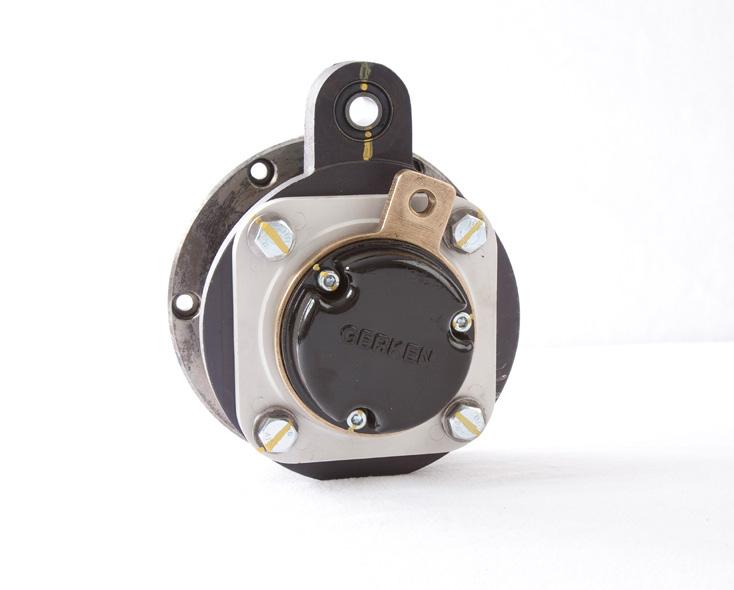







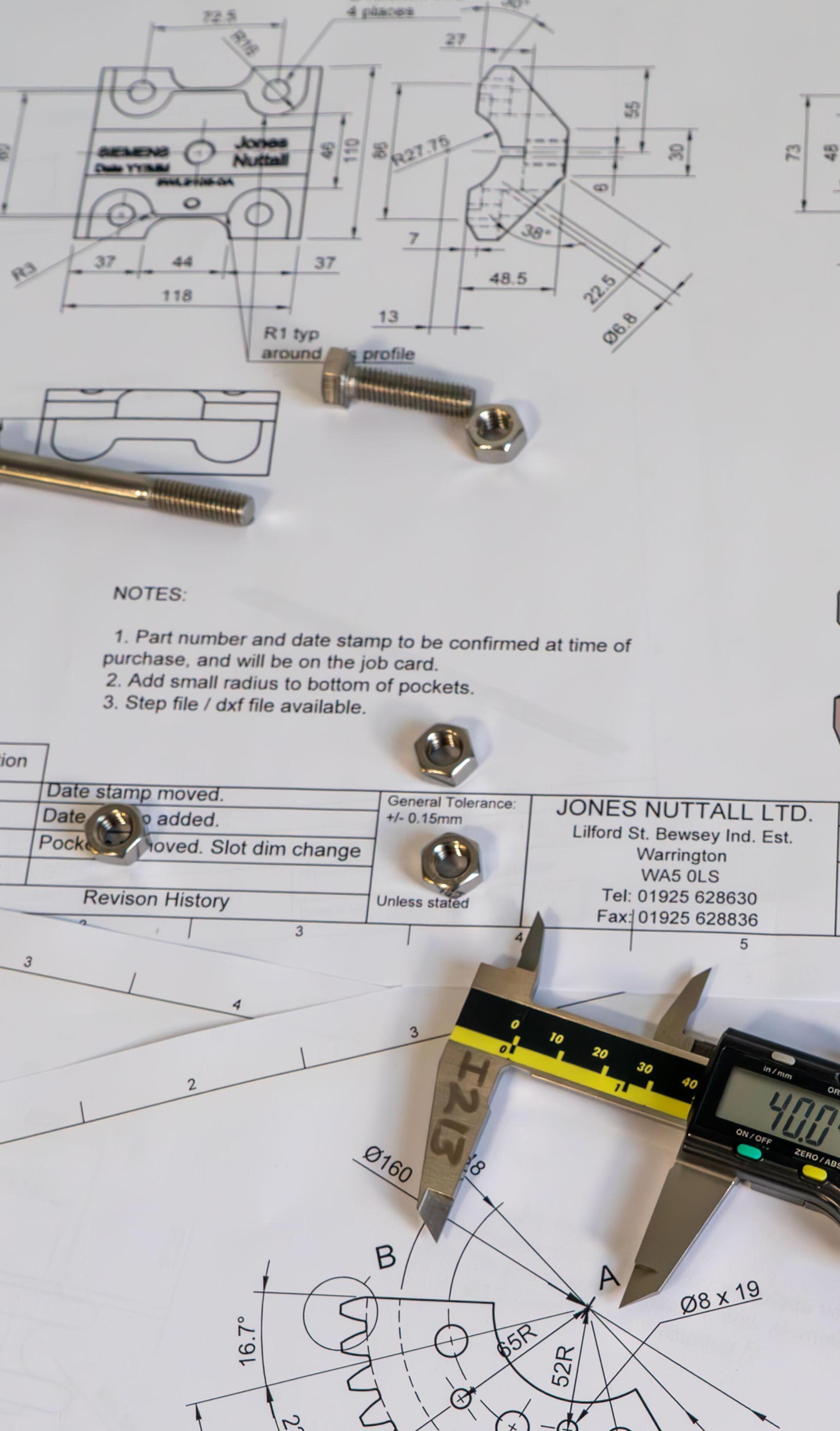
WWW.JONESNUTTALL.COM TEL:01925 628630 SALES@JONESNUTTALL.CO.UK
AIL
BRAKE AFTER BRAISING CONTACTORS DEDICATED R
DIVISION ASSEMBLY & R EFERBISHMENT WELDING & FABRICATING Jones Nuttall PRECISION ENGINEERING

Waste Mission’s Nicola Guest explains more about tackling metal theft, and a company rebrand to reflect its expertise in championing sustainable waste management
Empowering the railways to rethink waste

The future of metal theft sits on a precipice. With the correct expertise and resources in place, many of the challenges we face could be addressed, according to Nicola Guest, Group Marketing and Procurement Manager at Waste Mission. However, resources are in short supply, including the focus of law enforcement.
“The responsibility for protecting metal is firmly back in the hands of the owners and it’s unlikely this will change in the foreseeable future,” added Nicola, from the waste management solutions company with a history of more than 40 years as a specialist in metal recycling.Something certainly needs to be done. The
theft of metal, particularly cables, from the railways costs taxpayers millions of pounds and leads to hours of delays every year. Despite efforts from Network Rail, including the funding of British Transport Police officers, CCTV, and new ways of securing and marking cables, the issue remains prevalent.
“Metal theft affects the public and everybody working in the industry, but unfortunately there is no quick fix,” said Nicola. “The reality is that if it isn’t policed, we will carry on down the slippery slope we are seeing now. People will continue to take risks because they can get away with it.”
The issue goes beyond the policing of the railway, which consisting of 20,000 miles of track, 30,000
bridges, tunnels and viaducts and thousands of signals, level crossings and stations, just wouldn’t be achievable to patrol. Instead, the focus turns to ensuring that there is no market for stolen metal.
“Unless companies take control of their scrap metal outcomes it makes it almost impossible for the police to do their job,” said Nicola. “Ultimately the police need to be able to distinguish between stolen cable from the railway and cable purchased legitimately.”
Operation Tornado was rolled out across the UK in 2012, becoming the first voluntary step towards introducing long-term measures to control the scrap metal industry. The enhanced measures were a significant step forward and made it much harder
ADVERTORIAL 56 April 2024
to sell scrap metal for cash, helping to close the door to illicit routes for stolen metal. The enhanced measures were however voluntary; although they introduced traceability they could be ignored and were unsustainable in the long term.
Operation Tornado also opened the door to the Scrap Metal Dealers Act 2013. While the new Scrap Metal Dealers Act gives enforcement agencies the tools to tackle metal theft, the reality is that the pressure on police and local authority budgets means the resources are not available. This gives unscrupulous and unregistered dealers the opportunity to operate again with impunity.
“Metal theft has been an ongoing issue since 2011 when we started working with the infrastructure industry,” said Nicola. “We were the merchant that was already doing everything that the companies affected by metal theft wanted to see within the industry.
“We didn’t have the Scrap Metal Dealers Act or Operation Tornado, we literally had ourselves and the affected industries sat around the table exploring what was needed to improve the situation and to get the Home Office to listen. The way we were doing business as a merchant was unique and very fresh; we didn’t and still don’t have any public trade which is how we chose to shut the door on metal theft as well as several other internal initiatives.”
With reported crimes still a regular occurrence, there are concerns that sections of the scrap industry are sliding back into their old ways and cash is re-emerging.
“Many merchants state that it is not for them to police, however, I would argue with that, because morally it is up to you to police what you are buying,” she said. “We’ll look for any markers on the material and quarantine materials if we have our suspicions or there are issues.
“We have some wonderful scrap metal merchants in the UK, but we still have a lot of Steptoe and Sontype merchants and some who aren’t even registered and pay in cash, something that was outlawed more than a decade ago. While there are still easy outlets, metal theft will continue not just for the rail industry, but for other industries, including infrastructure.
“Control begins with the producer of any waste stream and what is needed is the effective management of cable; it should only go to contracted scrap metal merchants. If there is any rail cable that can be clearly identified as coming from anybody other than the contracted merchants, then it should be an immediate red flag and lead to an investigation.
“The producer of the waste has a duty of care to manage their waste in a high-quality way, as we as a business have a duty of care to help them facilitate that. We are all about finding solutions so for your big infrastructure companies it is about having decent contracts so you know the waste outcomes of every single stream, which could be metal or other items such as card or wood.”
A new era as Waste Mission
Waste Mission began its journey in the UK over 40 years ago as a specialist metal recycling company.

Over the past decade, it has expanded its business to include a wide range of other waste management solutions, an expansion reflected in the rebrand from Alchemy Metals to Waste Mission to highlight its credentials championing sustainable waste management for the industrial and manufacturing sectors.
“Alchemy Metals is synonymous with us being a scrap metal merchant, but we are now far more a complete waste management company,” said Nicola. “While we are still a scrap metal specialist, we now offer sustainable waste solutions so Waste Mission felt right as a business because we’ve always been on a mission to do the right thing, to do it better, to be clean, and offer sustainable solutions and to fly the flag of being ethical.
“That hasn’t changed from our initial work on the Scrap Metal Dealers Act 2013 to where we are today; we remain ethical and transparent and that is what the industry needs. We will put them on the right track of finding different outcomes.”
Waste Mission’s expertise in making the world a few shades greener and its dedication to turning complex industrial waste challenges into sustainable solutions couldn’t come at a better time for the industry as it strives to minimise the waste sent to landfill.
The organisation’s internal exploratory environment, fuelled by collaboration with its customers, has brought about innovative approaches and sustainable solutions to waste management that have benefited its customers’ bottom line by encouraging them to rethink waste while identifying valuable opportunities within the UK’s burgeoning circular economy.
“Right now, organisations might be dealing with different suppliers across multiple waste streams across multiple sites,” explained Nicola. “We are an industry specialist who can make sense of it, cut through it all, audit it, and explain where they are and where they can be with new outcomes for their materials, making improvements on almost every single waste stream. The result is that you’ll know all your waste outcomes and we’ll probably improve your finances and sustainability and overall, as a business, you will be doing a much better job.”
Nicola has been involved in the organisation for more than 15 years. Although she has no doubts sustainability is higher up on the agenda, she feels there is still a lot of work to be done.
“The reality is that 15 years ago it was all about the price and how can we get more,” she said. “The whole messaging has changed over the last decade and certainly people appear to be trying to be more sustainable, but I think organisations can go further.
“Sometimes waste is just seen as waste, rubbish just seen as rubbish and people just see it as the dirty end of the business. What we’re saying is let us look at the dirty end of your business and let’s stop talking about waste, rubbish and scrap and start talking about valuable end-of-life assets and identifying the best outcomes.”
Visit https://wastemission.com/ for more details.

We’ve always been on a mission to do the right thing, to do it better, to be clean and offer sustainable solutions and to fly the flag of being ethical
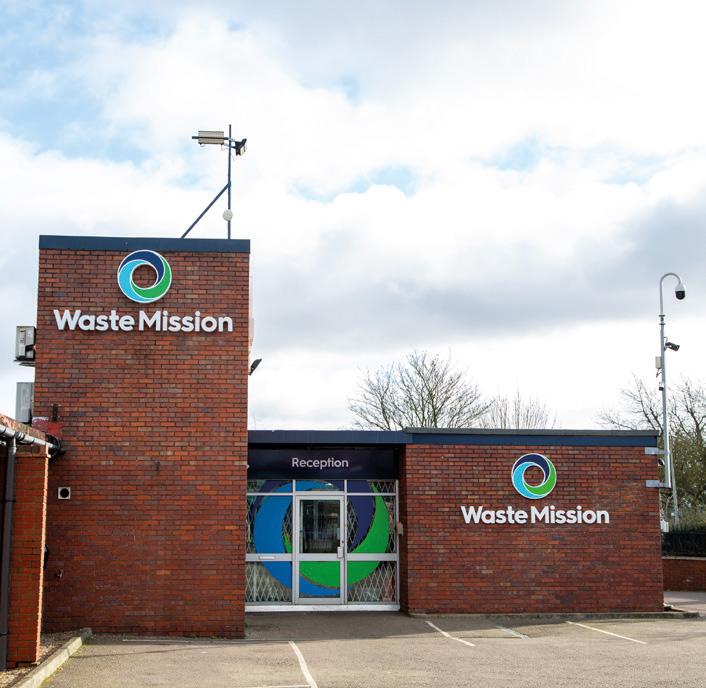
ADVERTORIAL 57 April 2024
When Robb Weir isn’t working as a Customer Experience Leader for LNER, he’s lead guitarist and songwriter for British Heavy Metal rock band The Tygers of Pan Tang. He shares his story of balancing gigging all over the world with life at the train operator
Striking a chord with the railways and heavy metal music
Robb Weir not only strikes a chord with customers as LNER’s Customer Experience Leader, but he is also well known to heavy metal music fans around the world as the lead guitarist and songwriter for band The Tygers of Pan Tang. For the last 20 years both the rock ‘n’ roll lifestyle and work on the railways have shared centre stage in his life.
“You would think the two worlds are miles apart, but actually they coincide and rub together quite nicely,” he said. “Both roles are customer facing, with the fans the band’s customers and the passengers LNER’s customers. Both have to be looked after 110 per cent to make sure they are completely happy and satisfied and that they keep coming back, be it on the trains, or buying albums and coming to the shows.”
Music has been a part of Robb’s life since childhood. In 1978 he decided to start a band and put an advert in the local paper looking for a bass player to jam with. From that advert, The Tygers of Pan Tang were born and have since gone on to tour the world, gigging in Japan, Columbia and Paraguay, rubbing shoulders with rock legends such as Ozzy Osborne, and the late Lemmy from Motorhead and the late Phil Lynott from Thin Lizzy.
“One of the most amazing things I’ve ever experienced is when we co-headlined the Reading Festival back in 1982 with Iron Maiden and played to over 70,000 people,” he said. “It was unbelievable, there were so many people, you couldn’t see where the crowd ended.”
And there has been no slow down on the music. Last year, The Tygers of Pan Tang released their 13th studio album Bloodlines, with Robb speaking to Rail Director having recently returned from ’70,000 Tons of Metal’, the world’s biggest heavy metal cruise, where the band played to 3,000 fans as they sailed from Miami to the Dominican Republic and back.
He said: “I love every show we play, from the smallest club to the biggest auditorium, I get such a buzz. To me, music is the heartbeat of life.
“I never get stage fright. I’m pretty level-headed and don’t get stressed easily, which comes in

PEOPLE 58 April 2024
Image: Steve Christie

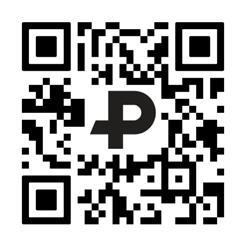

You would think the two worlds are miles apart, but actually they coincide and rub together quite nicely
very handy in the day job at LNER. I love the camaraderie with the people I work with onboard, and I love looking after customers. I enjoy speaking to people from all walks of life, many of whom will share their life stories with you. There’s something about travelling that makes people open up and tell you the most interesting things about themselves. It sounds cliched, but no two days are alike.”
The railways are a later addition to Robb’s life. It was 23 years ago while he was sitting in his car, waiting to pick up his wife and daughter from British Home Stores in Newcastle, when an advert in a shop window for ‘onboard staff’ caught his attention. Intrigued by what onboard it was, he called the agency Adecco to find out it was related to highspeed trains going up and down from Newcastle to London and was asked if he wanted an interview.
“I was thinking ‘what have I got myself in to’, as I already had two jobs, one as a baker at Safeway and the other as front of house security for B&Q,” said Robb, whose role at LNER involves looking after the people on the train and making sure everybody’s happy. “I got there and was asked if I could write my name and address on a computer and then I had a five-minute chat about my background and then they wrote me a note and said to go to Central Station and ask for this person for an introduction.
“It was quite a whirlwind. I spoke to the person, they took me into a little room, we had about 45 minutes of induction and then they said, ‘well if you’re good to go we’ll put you on a train tomorrow’. I worked through the agency for Great North Eastern Railway for about nine months and then I migrated across to a permanent contract. I left my other two jobs and I’ve been working on the railways ever since.”
When asked about whether or not the railways had provided any inspiration when it comes to the writing for The Tygers of Pan Tang, Robb said: “When we have downtime, I have a little black book and I can just gaze out of the window and get some inspiration
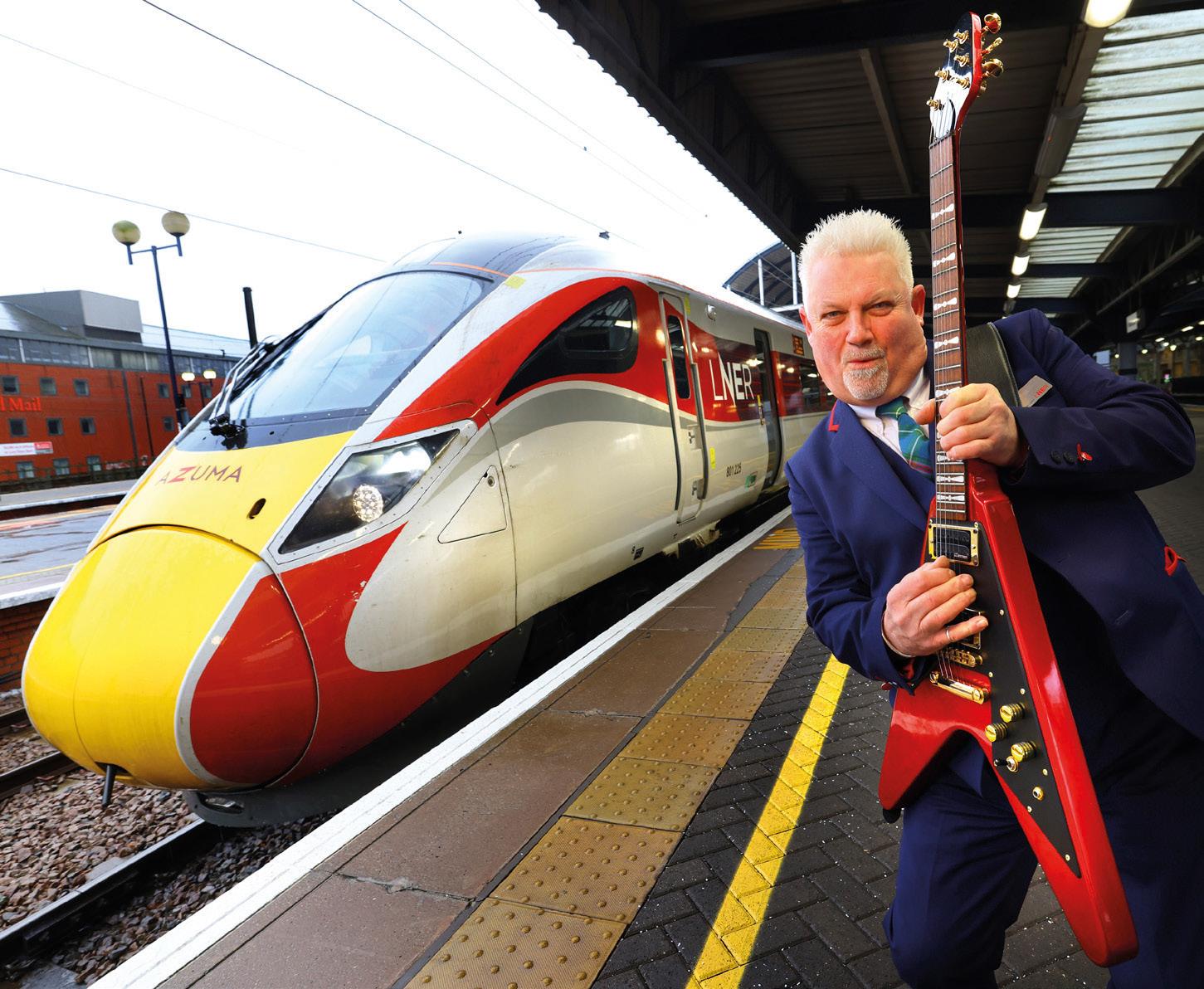
which in a matter of hours or days might develop into lyrics.
“There must be towards 200 lyrics, and I keep forwarding them to Craig our drummer and Jack our singer to use. Not one of those lyrics has ever been used, but it hasn’t deterred me from writing them.”
The same can’t be said when he plugs in his guitar to exercise his fingers in his studio at home.
“I am quite lucky when it comes to writing songs,” he said. “If I went to my studio with the intention of writing a song it wouldn’t happen, but when I go upstairs and start messing about with the guitar, 100 times out of 100 something jumps out of my left hand on the fretboard and I’ll record it. I’ll go back the next day and listen to it again and if I like it, I develop it and take it further because I’m able to programme drums. I can play both guitar parts, the bass and keyboard, so I can create a demo.
“I then send that demo out to the rest of the band to see if they like it and if they do, they are welcome to do some work on it. I never finish a song; I don’t like it to be a closed book when I send it to the rest of the band because I want five minds creating a song rather than just one mind.”
With an obvious passion for the music, the same can be said about the railways, with his enthusiasm passed to his family. His daughter recently qualified as an LNER train driver and his son-in-law also works on board.
“My son-in-law has been here 17 or 18 years and works early morning, while my daughter was a midwife and fancied a change of career and applied to be a train driver,” said Robb. “In her interview, she got 100 per cent across the board.
“She qualifies at the end of April becoming a professional driver, driving by herself. I’m very proud of what she has achieved. During her training she has driven me from London back up to Newcastle twice and it was a cracking drive. She is a natural. My oldest granddaughter works on the station assisting customers during the sixth form holidays, so there are four of us involved in the railways.”
Looking to the future and it is set to be a full-on year for Robb, but one he says he wouldn’t want any other way. Alongside the day job at LNER, he will be very busy with the band with the launch of a new live album on double LP and CD, as well as gigs in the UK, mainland Europe and South America. He is also releasing his own book called Tygerman Tales later this year, which reflects on 45 years of stories from the road.
“You have to be quite grounded and I feel very lucky to be able to travel all over the world, but it is quite easy for me to slot back into my day job because LNER is my day job - it is something I enjoy doing,” he said.
“In today’s music climate you can’t make a living being a full-time musician unless you are ACDC, or Metallica, or Iron Maiden. It never ceases to amaze me when we do these big music festivals and I’m downstairs in the hotel having breakfast in the morning and chatting to other bands that are playing on the same bill, how many band members have got daytime jobs and it constantly blows me out of the water. More and more I discover artists I never thought would have a daytime job do. Thankfully I’m doing something I enjoy.”
Image: Steve Christie
PEOPLE 60 April 2024
Image: LNER





Rebecca Holding, Managing Director of First Rail Consultancy, discusses the business and its growing reputation

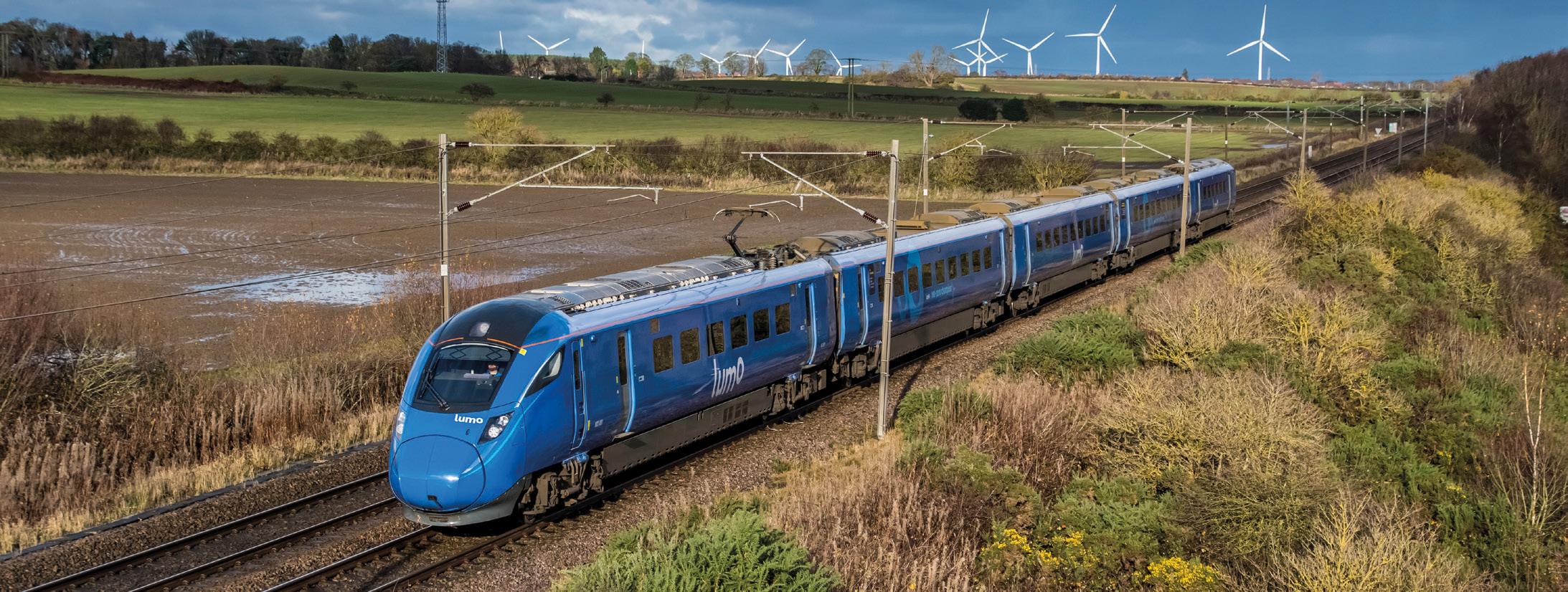
Delivering specialist services across the public transport sector
FirstGroup is a leading private sector provider of public transport, employing 30,000 people across its different bus and rail brands. It is probably best known as being an operator of all types of passenger rail: longdistance, commuter, regional and sleeper services. It operates three major UK train operating companies and two open access passenger rail services.
However, another area which is gathering steam and becoming increasingly important not just to FirstGroup, but the UK rail industry overall, is consultancy work. The First Rail Consultancy business was born out of the group’s bidding team four years ago, taking its expertise to deliver specialist services across the public transport sector, particularly in the rail industry.
“You could say we are FirstGroup’s best kept secret, but that is changing, and the momentum is building,” said Rebecca Holding, Managing Director of First Rail Consultancy. “It has been a very exciting journey so far in which we have already grown from around 30 people and four teams, to now 85 experts and 10 teams. The future looks even more promising and the impact we will have on transport even greater.”
First Rail Consultancy’s areas of expertise range from commercial, customer experience, human
resources, marketing, and programme and project management to bid writing, analysis, engineering, operations, and performance and planning.
First Rail Consultancy initially centred on working closely with other FirstGroup rail businesses, including operators Avanti West Coast, Great Western Railway, South Western Railway, Hull Trains, Lumo, and Tram Operations Limited as well as advising First Rail’s shadow operator for high speed services on HS2 infrastructure through the West Coast Partnership. But this has since expanded, with the teams advising First Bus, the Rail Delivery Group and ScotRail, for example.
It is the latter type of work that Rebecca, who has been at the business for four years, is looking to expand: “We’re not a consultancy company in rail, we are a transport company that does consultancy. The benefit of working with us is that we bring together the experience of a large owning group in FirstGroup, which we can draw on, while at the same time First Rail Consultancy is a relatively small group of experts which is able to be agile and responsive to its clients.
“The services that we provide cover every facet of a transport company, which effectively means that you’ve got yourself a team that you can lift and send in, who know the industry. We have the knowledge
and lived experience. My senior team have all grown up in rail and because we’ve got that umbrella over us as FirstGroup, we can send people to one of our businesses for learning. That transfer of knowledge that we have access to is massively underestimated.”
Rebecca accepts that being part of FirstGroup might give the perception of a conflict of interest with it comes to external clients, but this is something she is keen to dismiss.
“There was a lack of knowledge about the consultancy element of FirstGroup, and this is something that we have been raising awareness about,” she said. “Some people have expressed concerns that we might be conflicted, but that definitely isn’t the case.
“It is no different to your big consultancies going in and doing a bid for one group and then next time doing it with a different group. People don’t bat an eyelid at that. We have the appropriate governance in place to manage this.”
First Rail Consultancy’s expertise is being recognised. Last year it was among 37 companies appointed to the Department for Transport’s Specialist Technical and Commercial Advisory for Rail and Other Transport Systems (STARThree) framework, to advise on the delivery of rail, road,
CONSULTANCY 62 April 2024
and aviation projects. It has also been named a finalist in the Employer of the Year category at this year’s Women in Rail Awards.
“First Rail Consultancy has been a real success story for FirstGroup and people are really starting to take note of our expertise and the impact we can have on the industry,” she said “It has been exciting shaping the journey and as we enter CP7 we have a great platform and an ever-growing reputation for our consultancy services.
“From a place where we worked on bidding and just providing services to FirstGroup’s own train companies, the last two years have really seen an expansion of our work externally. Being awarded a place on the STARThree framework enables us to provide consultancy services to the Department for Transport, as well as providing expertise to Network Rail on some really exciting projects such as the East Coast Digital Programme. We’ve also just been put on the Public Sector Resourcing framework to provide services there.”
Rail runs in Rebecca’s family, and she is the third generation to work in the industry, following in the footsteps of her father and grandfather. Her grandfather worked at British Rail, while her father is currently at Network Rail. Despite the family links to the sector, it was never an aspiration to work in the railways but it is a career that has flourished from joining Network Rail as a Delay Attributor in Birmingham, a role she took on initially to decide what she wanted to do.
“If you’d have told me when I was a teenager that I’d be in rail I probably would have laughed and said absolutely not,” she said. “But when I joined Network Rail in an entry-level job, I quickly saw the vast array of opportunities in the railways. I went to my head of control at Network Rail and asked about mentoring and development, and the rest is history. 16 years later and I am more than happy doing this with my life, I wouldn’t change it.”
Throughout her career, Rebecca has been involved in performance, operations, strategy, planning and business improvements. In between working
for Network Rail and FirstGroup, she has also been employed by Southern, Govia Thameslink Railway and Abellio Group.
“I initially came to FirstGroup as Director of Planning and Performance before I was asked if I’d look at the consultancy arm which I saw as a really good opportunity. It turns out it hasn’t just been really good; it has been great!
“The future is very exciting. We are well established in our core areas, and we are also building our strengths in other fields. I am particularly excited when it comes to sustainability and the capability within the team in that area and where that goes, as we are providing that service a lot. The environmental and social value agendas are becoming more and more important to everyone and something that we can provide within the transport sector already.”
Rebecca is part of a wider organisation passionate about creating a more diverse and inclusive business, and attracting, developing and retaining talent. FirstGroup offers training, leadership and development programmes aimed at underrepresented groups across each of its businesses.
Earlier on this year it launched a new advocate network called First Connections to bring together those who have taken part and benefitted from its personal development programmes aimed at women and ethnically diverse colleagues. It allows those who have taken part in the company’s personal development programmes to connect and network as well as offer support and career development guidance to one another.
Over time, the network will evolve into a forum where advocates host regular webinars and share experiences and knowledge, as well as promote opportunities, such as job shadowing and mentoring.
Rebecca concluded: “It has been a really enjoyable place to work and it is also an exciting chapter in my career helping to shape the UK rail industry and driving through a lot of change through innovation.
“The future looks bright, particularly for First Rail Consultancy, which has the expertise and passion to help drive change in the industry for the better.”
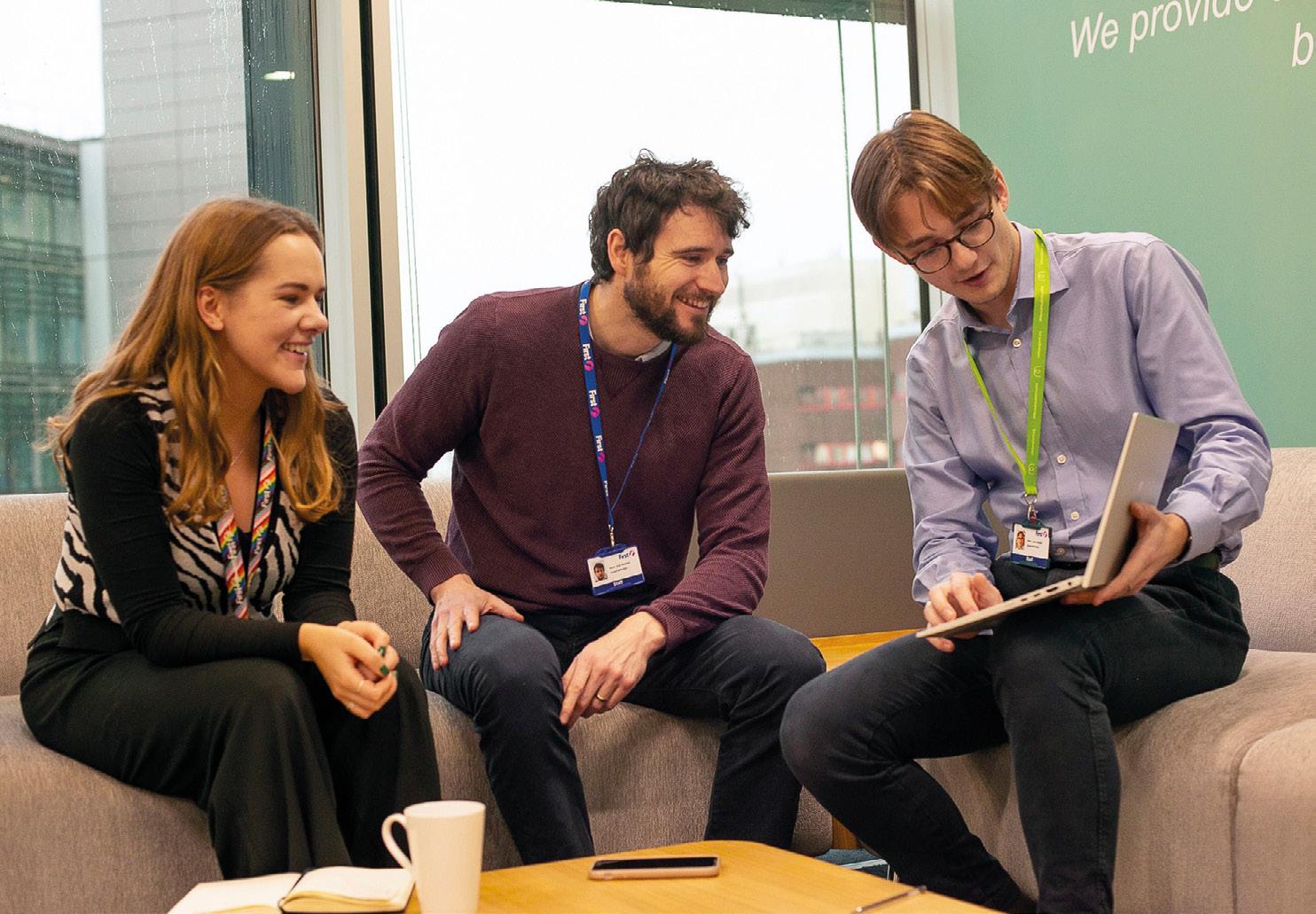

You could say we are FirstGroup’s best kept secret, but that is changing, and the momentum is building
The First Rail family
The First Rail team is one of the most experienced in the industry with three franchises – Avanti West Coast, South Western Railway and Great Western Railway, plus open access passenger services Hull Trains and Lumo. It also operates Tramlink in Croydon and Heathrow Express.
In addition to its train operating companies, First Rail also includes:
First Rail Holdings, containing a number of specialist teams such as finance, property, engineering, operations, IT, procurement and human resources.
First Customer Contact Centre, delivering support services for passengers.
First Rail Consultancy, providing specialist services across the public transport sector, particularly in the rail industry.
Mistral Data – supplying innovative data analytic systems for the rail market.
Image: Raphaela Boghi
CONSULTANCY 63 April 2024
Image: Raphaela Boghi
East West Rail’s Innovation Manager Daisy Chapman-Chamberlain has been exploring all things fire in a recent trip to Italy
Invention, international collaboration, and diligence

Fire safety is a topic which many would consider to be particularly dry and immutable. It would be easy to assume that fire safety is a static topic, with rigid standards set around design and materials in both rolling stock and infrastructure, and innovation work in rail generally being undertaken in more ‘popular’ growth areas, such as AI, or digital twins.
However, the Fire Protection of Rolling Stock Conference, which took place in Milan in March 2024, delivered by Arena International Events Group, proved it to be a dynamic, exciting area of rail development. Colleagues from across the UK, Europe, and beyond, gathered to discuss new perspectives, ideas, developments, and challenges within this critical topic.
The variety within the topic of rail fire safety was particularly apparent when listening to the range of excellent speakers, highlighting the knowledge benefits of collaborating with international transport colleagues. For example, an excellent presentation on the growing risks and multimodal opportunities for e-scooter & e-bike lithium-ion batteries onboard passenger trains came from Giuseppe Bene, Vehicles Authorization Office, ANSFISA. Learning from other modes of transport came to the fore, including what bus fires can teach us about fire safety of rolling stock, from Marta Dessi, Train System Engineer, Alstom –who suggested possible learnings for rail from electric buses ranging from bus batteries being equipped with an integrated cooling system, through to battery

packs being designed to allow rapid and intuitive integration with external fire suppression systems. A very interesting presentation on sustainable design for an environmental future followed from Keith Mack, Quality Standards Manager, London North Eastern Railway – looking at flame retardants, which are often harmful to the environment, and sustainable alternatives to these such as halogen free solutions, and beyond.
In my time on stage, I invited the audience to consider a range of topics. Firstly, do we use trains differently in the post-COVID world? If we do, then how do we adapt our fire safety and interior design models to suit new passenger trends? What role will innovation play in this, and crucially, what is the importance of inclusion and future skills?
In UK rail, total passenger revenue was £2.6 billion in the quarter from July to September 2023 according to the Office of Rail and Road. This is a 10 per cent increase on the £2.4 billion in the same quarter in the previous year (when adjusted for inflation), but rail still faces a significant financial gap when compared to post-COVID travel. Analysis published in June 2023 by the Great British Railways Transition Team also looks at why people are using rail; leisure travel has historically been the largest market compared to commuting and business travel (£1.2 billion) but this has grown as a share of revenue compared to pre-pandemic figures, and weekend demand is up by 22 per cent. It is vital that we consider what these changes mean
for interior design, infrastructure, and fire safety.
The first and most obvious implication is that changing usage patterns bring changing expectations from passengers. Rolling stock design may need to adjust to match the leisure demand; will leisure travellers pay to sit in a seat that is not as comfortable as they would like, due to reduction of foam/padding based on fire safety regulations? This opens an interesting question in the cost/benefit analysis; if leisure travellers expect more comfortable seats, will this require a higher design and construction spend to meet passenger expectations, whilst still meeting fire safety standards? We may also see more luggage, more cycles, more sports equipment, all due to more leisure use – this leads to yet another design consideration, in both storage and in the potential for flexible seating. Pushes for more child-friendly design from the Campaign for Family Friendly Trains also reflects changing public expectations in some ways; a call to make it easier in both design and rail operations for families to use rail comfortably and confidently. In the wider system, more infrequent travellers may also mean more travellers with lower levels of travel confidence, and who may require more wayfinding or assistance in both rolling stock and station environments. Inclusive design is also becoming an increasingly important factor, not only as we work to enable confident travel for a wider range of potential rail users, but also with an ageing population. With a programme of rolling stock refurbishment hopefully forthcoming, and
JUST THE TICKET 64 April 2024
We
have the solution to your energy needs.
HOPPECKE is an expert in customised rail battery systems.
Our energy storage solutions are used globally for railway applications.

• Proven FNC (NiCad) or valve regulated lead acid batteries ensure virtually maintenance-free operation, in a unique electrical and mechanical design.

• Lithium-ion (Li-Ion) batteries offer superior energy storage and power management, including built-in thermal management in a fireproof housing.
Contact us today. 01782 667305
rail@hoppecke.co.uk
www.hoppecke.co.uk
therefore a confident 30-year window of rolling stock improvement to build on, the right kind of cautious innovation risk could be undertaken.
Beyond rolling stock, Network Rail is approaching CP7 with a firm budget of £43.1 billion; this presents a challenging financial backdrop for maintenance and infrastructure operations. Across the whole rail system, we see the wider need for efficiency in design and maintenance more than ever. It is therefore imperative that we don’t look at rolling stock in a silo, but as part of and influenced by the railway infrastructure and the wider transport context.
The need to innovate in design, maintenance, and beyond (to enable lower costs, lower carbon, higher comfort, and more) must not lead to a reduction in safety. For example, we need to innovate in materials - for carbon, for longevity, for weight reduction and so on. We know standards will need to adapt to the new fire safety risks posed by the use of ‘new’ materials in infrastructure - for example, in potential composite masts where a standards challenge is presented by ‘new’ risks when compared to ‘traditional’ materials i.e. steel.
We must enable the right type of ‘risk’ – our standards are vital, and they are the reason we have one of the safest railways in the world, but we must remain open to innovation. Meeting this balance of safety and changing needs will be a tightrope we have to walk as we move towards the future of rail. As we face an increasing level of turnover in rail staff due to retirement, corporate memory becomes shorter. A large number of people working in UK rail at all levels have never experienced a catastrophic incident. This means major disasters can sadly be ‘forgotten’ until there are new major incidents.
The ‘acceptable risk’ level can also be much lower than we think. Following the Grenfell tragedy, where a tower block covered in flammable cladding caught fire and killed 72 people, immediate steps were promised to remove the cladding from other buildings. However, five years on (as of 2022) at least
Being able to engage with international developments and innovations is vital to all rail organisations to ensure we are at the forefront of a thriving, growing, and safe rail sector

10,000 buildings are still covered in the flammable cladding. Once the shock fades, so too does the impetus for change; this is the same type of risk we all face with corporate memory loss.
New development can be a key way to address these challenges; the Global Centre of Rail Excellence (GCRE) will be a purpose-built site for world class research, testing and certification of rolling stock, infrastructure and innovative new rail technologies that will fill a gap, not just in UK rail, but across Europe. When GCRE was discussed at the conference, there was a flurry of interest, including from fire service employees in attendance looking to explore the review of fire safety and evacuation protocols onboard when rolling stock is still being tested at the future GCRE site.
Another key way to address corporate memory and to address changing needs is through skills and diversity initiatives. We need future skills as the rail industry changes – not only to enable new ways of looking at things, but also because the sector is facing a significant number of employees nearing retirement. Engaging younger workers is essential in ensuring a continuous and skilled labour force and in preventing potential skill shortages and both technical and corporate knowledge gaps. It also helps to build a more diverse workforce and promotes a wider variety of perspectives and ideas. To attract the rail employees of the future, we must ensure we are engaging closely with schools, colleges, and universities (especially through Community Rail programmes). This must happen alongside developing more inclusive practices within the sector and ensuring that we promote this externally, ensuring that rail is an attractive career option to those looking in.
It is also fundamentally important to safety that we have a diverse workforce; designing systems that work for all means you need representatives of those groups in the process. There are many dangers in designing only for one group: for example, car safety factors being designed for the male form present previously unseen dangers for women. When a woman is involved in a car crash, she is 47 per cent more likely to be seriously injured, even when
researchers control for factors such as height, weight, seatbelt usage, and crash intensity, and she is also 17 per cent more likely to die. In 2018 Astrid Linder, Research Director of Traffic Safety at the Swedish National Road and Transport Research Institute, presented a paper covering EU regulatory car crashtest requirements. An anthropometrically correct female crash-test dummy is not required in the testing, including in the seatbelt test and both lateral-collision tests, which all specify that a male dummy should be used. Interior passive safety requirements in rail vehicles (the interactions between occupants and the vehicle) are mandated in the UK by GMRT2100, which currently only mandates testing with a 50th percentile crash test dummy, which is based on the height and weight of the average North American male at the beginning of the 21st century. Work is underway in the UK following the Stonehaven derailment to assess whether there is justification for train driving cab testing with a wider range of dummy models, including 5th percentile females. To avoid unconscious testing and design biases, it is crucial that we work to enable diverse teams across rail at all levels.
Though there was much discussion of European standard EN 45545-2, the truly fascinating discussion came from all the topics above: multi-mobility factors across other modes of transport, an ever-growing drive for sustainability, and the changing needs we are gradually seeing from passengers in the UK and beyond. For East West Rail, the safety of passengers and staff will be paramount to the future operations of the railway. And being able to engage with international developments and innovations is vital to all rail organisations to ensure we are at the forefront of a thriving, growing, and safe rail sector.
About the author
Daisy Chapman-Chamberlain is the Innovation Manager at East West Rail, with a passion for transport transformation, sustainability, and inclusion. She works to make the future of rail better for all customers; safer, accessible, and enjoyable. Daisy can be contacted at daisy.chapmanchamberlain@eastwestrail.co.uk
JUST THE TICKET 66 April 2024


Elite Project Services (EPS) is a training provider and recruitment specialist which transforms the lives of prisoners, ex-offenders, and those
furthest
from employment, helping them to access opportunities in rail
Project management under pressure
EPS is renowned for its passion for giving prisoners a new lease of life and showing employers what a remarkable talent pool they represent. At the heart of EPS is Martin Dunne, CEO, and his team.
Martin is rightly proud of the business he has built, having been on the wrong side of the law himself. He worked in the rail sector before ‘getting into trouble’ and spending time in prison. It was a life-changing moment when he realised he could train prisoners and give them a genuine chance at a positive and constructive future in a sector he knows and loves. Through his extensive connections with businesses in the rail sector and his in-depth knowledge of the workings of prisons’ regimes, he
connects the two to the benefit of everyone.
Six years on, and the EPS team are busier than ever. Luckily, they are experts at dealing with unforeseen challenges, often at the last minute. Balancing time in the office writing tenders and at the same time managing operational headaches is all in a day’s work.
Recently Martin and his team have had to work out how to transport 100 tonnes of ballast, 80 metres of track and all the necessary components to four different prisons across the south of England, whilst managing the stock in different locations.
Having rail track in good working order is essential to run EPS courses to their full potential. In February, HMP Rochester’s training track was in a poor state.

EPS stepped in and delivered 22 tonnes of new rail ballast and components along with a three-tonne excavator. For no charge to HMP Rochester, the EPS team, with support from Andrew Crowhurst, completed the job in no time.
During this time, they worked alongside HMP Portland in Dorset to upgrade its disused track. After hearing about the many successes other prisons have had when working with EPS, HMP Portland signed a new 12-month contract for training. Nothing went to waste, with some spare components at HMP Portland put to good use in the training setup EPS had also been awarded at HMP Guys Marsh. EPS installed a new track area at HMP Guys Marsh to support this new contract, with help from HMPs team members Rebecca Archer and Craig Bell.
Changing lives with employment opportunities in rail
EPS does more than offer training for the rail sector; it changes lives.
Established in 2018, the ethical, family-run business believes in eliminating discrimination and working for the good of the wider community.
Businesses that work with EPS gain access to a diverse and committed workforce who are ready and fully trained to work safely and effectively on the rail, when and where they are needed.
Part of being such an inclusive business includes offering opportunities for women as well as men. On the way back from Dorset, the team stopped off at HMP Send in Sussex, a closed prison for adult women. With women being underrepresented in the rail sector, the Women into Rail programme plays an important role in redressing the balance. It also helps EPS business partners increase their social value.
While discussing the benefits of a career on the rail for women, the team arranged a free NPORS tractor course to support the local staff and women candidates working on the prison farm. This project will be completed by JCB World in Rochester.
Now, EPS is cautiously optimistic that its new tender submission to deliver training at HMP Send will be awarded shortly.
Work with open prisons
Another way that EPS works with prisons is by utilising Release on Temporary License (ROTL). With Martin’s experience of open prisons, EPS recently
ADVERTORIAL 68 April 2024
Images: Bill Cullen Peppermint Digital Agency
won a contract with HMP Spring Hill in Aylesbury with a unique model to support prisoners to complete their Personal Track Safety qualifications and start employment whilst on ROTL from HMP Springhill.
In partnership with the East West Rail Alliance (EWRA), which is delivering the East West Rail Phase 2 project in the community area that houses the prison, another new training track was successfully installed.
EWRA Track Senior Construction Manager James Morrison said: “East West Rail Alliance was more than happy to donate the redundant materials and track team plant & labour team to install the training track panels when approached by EPS. This is one of the many ways we have been able to complete some works that provide a learning legacy in the communities we have been working in.”
EPS currently employs four prisoners on ROTL as part of its track team and working with CarmichaelUK, while an additional four prisoners have been placed into work with EKFB at HS2. EPS regularly employs 15-20 prisoners on ROTL each day across three open establishments.
A unique approach
Personal and professional connections mean EPS can make these special projects happen. “Ask a cheeky question and you may be surprised by the answer,” said Martin.
One such project saw EPS repair a damaged farm road for HMP Spring Hill, with support from site partners HS2 and EKFB. Within one week, EFKB donated 120 tonnes of type 1 and Flannery Plant Hire delivered to site the plant required. Within just two weeks, a new safe road was ready to use. EPS paid tribute to Peter Dibble & Vernon Clarke, who helped to deliver the project.
Remarkably, all of these projects were completed within just five weeks. Martin said: “It is clear to me that things can be done when you know how to manage red tape and bureaucracy. It just takes experience, thought, and care. And we do care. We are always actively looking for small and large rail employers that see the value in the social value of giving meaningful work to serving and ex-offenders.”
Utilising contacts inside and outside prisons, EPS has been able to run its railtrack course in 13 prisons over the last six years. There are plans to do this in a further three prisons before the summer.
Signal Box Programme
After months of working in partnership with Southern Region line side assets NWR, CIRCET, and Brighter Homes, EPS is now part of a signal box programme to upgrade and refurbish a number of unmanned and disused signal boxes across Kent/Sussex & Wessex. The aim of the programme is to support and upskill ex and serving offenders into rail employment. Once the signal boxes have been refurbished, they are offered to local community working groups to occupy and breathe life back into a previously disused building. Chartham Signal box has been converted into a local book club.



Social value in the community
EPS supported the London Borough of Merton in south London to open a new hub and will be working in close partnership with the council to deliver and facilitate training courses that meet commercial workforce needs and produce social value returns. It offers an extensive array of practical and classroombased training, new NSAR track and fully equipped classroom facilities. The new facilities will increase the availability of training for more candidates, supporting more people into employment across this district and moving us closer to national zero net carbon targets.
In 2022, EPS launched a social value training centre in Stratford to support rail and construction companies in upskilling staff. EPS provides training for individuals who have been on long-term unemployment or may have a criminal conviction.
As well as commercial and social value course delivery, the Stratford training centre provides drop-in services for newly released prisoners and other members of the community. Professionally experienced staff deliver a multitude of courses across several disciplines and awarding bodies. EPS also provides free training to local schools, businesses, and other community stakeholders.
And, with a range of exciting new projects on the horizon, the future looks bright for Martin and his dedicated team – as well as the individuals they support.
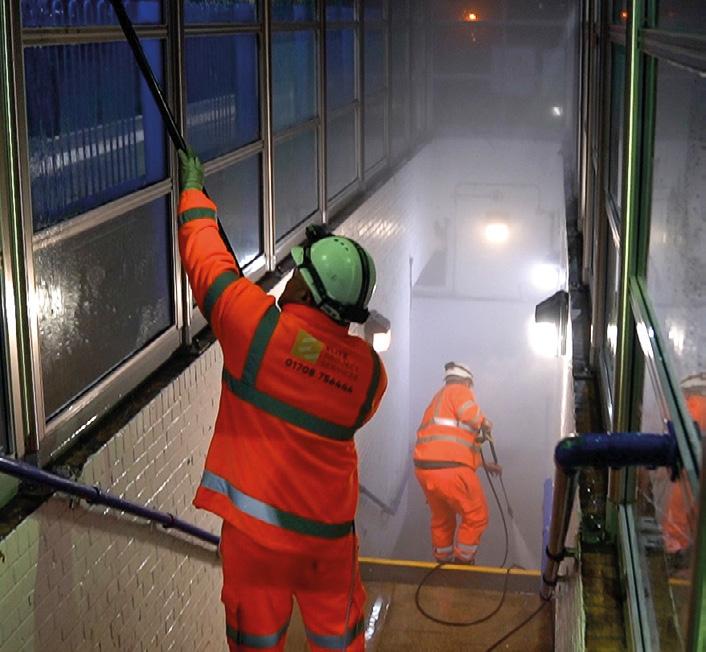
Established in 2018, the ethical, family-run business believes in eliminating discrimination and working for the good of the wider community
Elite Project Services is an NPORS, PASMA, ESUR approved organisation www.eliteprojectservices.co.uk Call: +44 (0)1708 756 444 Email: info@eliteprojectservices.com ADVERTORIAL 69 April 2024
One of the UK’s largest rolling stock storage companies has branched out to provide even more solutions for the rail industry. MCL Group’s Commercial Director Pankaj Kapoor discusses this transition
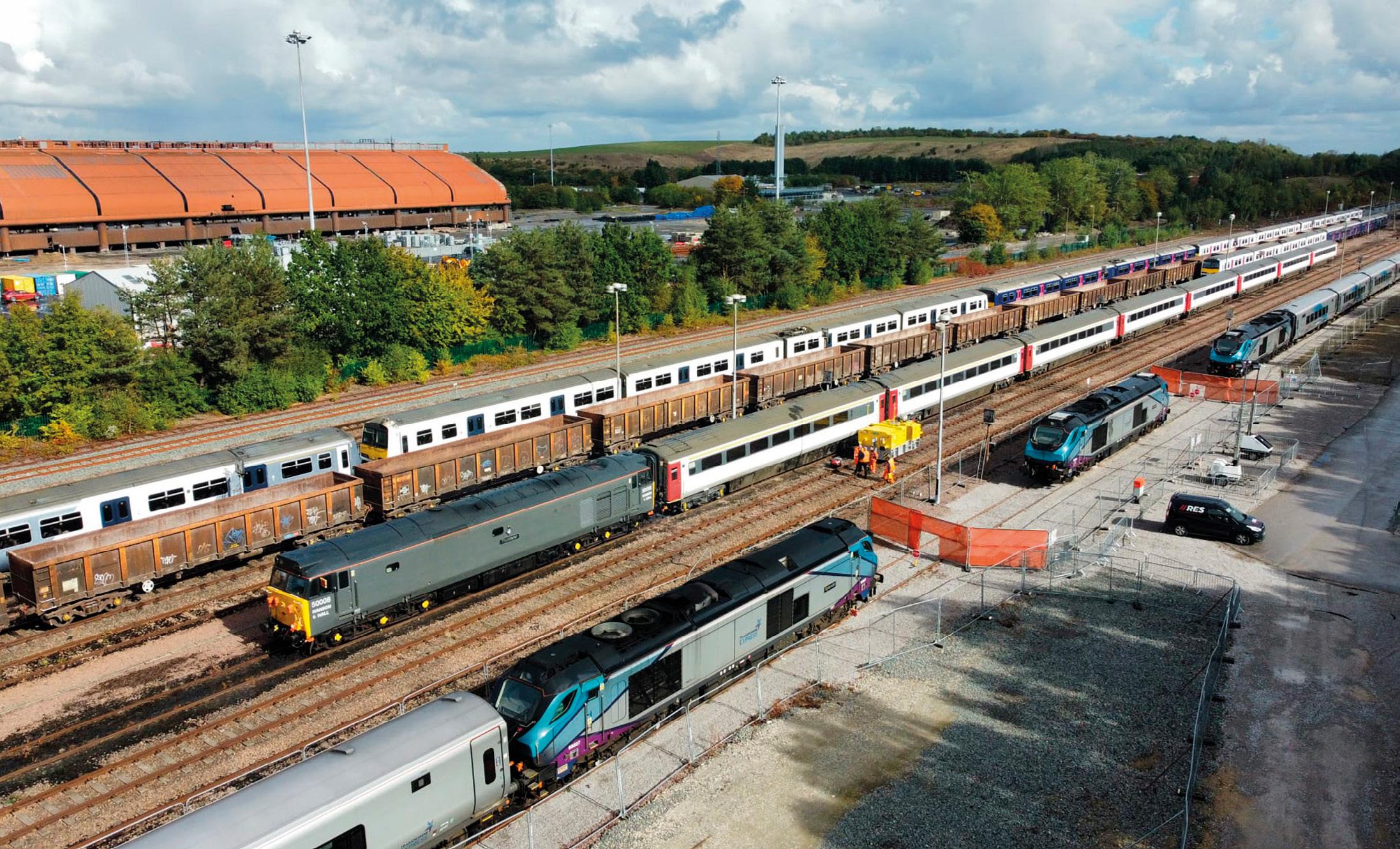
New chapter for MCL Group (MCL Solutions Ltd)
At any one time, MCL Group is providing the highest quality rail storage solutions across the UK for anywhere between 500 and 600 vehicles. It’s a service and reputation that has grown over the last 12 years, with the organisation now boasting 24,000m of stabling at eight rail vehicle storage facilities, all directly connected to the national rail network.
The organisation, which up until 14 months ago was known as Northern Processing Ltd, has gone through a transformation, including a name change, in reflection of the expansion of the services it offers. Now known as MCL Group, alongside storage, its teams are well equipped to deal with day-to-day maintenance requirements such as night tasks,
infrastructure maintenance, and track maintenance.
“Storage is how the rail side started and we’ve grown to the largest rolling stock storage provider in the country with contracts with pretty much every company, providing storage facilities from Wembley to Telford, to Warrington, to Gascoigne Wood,” said Commercial Director Pankaj Kapoor.
“The rolling stock storage market fluctuates and for the next few years the curve is probably going down, so the decision was made to make the business more versatile and using our expertise and partnering with others, go into the infrastructure side. To do that successfully we have invested heavily into plant and people, and already that is paying dividends by the fact we have won several depot and siding track work
projects with a couple of major players in the market.” Pankaj was brought in by Managing Director Mark Lickley to help drive the transformation. By trade he is an engineer having initially started in the Merchant Navy. Following the completion of a degree in marine and composite technology, he started his career in the railways with a job at Nottingham Trams in maintenance, before working his way up at the company to Maintenance and Asset Manager.
After starting in light rail, he then moved into the consultancy world with Interfleet, then went into Loram as Head of Sales in the UK. A role at GB Railfreight looking after its rail services business followed, and from there he went into rail infrastructure, initially with RSS Infrastructure before
ADVERTORIAL 70 April 2024
taking on his current post at MCL Rail.
“It’s been an exciting journey,” he said. “Having started as an engineer and moving into a consultant role, since then I’ve always been in front of house positions, be it sales or commercial etc and I feel that really brings the best out of me being at the front of the business.
“It’s been really enjoyable at MCL Group. It won’t stop here, we’ve got the right people on board and the right partnerships, and we’ve got plans to expand and to go into further variations of the business, something that will come out in the near future.”
Pankaj was drawn to the company by the family feel of the organisation, the passion of the staff, led by the MD Mark Lickley, and the vision for the future. The ambition has been backed by investment. Among its 30 to 40 full time/part time staff includes the recent addition of nine track workers, machines, and plant drivers, with the continuing investment in people and plant.
“Mark started the business 12 years ago as Northern Processing and made it into a multi-millionpound business,” he said. “I’ve known Mark for a while as a supplier and client relationship and was won over by everything about the business and his aspirations for the future when I met him at an event.
“We’ve already achieved so much, expanding into maintenance at our Gascoigne Wood facility. We’ve got infrastructure teams set up, we’re doing a lot of work with freight operating companies, and we are also supplying railway ballast to projects across the country. It has grown quite a bit, but not to the detriment of our mantra of finding the best solutions for our clients.
“The other side of the business is around material handling and crushing. We’ve got our site at port in Middlesbrough, which we operate an aspect of, bringing in ships, offloading the material and selling it. We have also invested in Kingsferry Wharf in Scunthorpe which is now capable of accepting small to medium sized boats for material offloading with a warehousing capacity of up to 300,000 square feet for handling storage and distribution.”
From a maintenance perspective, MCL has the expertise and equipment to carry out de-vegetation, both low level and high level, and track work. It has its own plant and people with the right competencies and right tools to do the job. It can also supply depot
PTS and normal PTS compliant staff to do track works such as sleeper replacement, track renewals, depot siding maintenance, regular maintenance, re-ballasting, tamping and fencing.
This is only going to grow, with an enthusiastic Pankaj explaining that there will be no slowing down for the business, with some exciting developments set to be announced shortly.
“We have a good reputation of delivering the work and of great relationships, being small enough to be agile enough to supply the best solutions to our clients and the industry and ones which are safe and efficient for everyone involved,” he said. “Partnership is key to us with a proven track record in collaborating with others using the best of our expertise with theirs to ensure success.
“I’m very optimistic for the future with relationships, collaboration and out of the box thinking all important for the track ahead. The company is only going to grow with what we currently offer alongside the plans for the future. Storage will continue strongly for us, the projects we are doing for some of the big players are continuing and the plan is to expand the infrastructure side of things.
“For me personally, I am pleased I joined the rail industry. It is one of the best industries to work in. I enjoy spending time with railway colleagues, it is a close-knit industry, and I’m proud to be part of the MCL Group, who continue to come up with solutions to help keep the railway running safely and effectively.”
Visit www.mclgroup.uk for more details.



Partnership is key to us with a proven track record in collaborating with others using the best of our expertise with theirs to ensure success

ADVERTORIAL 71 April 2024
As we enter the era of Control Period 7 (CP7) funding this month, RBD Community asks: is 2024 the ultimate year for networking?
Networking – your marketplace to shine
Networking events are an essential marketplace for rail professionals, creating opportunities for supply chain companies to meet new potential customers and buyers to find new products and services.
We know how important these events are in the rail calendar, which is why we’re attending events with the likes of the Railway Industry Association (RIA), Rail Infrastructure Networking, Birmingham Centre for Railway Research and Education, and many more, to promote and bring key networking opportunities to members.
You’ll also see more of our team at events across the country throughout the year, connecting with members and the wider industry to share successes and opportunities.
Top of the agenda
A well-connected supply chain and collaborative working relationships are sure to be at the top of the agenda, particularly this month as Network Rail ushers in £44 billion of funding in Control Period 7 (CP7). Growing networks and cementing relationships is key in this industry – and arguably more so now than ever. Making 2024 the ultimate year for networking, although we’re certain it’s not the last by any stretch.
RBD Community Business Development Manager
Sarah Hopton said: “It’s fully evident from the amount of time and money being invested by companies in the supply chain, just how much importance is being placed on networking. And we’re ensuring that, as a team, we are present at these events as speakers, exhibitors, and attendees to help members exploit every opportunity possible.”
The latest RBD Community team tour saw us take in the RIA Innovation Conference (RIC) in Newport, where the hot topic was, of course, innovation.
Laura Bennett from Unipart said: “As leaders in performance improvement within the rail industry, RIC provides an ideal platform to collaborate with industry partners and celebrate the incredible advancements and innovations shaping the future of rail.” With Ashley James from Westermo adding: “It’s the diversity of opportunities with other suppliers, and innovative technology that is the draw for us.”
Steve Derrick from AARC Professional Services Ltd, said: “We attended RIC to show how we are different, and what we can do differently. This is our innovation.” And James Brown at Belvoir Rail says networking events like RIC are so important “Because we are disruptive innovators, and this is our place to shine!”


Networking for our members
The RIA Innovation Conference is one of three flagship events RBD Community members can attend at RIA member prices – saving up to 60 per cent. The others are the RIA Dinner & RISE Awards 2024 on 27 June and the RIA Annual Conference 2024 from 6-7 November. To book and claim your discount please email fiona@railbusinessdaily.com
RBD Community’s Member Relations and Content Manager Fiona Broomfield said: “Supporting our members through profile enhancement, intelligence and of course networking is our top priority, and we have several resources available to help members forward plan their networking activities, promote their own events, and connect with the wider supply chain and industry.”
The Ultimate Rail Calendar houses hundreds of
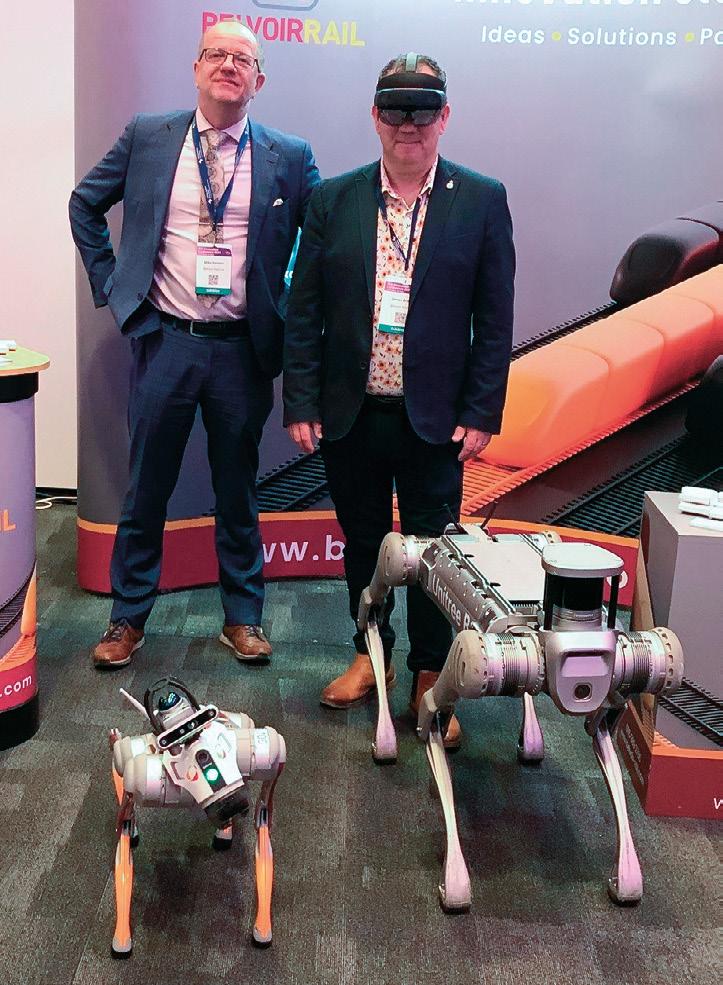

UK and international rail events – from conferences and awards ceremonies to webinars and seminars – which is a useful resource for forward planning.
The RBD Rail Supplier Directory is the place to find your next supply chain partner and is home to all RIA and RBD Community members who showcase their rail products and services.
Railway Industry Association Members can access more than 100 events a year here
https://www.riagb.org.uk/RIA/RIA_Events/RIA/ RIA_Events.aspx and many events are open to all.
If you have an event to promote in the Ultimate Rail Calendar, send it to fiona@railbusinessdaily. com and we will promote it for you. We look forward to seeing you at more networking events in 2024.
Steve Derrick from AARC Professional Services Ltd with RBD’s Sarah Hopton
RBD’s Sarah Hopton and Unipart Rail’s Laura Bennett
Mike Harmer and James Brown from Belvoir Rail
72 April 2024
Ashley James from Westermo and RBD’s Sarah Hopton


AARC Professional Services Limited draws from over five decades of experience to provide expert support to the industry.
We are a railway consultancy bringing together likeminded rail professionals with a common aim to deliver outstanding outcomes by..
• Helping clients achieve their goals...
• Through strategic and technical expert advice...
• Across a range of disciplines...
• From the frontline through to the boardroom
Whether you’re looking for high level advice & guidance or direct project support, we’re here to help you deliver excellent outcomes. To get in touch, please visit www.aarcps.co.uk













April 2024 RBD Community Member Spotlight Feature
rail
to
benefits for less than £1 a day Get an unrivalled package of profile-enhancing PR, advertising, intelligence, and networking benefits Join today fiona@railbusinessdaily.com | 07949 409829 community.railbusinessdaily.com
Everything you need to do more business in
Up
£4,300 of
or contact us at: info@aarcps.co.uk
by railway people, for railway people
Run

Richard Carr has extensive experience working in the rail sector with a reputation for delivering results focused on building relationships to build business growth. richard@consultcarr.com
www.linkedin.com/in/richardcarrrail
07849 896 270

Dywidag work to make infrastructure safer, stronger, and smarter with data-driven systems extending the lifespan of new and ageing track, roads, tunnels, and bridges. sales.uk@dywidag.com
https://dywidag.com/ 0161 797 5511

SCAN ME

GreenBlue Urban is the global leading solutions provider in the landscaping industry they act as the interface between nature and the built environment.
enquiries@greenblue.com
www.greenblue.com
01580 830 800
SCAN ME

Incremental create unique digital solutions that confront and alleviate the current and emerging challenges facing the rail industry and its customers. contact@incrementalsolutions.co.uk
www.incrementalsolutions.co.uk
01904 217 316
SCAN ME

SCAN ME


Ebeni Ltd’s engineering experts specialise in safety, mission, and business-critical applications. Addressing challenges around the engineering of these systems, focusing on excellence, benefit, and integrity.
matthew.pearson@ebeni.com
www.ebeni.com
01249 70 05 05
SCAN ME

Jamieson have been delivering projects within the rail and transport sectors for over 10 years and are a Network Rail Principal Contractors Licence holder.
www.jamiesoncontracting.co.uk
0161 366 0075
SCAN ME

Jobson James Rail is a national specialist railway insurance broker, the market leader in the UK by a huge margin with over 550+ rail clients across the UK, Middle East and Australasia. keven.parker@jjrail.co.uk
Jobson James Rail is a national specialist railway insurance broker, the market leader in the UK by a huge margin with over 550+ rail clients across the UK, Middle East and Australasia. keven.parker@jjrail.co.uk
jjrail.co.uk
jjrail.co.uk
07816 283949
07816 283949
LUBCON Lubricants UK Ltd develops, manufactures, and distributes high-quality greases, pastes, oils, sprays and lubrication systems for a wide range of industrial applications and sectors. sales@lubcon.co.uk
www.lubcon.co.uk
01323 561 030
SCAN ME SCAN ME
SCAN ME
Mahoney and Matthews are a boutique consultancy with a drive to empower individuals, teams, and organisations to achieve their full potential.
hello@mahoneyandmatthews.com
www.mahoneyandmatthews.com
SCAN ME
DirectoryDEC.indd 11 16/01/2024 17:45
DirectoryDEC.indd 11 16/01/2024 17:45
DIRECTORY 74 April 2024



Maxim Recruitment is an independent recruitment consultancy specialising in the building, civil engineering, and consulting sectors of the construction industry internationally. uk@maximrecruitment.com
www.maximrecruitment.com
0800 689 4841

Cleanliness is a key driver of passenger satisfaction, and we understand the unique cleaning challenges faced by the transport sector. Paragon products deliver great results every time. sales@paragongroup.co.uk
www.paragongroup.co.uk
www.paragongroup.co.uk
SCAN ME

Racine Railroad Products has been designing, manufacturing, and servicing quality maintenance-of-way equipment for the railroad industry for more than 50 years.
info@racinerailroad.co.uk
www.racinerailroaduk.com
0330 164 1375
SCAN ME

Rail Delivery Group is a membership organisation serving train operating companies. Mainly funded through its members it works to create a better, simpler railway for all. info@raildeliverygroup.com
www.raildeliverygroup.com
020 7841 8000
SCAN ME

Sensonic pioneers the use of fiber optic vibration sensing, to deliver railway insights such as monitoring track condition, detecting trespass and cable security events. office@sensonic.com
www.sensonic.com
01276 534730
SCAN ME

STAUFF are proud to manufacture and develop fluid power components, manipulated tube products, and finished kits. Tested, sealed and ready to install on production lines. uk.sales@stauff.com
www.stauff.co.uk
0114 251 85 18
SCAN ME
SCAN ME

Increase capacity and reduce costs with Petards’ software-based digital solutions. The eyeTrain range helps reduce costs, increase capacity, and improve customer experience. rail@petards.com
www.petards.com
0191 420 3000
SCAN ME

See Change specialise in rail project management, offering sponsorship, consultancy, and training services.
admin@see-changes.com
www.see-changes.com
07814 578 919
SCAN ME

UK Power Networks Services solve your energy challenges through innovative solutions, delivering resilience, cost efficiency and sustainability to deliver a bright energy future.
www.ukpowernetworksservices.co.uk
020 7397 7845
SCAN ME
DIRECTORY 76 April 2024

The Digital equivalent of the electro-mechanical standard
A replacement for the existing Block Controller for single line track.
Our fully digital version of key token equipment communicates digitally through IP based systems, including provision for TPWS and section signal release.
The DiBloC features:
• IP connectivity with two redundant connections
• Physical key compatibility with existing key token machine equipment such as ground frame locks
• Ability to work in sets of 2-6 units
• Ability to operate TPWS and/or single throw/starting signals
• No on-board equipment – compatibility with all rolling stock


Design Develop Integrate Investigate a Unipar t Company a Unipar t Company
As Network Rail outlines its plans for CP7, Chief Executive Andrew Haines has said that delivering a better railway for passengers and freight users is at the heart of the new fi ve-year investment plan
Start of fi ve-year, £45.4 billion rail improvement plan

Control Period 7 (CP7) is underway with Network Rail describing the £45.4 billion rail improvement plan as aiming to deliver a simpler, better, greener railway that provides the best level of train performance possible and that’s more geared-up than ever before to cope with the extremes of climate change.
Andrew Haines, Network Rail’s Chief Executive, said: “Delivering a better railway for passengers and freight users is at the heart of our new five-year investment plan. Tackling climate change, safely improving train performance, and adapting and responding to changing commuter habits whilst managing an ageing infrastructure requires the whole industry to rally for the benefit of all rail users.
“Whilst there are challenges and opportunities ahead, our mission is constant - we’re here to connect people and goods with where they need to be. The
railway is part of the fabric of our everyday lives and has been for generations. It provides essential services to society, underpinning economic growth and our plans will support that over the next five years – a period that will mark the railway’s bi-centenary.”
Outlining how the money will be spent, Network Rail said it will invest around £2.8bn in activities and technology over the five years to 2029 that will help it better cope with extreme weather and climate change, which will help deliver a more reliable and better performing railway.
Examples include:
Increased investment in looking after thousands of miles of drains, cuttings and embankments to make them more weather resilient.
Recruiting almost 400 extra drainage engineers
who will increase the care and maintenance of drainage assets to be able to better handle increased and intense rainfall.
Hundreds of key operational staff will attend Network Rail’s new ‘weather academy’ to help make them ‘amateur meteorologists’, better able to interpret forecasts and make better operation decisions such as when and where to slow trains in stormy conditions.
More than 600,000 metres of drains will be built or rebuilt, redesigned or see increased maintenance to enable the railway to cope with much heavier rainfall and reduce flooding.
Targeting over 20,000 cuttings or embankments for attention, with over 300 miles being
An example of the impact a landslide can have on the railway. Images: Network Rail
NETWORK RAIL 78 April 2024
strengthened through renewal and refurbishment and over 900 miles seeing planned maintenance.
Installing significantly more ‘smart’ movement sensors to cuttings and embankments giving early warning of any changes enabling engineers to react, hopefully before a full landslip.
Installing CCTV at high-risk flooding sites to enable better and faster response.
Introducing new technology that will help Network Rail keep services running safely in difficult conditions, such as GUSTO – that uses topography to better predict windspeeds, distinguishing valleys, trees and buildings, enabling trains to run at higher speeds during stormy weather; and precise ‘real-time’ world leading rainfall forecasting, detailing weather conditions every 500 metres that will link with asset condition data for even better train service management.
Andrew continued: “Climate change is the biggest challenge our railway faces. The extreme weather of the past year that has seen an unprecedented 14 named storms, has taken its toll on our railway – with experts predicting more of the same to come. We are responding to that challenge with a huge investment in making our railway more resilient and better performing for rail users during such events.
“We can never completely ‘weatherproof’ our railway, but we can be better prepared and mitigate the worst that Mother Nature throws at us, now, and into the future, to keep passengers and services safe and moving.”
CP7 runs from 1 April 2024 to 31 March 2029. The funding and activity to be delivered is agreed in a long and complex three-year process working closely with the Office of Rail and Road, the Department for Transport and Transport Scotland.
Over the course of CP7 Network Rail will spend:
£19.3bn on renewals (replacing old assets with new as well as investing in other capital expenditure to create a railway fit for the future e.g. digital signalling).
£12.6bn on maintenance with regions spending six per cent more on maintenance activity compared with CP6.
£5.3bn on support functions (things like safety & standards, timetabling, IT, HR).
£4.4bn on operations (things like signalling, stations, network controls).
£1.8bn ‘risk fund’ (a pot to be used as and when to cope with significant unforeseen events).
Through CP7 Network Rail’s income will come from grants from Governments (England & Wales and Scotland) - £29.8bn - track access charges from train operators - £13.8bn - and commercial income (retail, property, freight) - £1.7bn.
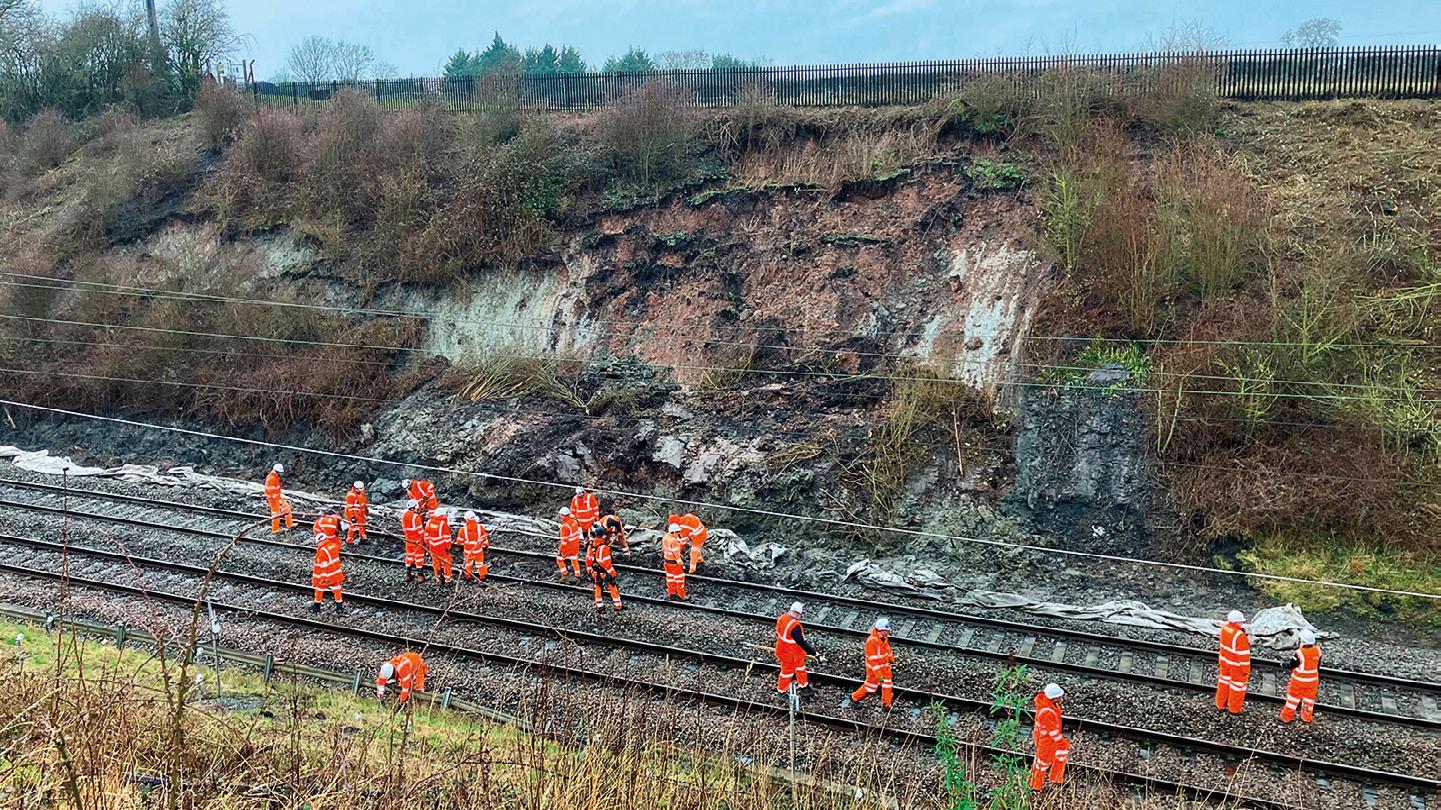
As well as targeting climate resilience, improving the broader day-to-day performance of the railway for passengers and freight users is a critical area for focus and investment, by the whole industry.
Commenting on train performance, Andrew said: “Train performance has been suffering and the industry must come together and make this, and tackling climate change, our main focus.
“Our role is to deliver a safe railway that people can rely on, whatever the weather, with trains that turn up and arrive at their destination on time, and where passengers have confidence they are in safe hands. This is what we must deliver daily and what we should, and will, be held to account for.”
Network Rail’s focus on improving train performance will include:
Reducing the impact of external factors, including weather impact, fatalities, trespass, and vandalism – one of the biggest causes of delays – by harnessing new technology.
Reducing infrastructure failures with over 5,000 kms of track being targeted for replacement or heavy maintenance as well as over 3,000 sets of points and heavy investment in new signalling.
Building the capability of the workforce with investment in training and new technology to improve decision making and cross-industry working.
Improving timetables to remove bottlenecks, conflicts and unrealistic timings at and between stations.
Faster recovery from incidents so fewer trains and customers are delayed when things happen.
Andrew concluded: “Over the next five years we aim to re-join track and train with a new structure at the heart of our railway with a guiding mind, at armslength from Government. This would create a simpler railway to better respond to the needs of rail users with its constituent parts joined up with common objectives and incentives, delivering for passengers and freights users.”
Delivering a better railway for passengers and freight users is at the heart of our new five-year investment plan

 Church Lawford landslip
Church Lawford landslip
- March 2024
Rannoch Viaduct
NETWORK RAIL 79 April 2024
Major flooding near Rotherham in South Yorkshire
Protech’s Paul Stidworthy and Chris White explain more about providing innovative solutions when it comes to track monitoring and surveys

Protech’ing the UK railways
emoving personal risk and providing better value for money.” That is the goal of automated monitoring according to Paul Stidworthy, Director of Technology at Protech Survey and Monitoring.
It is what he is striving to achieve at an organisation which has a proven track record in the accuracy of its track monitoring services, and in innovating to further improve its service and the technologies used.
“We are having quite an impact on the rail industry because what we are providing saves money, gets boots off ballast and makes the railway safer overall,” added Chris White, the company’s Engineering Director.
Chris and Paul are more recent additions to the Protech team having joined a little over a year ago, both complementing each other and driving forward the company’s ethos of combining innovation, best practice, and technological advances.
Paul is a technology expert and a software engineer by trade with an interest and background in industrial Internet of Things. He was brought
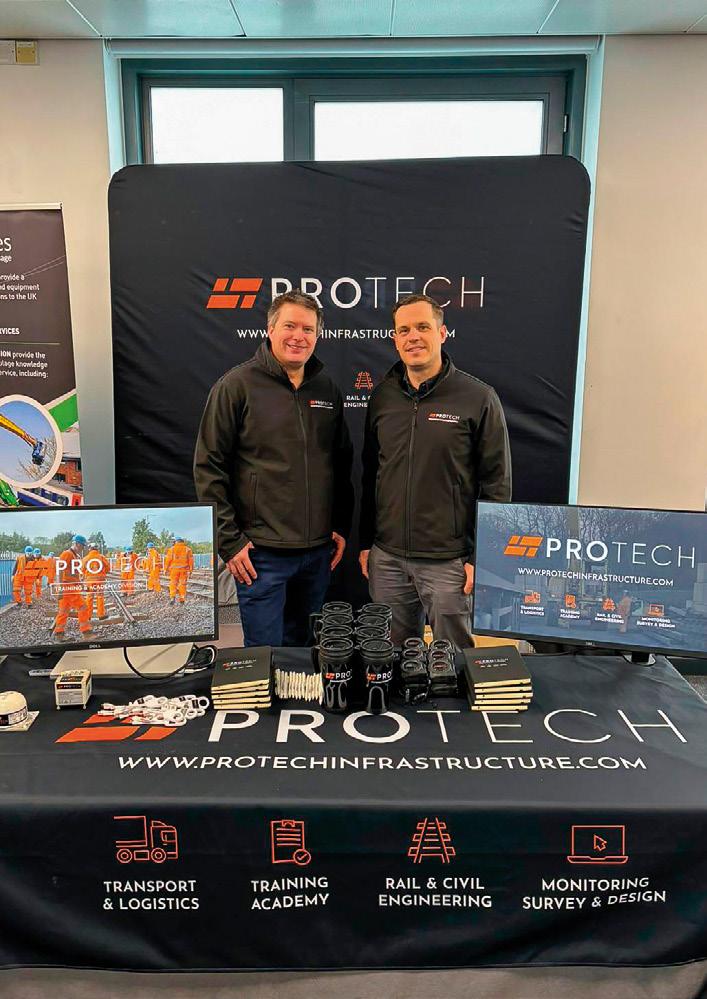
in to expand the organisation’s technology reach from just track monitoring. Chris, who manages the department for survey and monitoring, has a wealth of experience, including more than 15 years working for Transport for London and London Underground.
“Up until 18 months ago we were almost exclusively focused with automated monitoring on track geometry and now we’re bringing in a lot more technology, a lot more sensor types to expand our offering into civils so things like embankments, retaining walls and the structural monitoring of bridges,” said Paul.
“We understand the sensors and the data from such a low level and my background doesn’t just give us a depth of understanding about how these things work, but I’m also experienced in big data and analytics. We’re not just throwing these things over the wall and giving clients data, we’re understanding their lifecycles, making sure the systems are working correctly, and also interpreting the data in increasingly more useful ways for our clients.
“Clients don’t want to be blinded by science, “R
ADVERTORIAL 80 April 2024
they just want to know that everything is ok, but they want that to be backed up by the data, so it needs to be presented in a useful way. We look after the ecosystem, trying to minimise downtime and interpreting the data. We can do bespoke monitoring solutions as well.”
Chris added: “We’re a one-stop service for monitoring needs. Because of the company’s rail roots and all of the track engineering and construction experience that we have within our ranks, we can provide everything from helping the client define and set their requirements for the monitoring all the way through to specification and the deployment of that monitoring and then the ongoing management of it.
“We also have engineers within our ranks that are qualified Contractor’s Responsible Engineers, so we can provide the engineering technical experience to support that implementation and all the way through to removal. Effectively we can hold the client’s hand all the way through the monitoring process.”
Last year Protech was involved in a major project to replace the 160-year-old Nuneham Viaduct after monitoring equipment picked up significant movements in the viaduct due to emerging structural issues with the south bank abutment.
Paul and Chris were on site in Oxfordshire a day after receiving the call, with the monitoring equipment installed that evening.
“We ran around the county collecting the equipment from our suppliers,” said Paul. “We have a very good relationship with our clients and having installed the equipment we then provided a manual optical survey around the clock, 24 hours a day, in a three-shift pattern, so we covered all of their bases, including automated monitoring and surveying.”’
It was described by Network Rail as an intensive 10-week programme of work, but one which saw emergency repairs completed a day early.
“We’ve got a number of well adopted solutions that are used extensively throughout the railway that we have extensive stock of, which means we can be agile responding to last minute requests,” said Chris. “But another important side of the business is the hard work going on in the innovation side, and a real drive to develop new, better, more cost effective, safer solutions for the railway going forward.”
Paul added: “There is a lot of scope for improvement in the industry around monitoring and we are in a fantastic position to do that with the knowledge we have of the railways. The priorities for me are robustness, making sure that we can get the data out when the cellular network goes down, and to eliminate battery life problems.
“We do have a number of strands we are applying for patent protection for, but broadly speaking we are looking at sensors that don’t require gateways so we would eliminate that single point of failure. It feels like there is a race in the industry to deliver more and more sensitive sensors, but actually when you look at the problem, are these really solving the problem or just driving the cost up? We are looking at innovative ways of trying to cut costs in the sensors and radio technologies that we are using, battery chemistries, so across the board we are looking at all these problems and trying to find solutions.”
Protech Survey and Monitoring is part of Protech
Infrastructure, which overall offers practical engineering and construction expertise to the UK rail industry, specialising in rail engineering, design, construction, technology, and consultancy resourcing.
Founder Dan Rivers set up the business seven years ago, drawing on his 15-plus years of track delivery experience in the railway. Since then, it has grown organically to now offer design, survey, monitoring, and other services, with Chris and Paul enthusiastic to play their role in its growth.
“We are passionate about delivering a first-class service and so far it is working really well with some exciting plans in the pipeline,” said Paul.
Chris concluded: “We are in a great position come CP7 and continue to innovate and provide those innovative solutions widely across the industry and potentially across other industries. I want Protech’s name to be the first thought of nationwide organisations and to be seen as the expert and industry leader in what we do.
“We do have strong surveying expertise and I think as part of our monitoring solution there are some projects that are going to have relatively simple requirements that we can meet with the automated monitoring technology we already have at hand. But then there will be more complex requirements where we can apply our surveying expertise in combination with the remote monitoring to provide more bespoke solutions. It is about working with our clients to properly understand their requirements and coming up with solutions.”
Visit https://www.protechinfrastructure.com/ for more details.
We’re a one-stop service for monitoring needs



ADVERTORIAL 81 April 2024
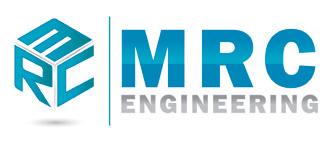
MRC Engineering has been providing telecoms design and consultancy services for UK rail infrastructure for the last decade.
Martin Hughes, Engineering Director, explains more
Design with project and product lifecycle in mind
Telecommunications is an essential part of safe, reliable, and efficient infrastructure, but is a discipline that often gets put to the bottom of project priorities, leading to delays, issues, and headaches further down the line.
Putting the industry on the right track is MRC Engineering, a provider of telecoms design and consultancy services for engineering stages 2-5 and as-built design for both operational communications and station information and security systems (SISS).
“We offer design and consultancy services; as a business, we try to take the ‘pain’ of telecoms away from our clients. Our strength is being able to integrate our engineers into their project team to ensure we deliver the best engineering solution for the telecoms infrastructure whilst also achieving the required scope and budget requirements,” said Martin Hughes, Engineering Director at MRC Engineering.
“Anyone who requires support with their telecoms scheme should come to us. Telecoms isn’t a ‘big’ discipline, like civils, OLE, signalling or track, we also don’t have a general need for large amounts of plant, but if you forget about it, it can lead to months of delays. Telecoms infrastructure changes aren’t limited to a physical area for a project like they are for other disciplines. So, you may find that we may need to modify infrastructure that is hundreds of miles outside the project boundary area.”
MRC Engineering was established in 2013 as a design consultancy driven by Martin’s passion to grasp an opportunity to provide something a little different for the industry. The business achieved RISQS status in 2017, providing its in-house telecoms design capability for the UK heavy rail network. It has also been audited and verified for all telecoms’ RICCL Codes.
“We take a holistic approach that addresses each project stage to ensure integration issues are addressed early on,” added Martin, who has nearly 20 years of experience in telecoms. “We work across the entire sector to deliver complex rail telecommunications projects from beginning to end.
“By combining the most up-to-date technical knowledge with years of experience, a strong work ethic, and thoughtful customer service, we deliver consistently excellent results and enjoy strong, longterm relationships with our clients.
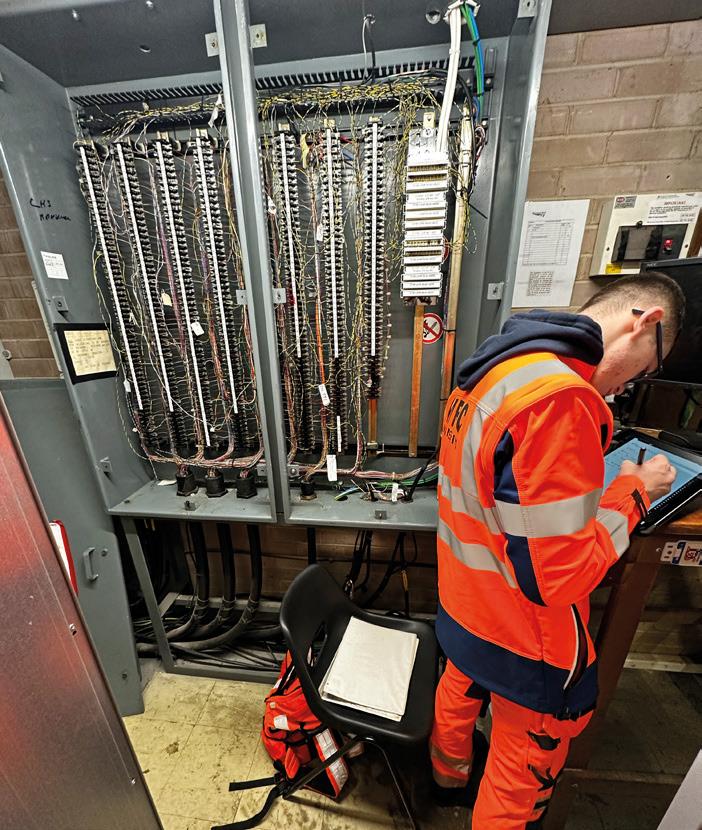

As a business we try to take the ‘pain’ of telecoms away from our clients
“There is a genuine desire to not just grow as a business but also to provide real value to the industry. With MRC you get a company that acts like a bolt-on project team with a passion to ensure the job is done efficiently and effectively, we will be there for our clients on each step of the ladder providing technical support and consultancy. At MRC Engineering, we take a keen interest in the handback process and the changes that were driven by site. We are constantly looking for new ways we can deliver more efficiently and effectively.
“We pride ourselves on offering a more personal approach, working with clients and their engineers to overcome any potential issues,” he said.
“We design with construction in mind, looking at how you would physically build it, maintain it, and ultimately renew it. We look at the whole lifecycle of anything we put out. Our drive is to make sure that anything we do benefits the telecoms infrastructure which in turn will benefit the railway. I’m not interested in fire and forget design; I personally stand behind each design we produce.”
It has already been some journey for Martin and the team who in little over a decade have overcome the COVID pandemic, and built the team up from two to seven, worked on some large schemes including the Northumberland Line, Agar Grove Repeater Relocation along with multiple new stations and Access for All design. They recently launched an apprenticeship programme, which is an indication of a passion to inspire and develop engineers of the future. In fact, Martin views his apprentices as the Designers and Senior Designer for CP8, and is keen to provide them with all the engineering and design skills needed to develop for their futures.
Martin said: “The aim is to continue on the journey of growing a sustainable engineering company that does have a different approach. We want to work on schemes that are providing value to the infrastructure.
“It is about relationships as well with route and infrastructure. We have developed a company that provides quality design product and engineering consultancy and design support, but we don’t rest on our laurels, and will continue to look at better ways to provide value to the infrastructure and our clients, continuing to be the company that can solve the problem of telecoms.”
Visit www.mrcengineering.co.uk/ for more details.
Legacy Copper Cable Correlation
ADVERTORIAL 82 April 2024
Telecoms Tag and Trace
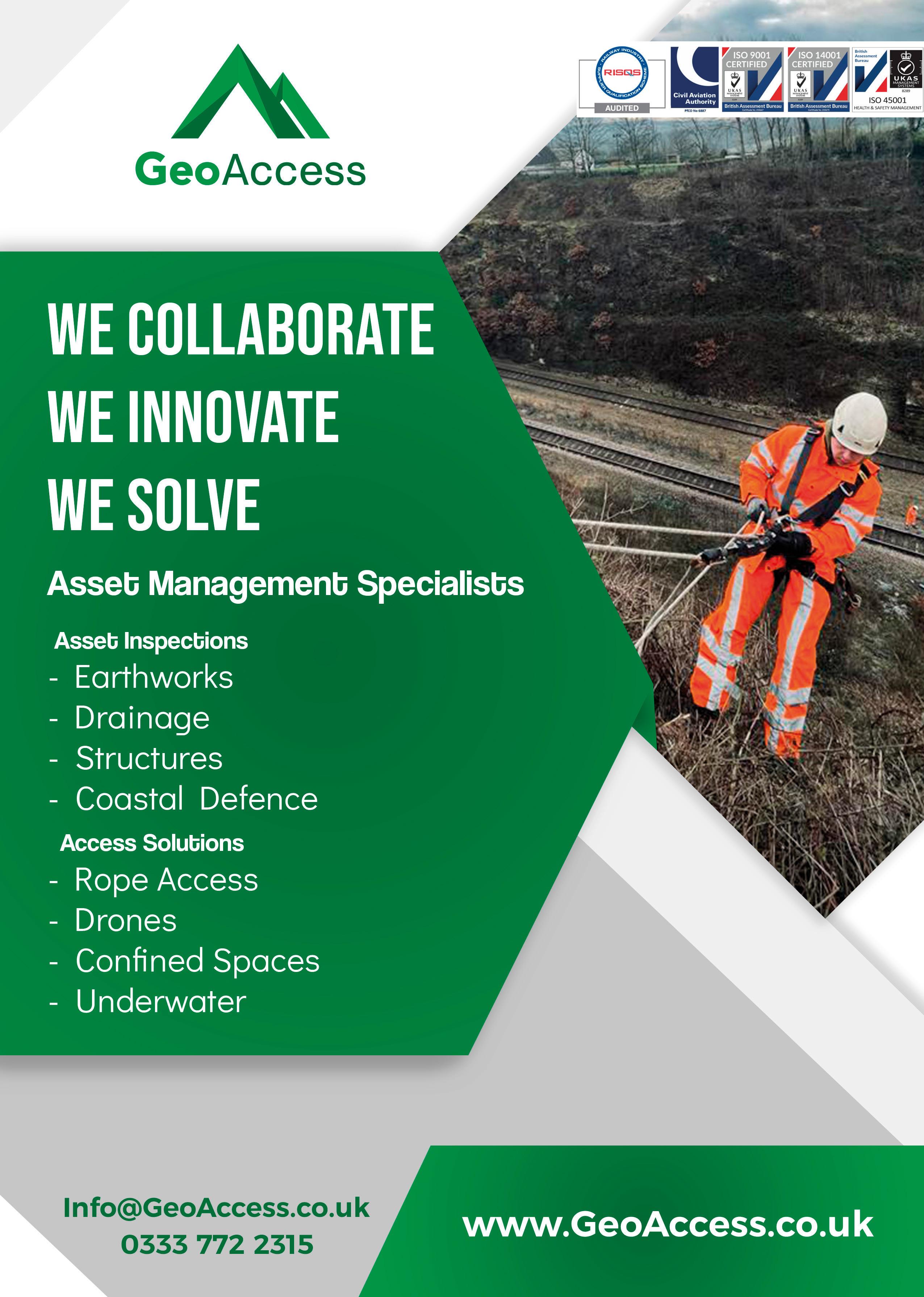


Drain Technology has the rail industry covered for all aspects of rail drainage, from surveying, cleaning, and unblocking right through to non-dig repair solutions. The team explains more
Unblocking all things drainage for the railways

Neglecting drainage systems can have significant cost and safety implications for railway assets leading to line closures and earthwork failures. Ensuring those risks are minimised is Drain Technology, an independent drainage, tanker, environmental, rail, telecommunications, and traffic management contractor with more than three decades of experience.
“We are experts in a range of services covering all aspects of rail drainage, from surveying, cleaning and unblocking right through to non-dig repair solutions such as lining and patch repairs,” explained Paul Ferrito, Managing Director. “Our company offers an impressive range of plant to assist in the process from combination jetvac tankers to portable camera equipment and remote access reels for those hard-toreach locations.”
Staff are highly trained including PTS AC-DCCR for the rail network, confined space, and OS19 surveying qualified for the drainage industry. They are also manufacturer trained to operate tankers.
The organisation, consisting of 60 passionate staff, has also recently achieved Railway Industry Supplier Qualification Scheme (RISQS) accreditation, something Matthew Andrews, Drain Technology’s Operations Director, hopes will further progress the impact the organisation can have on the rail industry, at a time when with more extreme weather, drainage has never been more important.
“We’re raising awareness of our expertise in the rail industry and highlighting how we are not just your standard national drainage company,” he said. “We’re agile and family run and pride ourselves on taking the

time for all of our clients. We are always very conscious of our client needs and requirements and that the work we are doing is important in ensuring a safe and efficient railway. To make sure this is the case we are responsive 24/7 and we are constantly investing in the best equipment to get the job done well.”
Drain Technology is based in Oxford covering the south and central areas of England and has previously carried out drain and pipe services covering Oxfordshire, Wiltshire, Gloucestershire, Northamptonshire, Warwickshire, Berkshire, Hampshire, Surrey, London, Hertfordshire, and Bedfordshire.
Its regional fleet of vehicles includes camera vans, jetting units, off-road 4x4s, and large combination and water recycling tankers as well as vacuum tankers for transporting liquid waste. The fleet undertakes a large variety of work for local regional clients right through to large national contractors and water authorities as well as local authorities. All vehicles are equipped with the latest systems to ensure all work is undertaken efficiently.
As well as a growing rail business, it has also recently launched a dedicated telecoms & traffic management division. The traffic management team specialises in ensuring an effective traffic flow and minimising disruption when road works or other obstructions occur, while the telecoms division works on large rural projects where access, deep chambers, or long lengths of ducts can cause issues.
Paul concluded: “I believe our unique approach to dealing with our clients and their needs is key to our success and why so many companies use us regularly for all their tanker and drainage requirements.”
Services to the rail industry
Cleaning and survey services:
Track drainage, catch pits and UTXs.
Pipework and ducting.
Water course and bridge culverts.
Car park surface channels.
Land drainage.
Planned maintenance.
Liquid waste removal and emptying:
Oil water drainage and interceptors.
Collector and pump sumps.
Soakaways.
Pump stations.
Car park and road gullies.
Flooding.
Confined space works:
Water infiltration sealing.
Tank and chamber inspections.
Man entry obstacle removal and repairs.
Visit https://draintechnology.co.uk/ for more details.
ADVERTORIAL 84 April 2024
Rail and infrastructure monitoring solutions

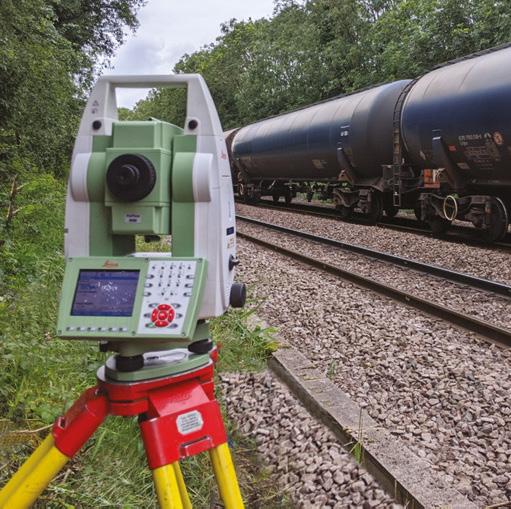
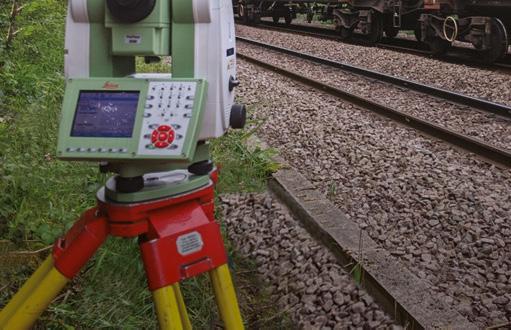
We provide design, installation and supply of monitoring solutions for infrastructure in multiple sectors including rail, construction, transportation, energy and environmental industries.
dywidag.com
more information please contact sales.uk@dywidag.com
For
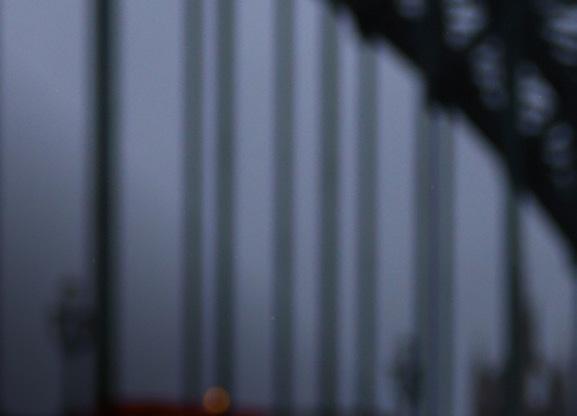



Richard Salkeld has been appointed Head of Communications and Partnerships at Lumo and Hull Trains, having previously worked at train operators LNER and Great Western Railway and as a journalist at ITV Tyne Tees



Relationships are key to understanding alternative perspectives
What attracted you to the position?
I’m incredibly proud of the North of England and have always embraced a passion for train travel. What Lumo and Hull Trains deliver for customers, how both companies are helping so many people directly or indirectly, and with headquarters in Newcastle and Hull, there were so many attractions about the new Head of Communications and Partnerships role.
As Lumo is a relatively new train company that’s doing things differently, it has a great story to tell. It’s attracting more people to rail, offering low fares, and achieving truly remarkable environmental credentials. It’s also based in Newcastle which is close to my home city of Durham and has a team of more than 100 colleagues. 95 per cent of those colleagues have come through apprenticeships.
Hull Trains has established a proud record for championing the benefits of open-access operations so it’s exciting and energising to work for two very different brands both delivering for passengers and people in the places they serve. It also sounds rather romanticised, but I’m always impressed at the ‘railway family’ approach by colleagues from across the industry when it comes to doing the right thing for customers and helping each other, so in many ways it doesn’t feel like a monumental change.
Could you explain what your role involves?
As this is a new role there’s so much scope to shape it – and I still am. Of course, there’s the usual communications activities, however there’s a real sense of personal investment, energy, and pride in how the teams here are making a difference. Being able to celebrate that work is motivating.
We recently made a six-year-old girl’s dreams of being in the driver’s seat of a train come true. It’s easy to forget how the railways touch people’s lives and the responsibility we have as custodians of the railway regardless of which organisation within it we work for.
My skills and experience in broadcasting are what I most enjoy bringing to the role. Communications and the media industry evolve and change with such speed, and as a communicator, it’s essential to keep across the changes and to be able to understand what’s needed to enable the railway to feature prominently and positively in people’s minds. Recent changes to BBC Local Radio, new news outlets such as ‘The QT’ and news channels switching to nonlinear platforms or using technology to seamlessly switch between domestic and international output show the varieties of rapid change within the news media during the past year.
The popularity of Lumo and Hull was undeniably an attraction. The two businesses are growing record
levels of customers, contributing millions of pounds to local economies, and have so many advocates locally and nationally, so it’s brilliant to meet with people face to face to help achieve shared goals. I also enjoy being out and about as much as I can with those shaping the communities across the routes Lumo and Hull Trains operate.
What are your aims and aspirations?
I’m most enjoying meeting people in person in their places of work or some of the great venues such as Edinburgh’s City Chambers, The Glasshouse International Centre for Music in Gateshead, or Queen’s Gardens in Hull, which have been three early highlights. It helps inform your thinking and better appreciate the positive change simply hosting an event in a venue can make for an organisation working to preserve or promote a property, such as the incredible Newcastle Common Room, where we held a recent stakeholder event surrounded by reminders of the region’s proud industrial heritage and pioneering spirit.
From a communications perspective what have been the biggest changes/challenges you’ve seen?
In my ten years working in rail comms, social
Image: Lumo
April 2024 86 MOVERS AND SHAKERS
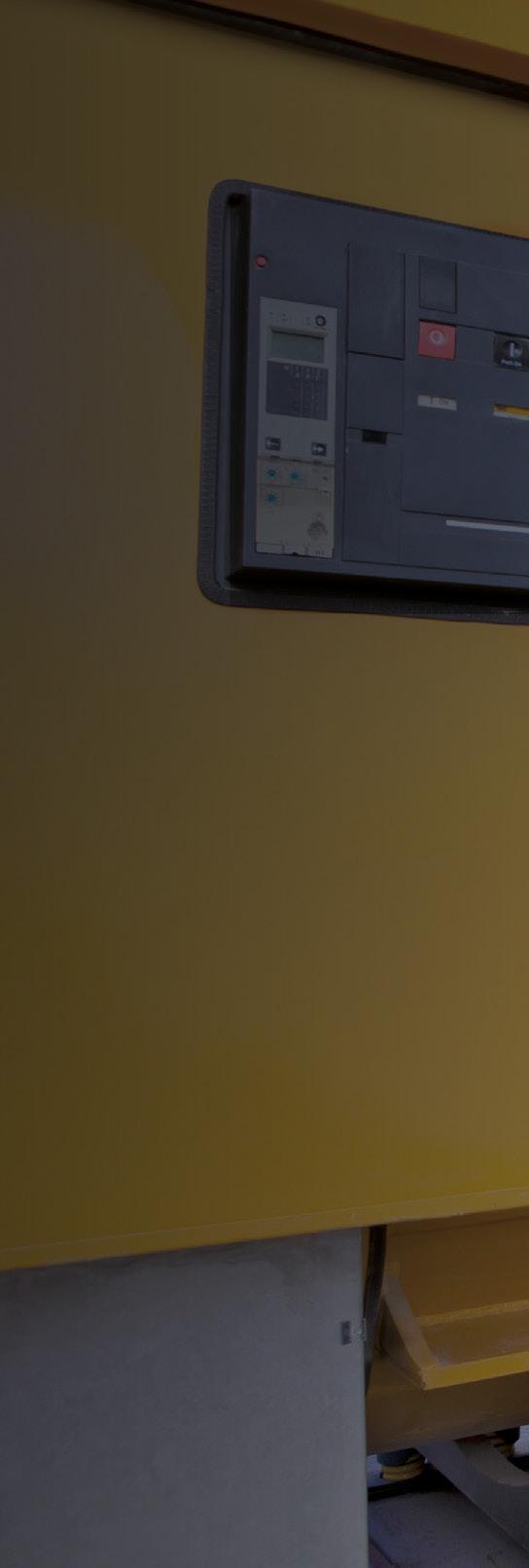



SAFER
GREENER
SMARTER

5 FOR THE PRICE OF 4
BUY FOUR PACKS OF 10 OIL CONDITION
MONITORING TESTING KITS AND GET A PACK OF 10 TESTING KITS FREE!
THIS IS THE PERFECT OPPORTUNITY FOR BUSINESSES OPERATING IN THE OIL AND GAS INDUSTRY OR TRANSPORTATION
SECTOR TO ENSURE THE HEALTH AND EFFICIENCY OF THEIR EQUIPMENT
In the oil and gas industry, regular oil condition monitoring is crucial to prevent costly breakdowns and ensure optimal performance. Our testing kits allow you to easily analyse the condition of your oil, identifying any contaminants or abnormalities that could lead to equipment failure. By catching potential issues early on, you can save time, money, and avoid unnecessary downtime.

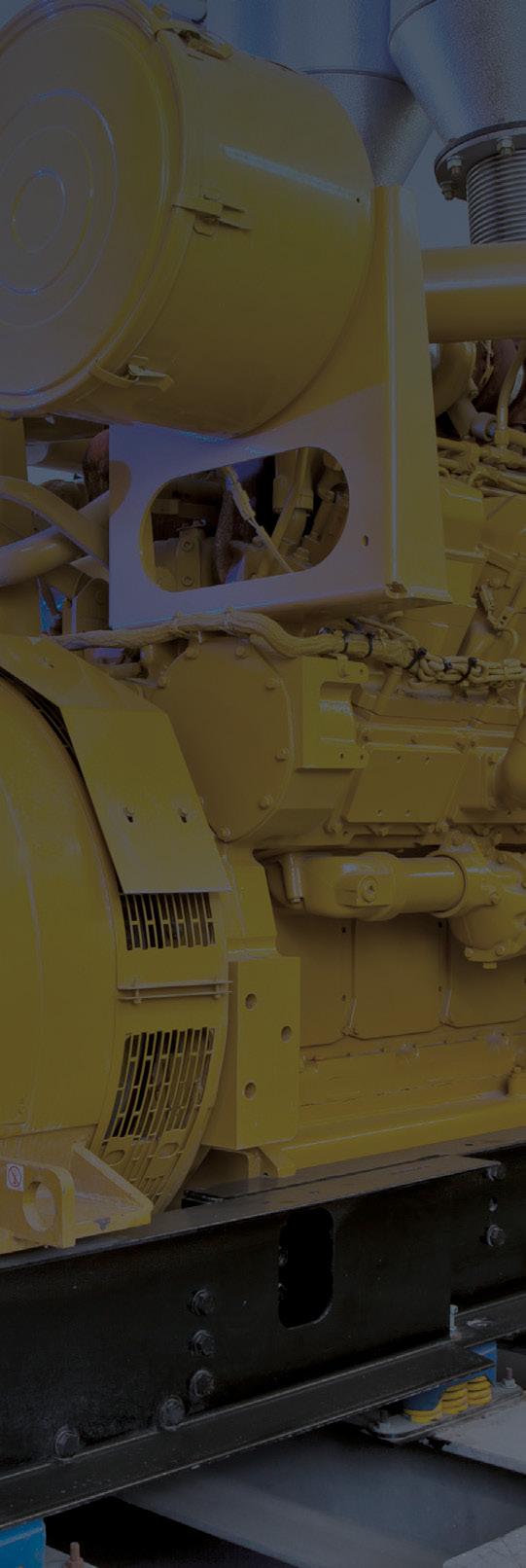
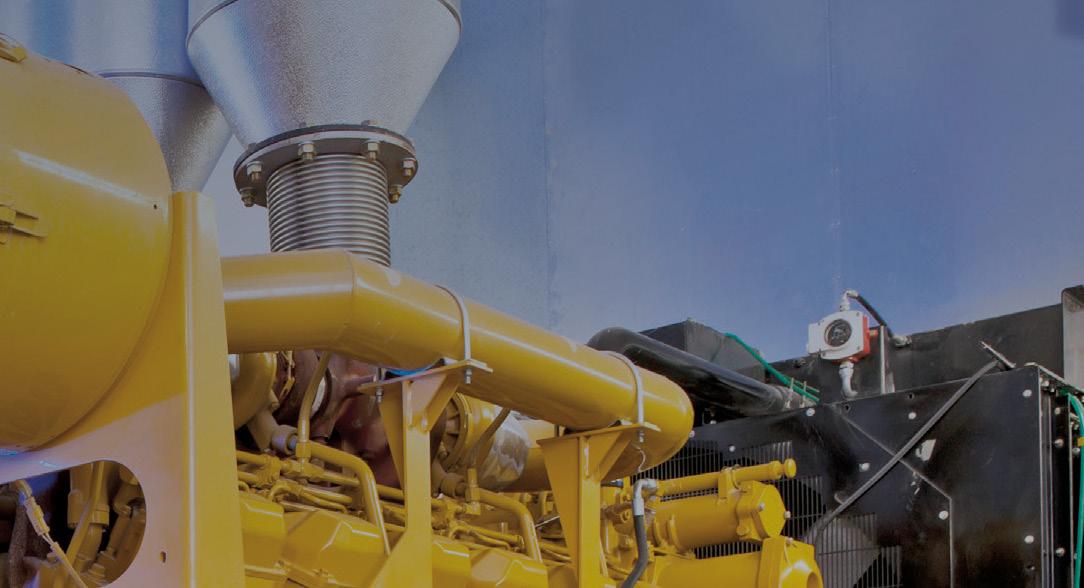
Fast and accurate analysis of lube oil, grease and hydraulic fluids with SGS



Transportation companies also rely on oil condition monitoring to keep their vehicles running smoothly. Whether you own a fleet of trucks, buses, or even personal vehicles, our testing kits can help you maintain top-notch performance. By regularly checking the condition of your oil, you can detect any signs of wear or contamination that could compromise your engine’s efficiency and longevity.
Regular oil condition monitoring is crucial to prevent costly breakdowns and ensure optimal performance. Our testing kits allow you to:
• Easily analyse the condition of your oil
• Identify any contaminants or abnormalities that could lead to equipment failure
Catch potential issues early and you can save time, money, and avoid unnecessary downtime.
Don’t miss out on this fantastic deal. Invest in the future of your business by purchasing our oil condition monitoring testing kits today.
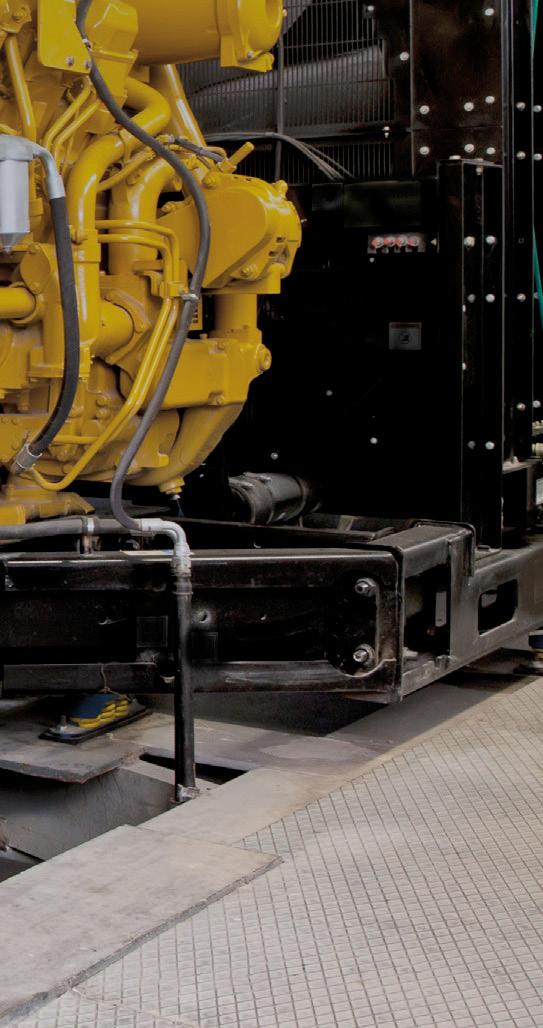
Take control of your equipment’s health and efficiency - order now!
We are SGS – the world’s leading testing, inspection, and certification company. We are recognized as the global benchmark for sustainability, quality, and integrity. Our 98,000 employees operate a network of 2,650 offices and laboratories, working together to enable a better, safer, and more interconnected world.
CONTACT US:
Rossmore Industrial Estate, Inward Way, Ellesmere Port CH65 3EN
+44 151 350 6600
© SGS Société Générale de Surveillance SA. (2023)
media has been one of the biggest changes in how we effectively connect and communicate with audiences. However, the speed required to accurately respond, compete against misinformation, and achieve coverage as well as positively engaging with audiences or identifying an opportunity is more critical than ever, as consumers increasingly make up their minds very quickly.
It could be something as simple as the tech we use to reach people or understanding the media landscape of increasingly syndicated and centralised newsrooms – some commercially driven.
Impactful imagery is something I’m passionate about from my days as a television journalist. Consumers now make judgements much more with emotion over evidence or feeling over facts so capturing dynamic, imaginative and inspirational imagery in photographs or video is often overlooked as a tool to celebrate what’s best about Britain’s railways. I’m beyond proud of the three consecutive PR Week Award wins during my recent years working on the East Coast Main Line following the memorable Azuma launches in 2019.
It can be uncomfortable reading that other industries are sometimes ahead of rail, whether that be in terms of tech or the ability to set a clear vision for the future. Sometimes what we consider

National rail contractor, QTS Group, has announced that Andy Steel, currently the company’s Operations Director of Civils and Geotechnical, has been appointed as the new Managing Director. The news follows the appointment of the current MD, Alan McLeish, to Group Chairman.
Alan, who founded QTS in 1992, will remain an integral part of the business as he takes up the position of Group Chairman, which will allow him the opportunity to provide a more strategic role within QTS Group as the company enters into Network Rail’s Control Period 7.
Andy joined QTS as Design Manager back in 2012, moving up through the company to Operations Director in 2016, where he’s been responsible for the civils and geotechnical departments.
Andy said: “Having spent over 12 years at QTS Group, it really feels like home to me, so it is an honour to have the opportunity to take over the MD position from Alan. While they are big shoes to fill, I’m excited about the challenges ahead.”
to be pioneering or innovative can be routine elsewhere. However, our recent announcement to eliminate plastic bottles onboard our services truly is transformational. Lumo is the first major travel company to make this move and I expect other train companies and airlines will now follow our approach as consumers see it can be done. As an industry we need to better work together if we’re serious about making real progress, especially over other modes of transport where, for example, we know we already have a great story to tell on carbon saving.
How important is it to create partnerships to raise awareness of Lumo and Hull Trains and increase passenger numbers?
In today’s world, partnerships are key to making real progress. In my first few weeks in the role, I’ve been enthused at how the work we do with our partners is helping make a real difference to people’s lives. Whether it’s helping take children from the West End of Newcastle to Westminster, vital support for local tourist attractions such as Beamish Museum, or how we’re partnering with the Community Rail Network to host the 2025 Community Rail Awards in the North East, we couldn’t do it without working together. Directly or
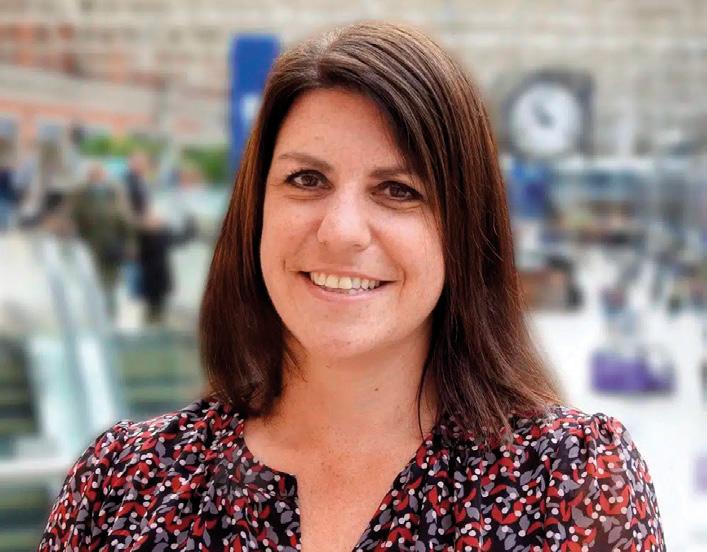
Claire Mann joins Transport for London as Chief Operating Officer
Claire Mann has returned to Transport for London (TfL) to lead as the organisation’s Chief Operating Officer.
Commissioner, Andy Lord said: “Claire’s outstanding experience in transport and customer service will be invaluable. Her customer-centric approach aligns perfectly with our vision for a greener, stronger London.”
She was most recently Managing Director of South Western Railway, but had previously been Director of Bus Operations and General Manager for the Docklands Light Railway (DLR). She succeeds Glynn Barton.
At a crucial time for London’s transport network as it supports the capital’s recovery from the pandemic, Claire is responsible for ensuring TfL’s directly operated and contracted services and operations are planned and managed effectively to provide a safe, efficient, reliable, and high-quality service to customers.
indirectly, we’re enhancing economies, supporting communities, and delivering impactful social value.
How optimistic are you for the future of the industry?
The rail industry depends on the professionalism and passion of the people within it. I’ve been fortunate to have many great role models who also continue to support and encourage me in my career, and they know who they are; for that, I’m ever grateful. It’s easy to lose sight of customer challenges or how other modes are finding new ways to compete. That’s why I think it’s a good thing never to become too comfortable in any one place.
Recent times have provided hurdles for the industry to overcome. Relationships are key to understanding alternative perspectives. In my role, I’m still learning so much from carefully listening to a range of voices - from new customers who are maybe travelling for the first time due to the low-cost tickets enabling social mobility to partners and stakeholders who have clear ambitions, needs or ideas about where we can help. That’s why one of the best things about my job is meeting individuals from so many places and helping share their stories in ways that connect, excite, inform, and truly engage people, and are relevant to their lives.

Northern appoints experienced new Head of IT
A former British Library and housing association executive is set to join train operator Northern as its new Head of IT.
David Sparling, who hails from Wakefield, West Yorkshire, has almost 30 years of IT industry experience. He began his career as a Software Developer at First Direct bank, and went on to hold a number of senior IT roles at HSBC, managing people and projects across the world.
More recently, he was Head of IT at The British Library, before taking on the role of Chief Technology Officer at Anchor Trust, a specialist housing and care provider for people in later life.
He said: “I’ve been interested in the railway most of my life and I’m really excited to join Northern.
“I am looking forward to getting to know how the business works, to see what opportunities technology can bring to support colleagues and customers.
“I’m also looking forward to getting into the industry and seeing what my experience in leading technology can bring to it”.
Image: QTS
Image: Northern QTS Group announces new Managing Director
MOVERS AND SHAKERS 88 April 2024
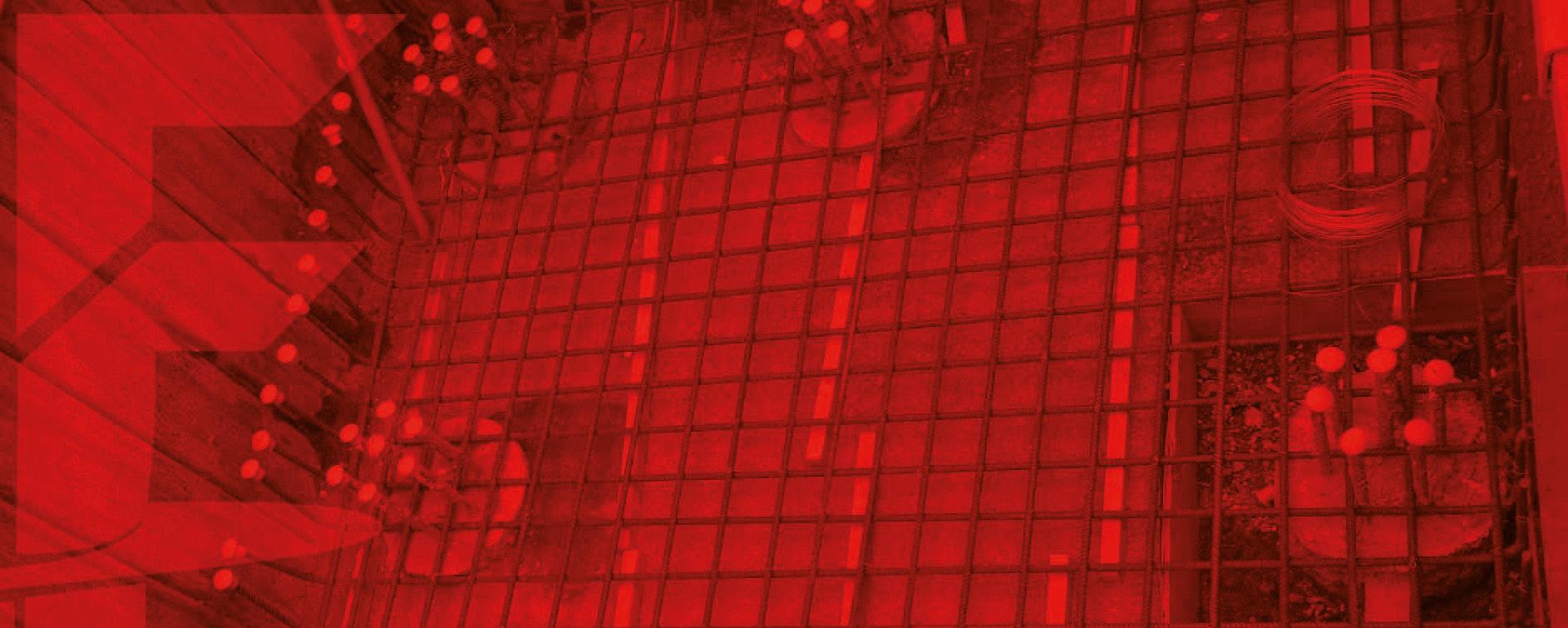
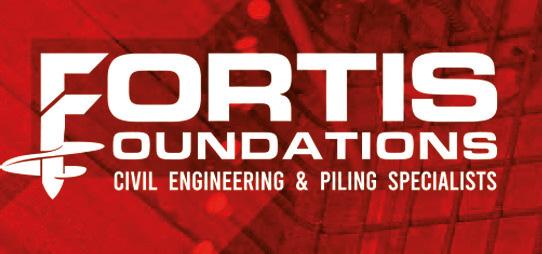
Providing civil engineering products and services, with expertise in foundations and piling to the Rail, Civils, Energy, Residential and Water sectors

With over 20 years of Rail and Construction industry experience, our familyrun company provides expert advice and cost-effective solutions to all sectors looking for experts that they can rely on. Delivering safe and sustainable solutions at the forefront of innovation and technology, ensuring the highest quality results first time, every time. We can assist clients from advisory and design to compliance and delivery, providing tailor-made solutions to meet clients’ needs.
Installation of all Piled foundation - bored, driven & screw piles
Erection and installation of OHL Gantry structures (masts, booms)
RED, LOC and DNO foundations and platform installations (GI, Design & Install)
Platform renewals and refurbishments
Cess walkways and throughing routes
Fencing and Access stairways
Site compound establishment and access road
Trial Holes
Excavation and installation of concrete bases
Embankment stabilisation & Cess retention
De-vegetation
Piling and Soil nails
Rabbit Netting
Gabian Walls

Visit our website for more information or give us a call:
01442 731 321
info@fortisfoundations.com
www.fortisfoundations.com








Concorde Drive, Gadebridge, Hemel Hempstead, HP2 4AW
5
An inspiring range of initiatives, delivered by community groups, partnerships, and volunteers across Britain, have been celebrated at the 2024 Community Rail Awards
Community-led projects connecting people with rail recognised at national awards
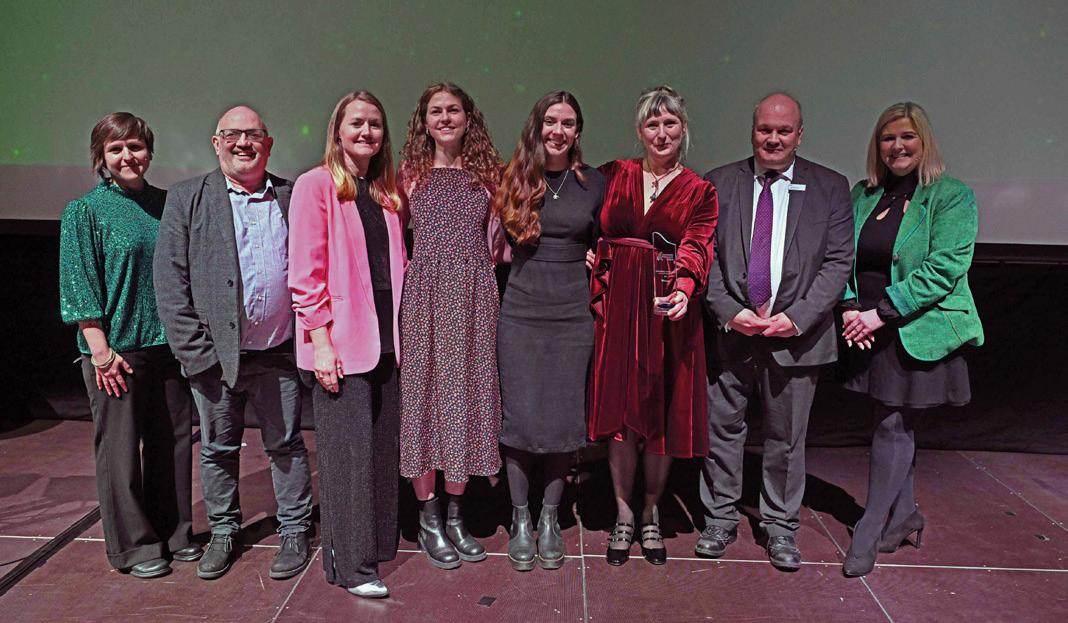
More than 430 guests came together to celebrate a diverse array of projects influencing positive change and supporting diversity, accessibility and inclusion, sustainable travel and tourism, youth and schools engagement, and community-led station improvements at the 19th annual Community Rail Awards.
The Community Rail Network event, held at Swansea Arena last month, saw 19 winners chosen from 180 entries, demonstrating the impact of the community rail movement, which empowers communities, enhances local places, and enriches lives.
The awards, with headline sponsors Transport for Wales and Great Western Railway, were addressed by Transport Ministers from the UK, Welsh, and Scottish Governments, plus senior rail industry leaders.
The winners
The Outstanding Contribution to Community Rail Award was awarded to both:
Gloucestershire Community Rail Partnership (CRP), which over the past year has engaged 1,000 young people through rail trips and creative activities, improved travel confidence for those facing accessibility barriers to rail, worked with housing developers to encourage sustainable and active travel networks, and developed Train Tripper, a website promoting sustainable travel and rail use.
Coöperatie Stationspark Deurne, a station volunteer group in the Netherlands which has

not only established an impressive range of initiatives at its station – including a bicycle service point, community garden, artwork, book exchange and Fairtrade catering facility – but is now leading efforts to develop an official network of groups across the rest of the country, helping put community rail on the world map.
In other categories, Community Rail Lancashire took the Involving Children and Young People Award for the Feel Good Field Trips project, which has engaged more than 2,000 young people in rail journeys, while the Involving Diverse Groups prize was won by Platform and its Mighty Traveller scheme, which builds travel confidence for young people with disabilities.
The Leeds-Morecambe CRP and The Camberwell Society triumphed in the Community Creative Projects and Station Arts category for their activities at Heysham Port and Denmark Hill stations respectively, while the Reading to Basingstoke CRP took the Small Projects Award for Reading and Petersfield Station Winter Warmers, an initiative that established stations as warm and welcoming hubs for those in need, including refugees and homeless people.
The Community Rail Education Network won Most Effective Communications Campaign for Arlo’s Adventures: There and Back, a children’s book promoting rail safety that has seen more than 90,000 copies distributed across the network, while Severnside CRP, GWR Reach, and Network Rail Cultural Fusion scooped the Tourism and Leisure Award for their Carnival Train.
The Cambrian Railway Partnership took the Best Community Engagement Project for its Inclusive Bi-Lingual Window Seater project, and the Influencing Positive Change and Sustainability prize was won by the Community Rail Education Network and CrossCountry for Travel Green with Daffnee Green, a multimedia resource for primary schools promoting sustainable travel by rail.
Bricket Wood Station Heritage Trust took the Most Enhanced Railway Spaces prize, the Friends of Hindley Station won the ‘platinum’ award in the ‘It’s Your Station’ category, and the Friends of Goostrey Station won the photo competition.
Barbara Mine of The Friends of Bishopstone Station was recognised in the Outstanding Volunteer Contribution category for her tireless efforts in developing the Bishopstone Community Hub, and the Community Rail Network Board’s Special Recognition Award went to Heather Cullimore, of Severnside CRP, for her work in engaging diverse communities and enabling everyone to enjoy the benefits and freedom of rail travel.
Jools Townsend, Chief Executive of Community Rail Network, said: “Our Community Rail Awards give deserved recognition to community rail partnerships, groups, and volunteers across Britain, and now beyond. They celebrate community rail’s role in building stronger, fairer, greener communities, served and connected by their railways and wider sustainable transport networks. Our congratulations go to all our winners, and thanks to everyone who supports and champions community rail across the rail and transport field, helping the movement to go from strength to strength.”
AND FINALLY... 90 April 2024
Gloucestershire CRP receive their Outstanding Contribution to Community Rail award The community garden at Coöperatie Stationspark Deurne in the Netherlands

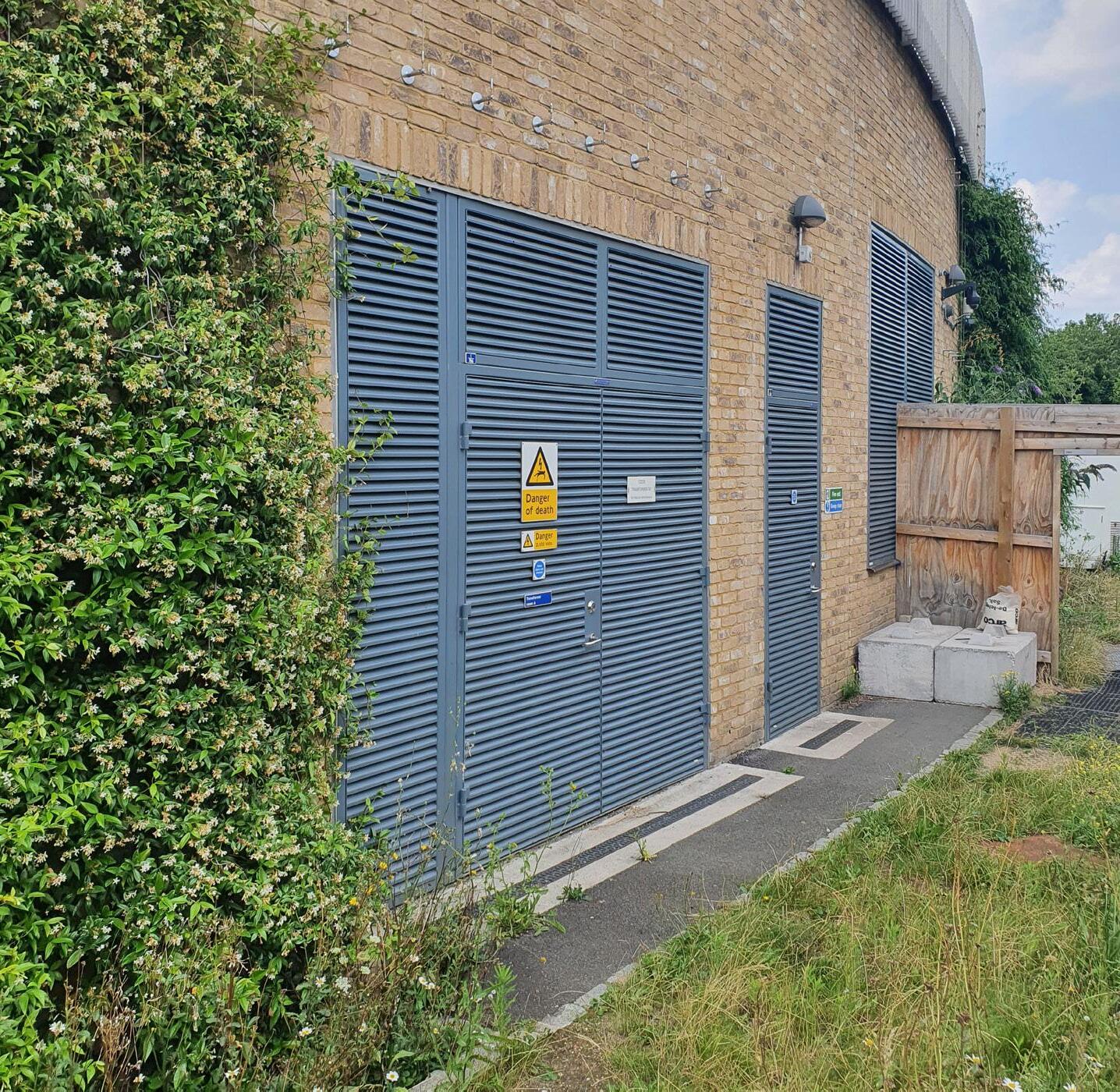
Manufactured, Tested, Specified, Certified Security, Fire & Blast Doors, Louvre Panels and GRP Platforms/Walkways for the Rail Industry
With clients and projects such as TFL, EuroTunnel, DLR, Crossrail and HS2, Sunray is the Rail Industry partner when specifying Steel Door and associated products. Our consultative and practical approach ensure bespoke product solutions to meet performance needs without compromise to design.
With exceptional Door Size Ratios, Fire Ratings of 1-4 hours plus overrun and Security Levels 1-6 provide total assurance in today’s built environment together with extensive hardware and locking options, vision panels and overall RAL colours.
● SPECIALIST RAIL SOLUTIONS
● REFERENCE PROJECTS
● BESPOKE SOLUTIONS
● INSTALLATION & MAINTENANCE
● TECHNICAL SUPPORT
- Overground, Underground/TFL, DLR
- Crossrail, DLR, TFL, EuroTunnel
- Tailored designs to meet project criteria.
- Qualified, Compliant & Trained Operatives
- Consultative advice with complete back up concept to installation.
For more details, call our specialised team to discuss your particular project on:
01233
639039
sales@sunraydoors.co.uk
www.sunraydoors.co.uk



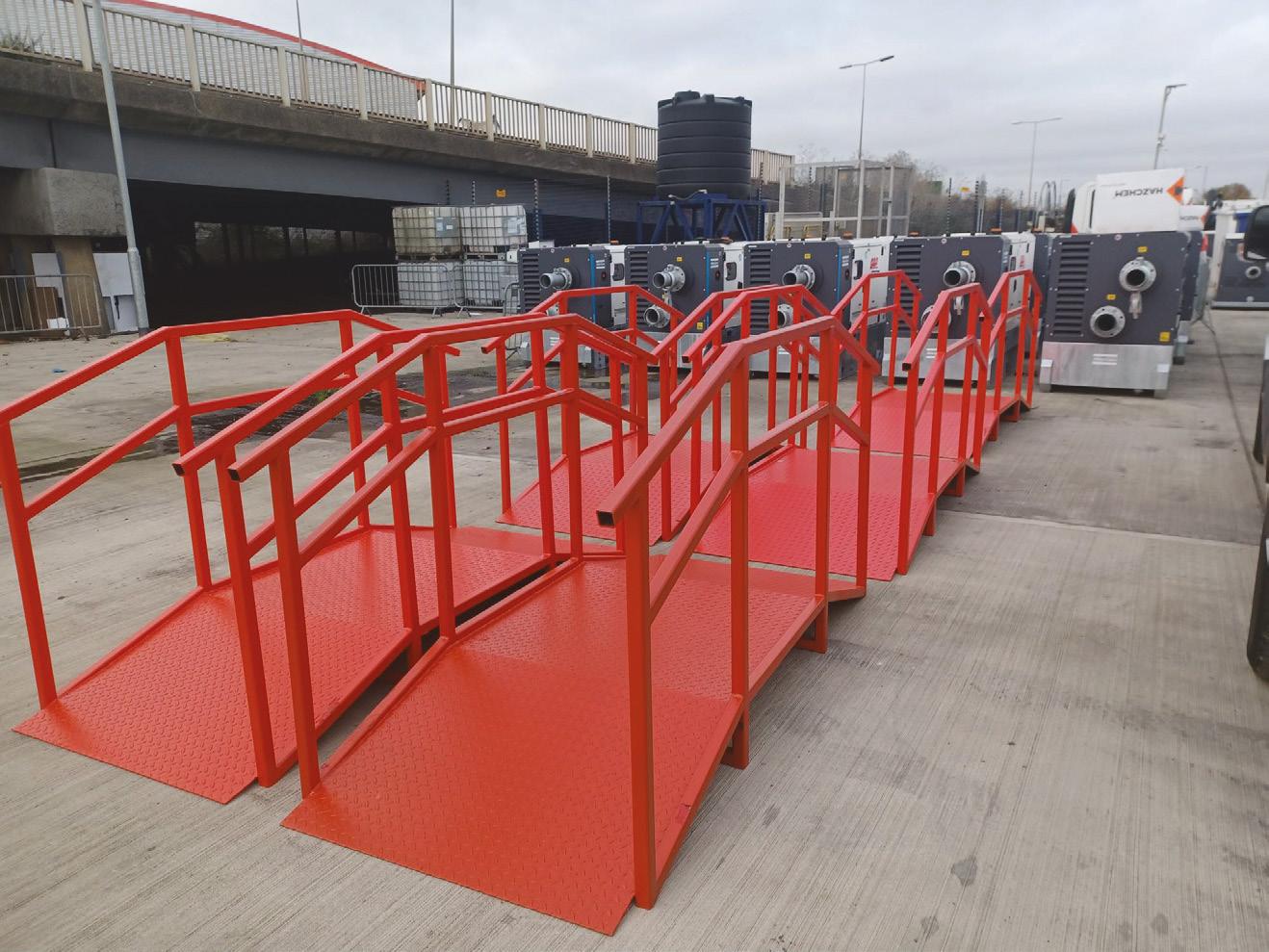
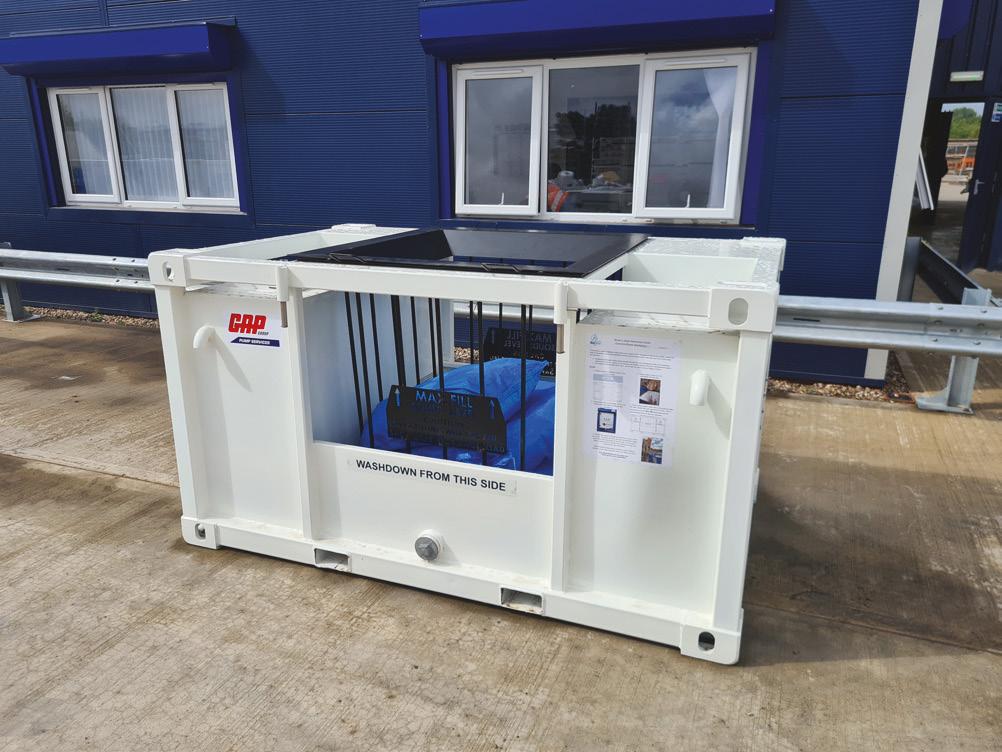
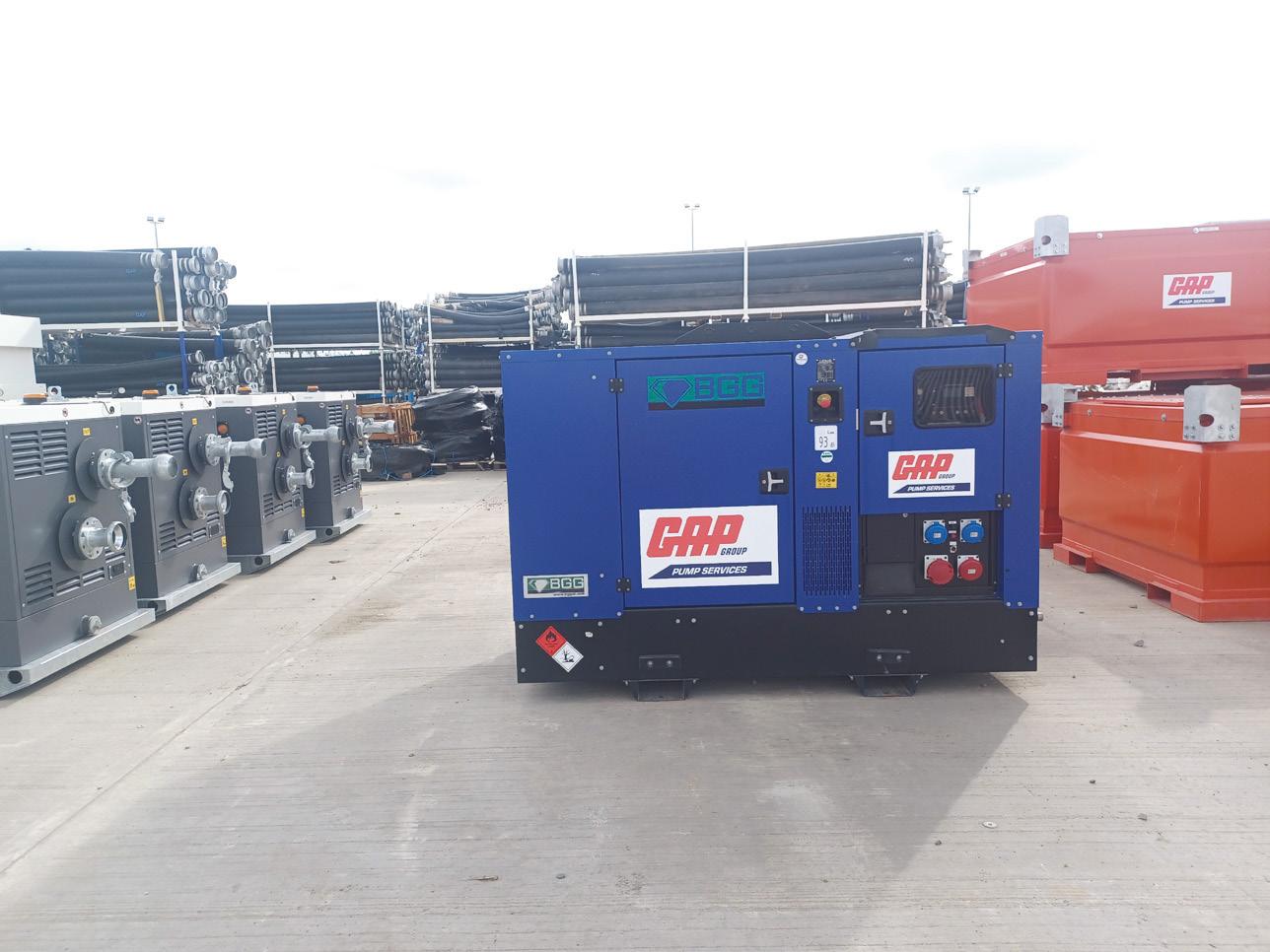


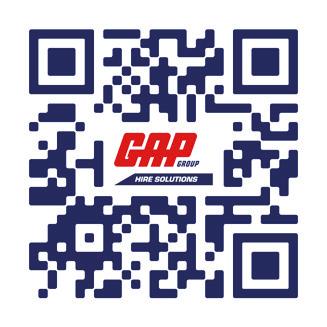
PUMP SERVICES
Rapid Response Pumps

















































































































 Longhorn Editor
Longhorn Editor


































































































































































































































































































































































































































































 Church Lawford landslip
Church Lawford landslip





























































